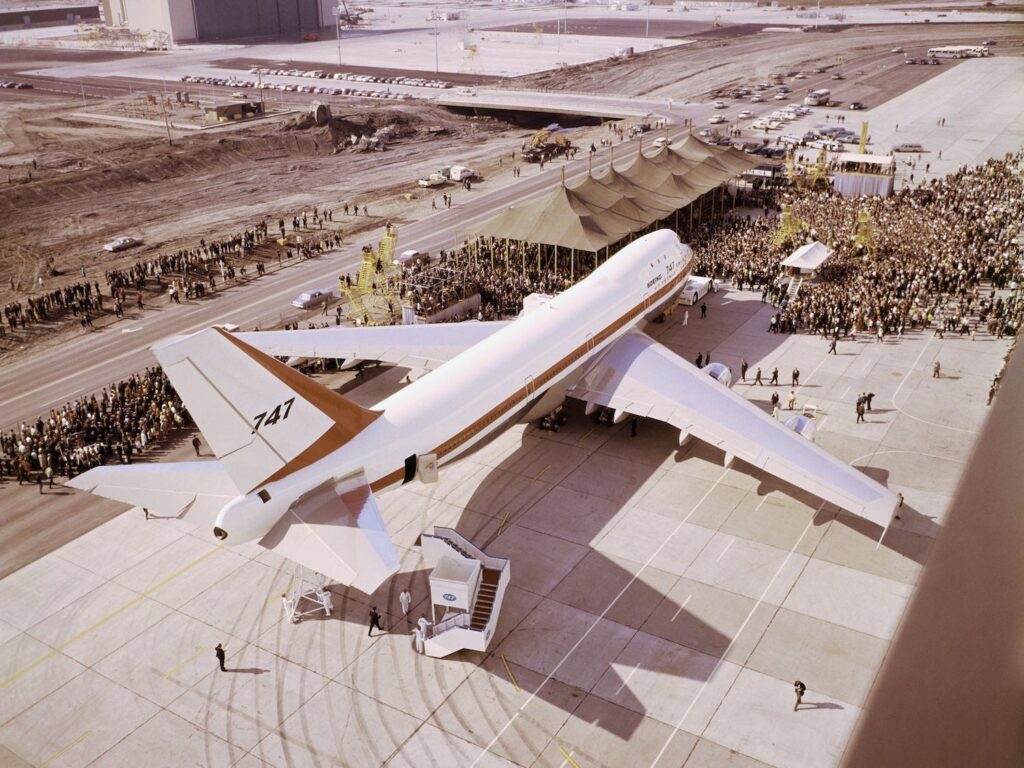- Begin december is de laatste Boeing 747 van de band van de Everett Factory in de Amerikaanse staat Washington gerold.
- Het markeert het einde van een revolutionair tijdperk waarin de manier waarop mensen reizen voorgoed veranderd is.
- De Boeing 747 maakte vliegen toegankelijk voor de massa, had als eerste toestel een bovenverdieping en zal ook altijd herinnerd worden om de karakteristieke bult.
- Lees ook: Ik verbleef in een tot hotel omgebouwde Boeing 747 in Zweden, met een cockpit-suite en kamers in de motoren
Na ruim vijftig jaar is er een einde gekomen aan het tijdperk van de Boeing 747. Op 6 december rolde in de Boeing Everett Factory in de Amerikaanse staat Washington het laatste 747-toestel van de band.
De Boeing 747 vloog voor het eerst in 1969 en maakte vliegen bereikbaar voor de massa. Ook vrachtvervoerders hebben gretig gebruik gemaakt van de legendarische jumbojet.
Tijdens de coronapandemie hebben de meeste luchtvaartmaatschappijen het toestel al uit de lucht gehaald en inmiddels zijn er al heel wat 747’s omgebouwd tot hotel, bar of toeristische attractie.
Maar de erfenis van de ‘Queen of the Skies’ is blijvend. Business Insider zet in de fotogalerij hieronder zeven manieren op een rij waarop de Boeing 747 de luchtvaart voorgoed veranderd heeft.
Op deze 7 manieren heeft de Boeing 747 de luchtvaart voorgoed veranderd
Op deze 7 manieren heeft de Boeing 747 de luchtvaart voorgoed veranderd
-
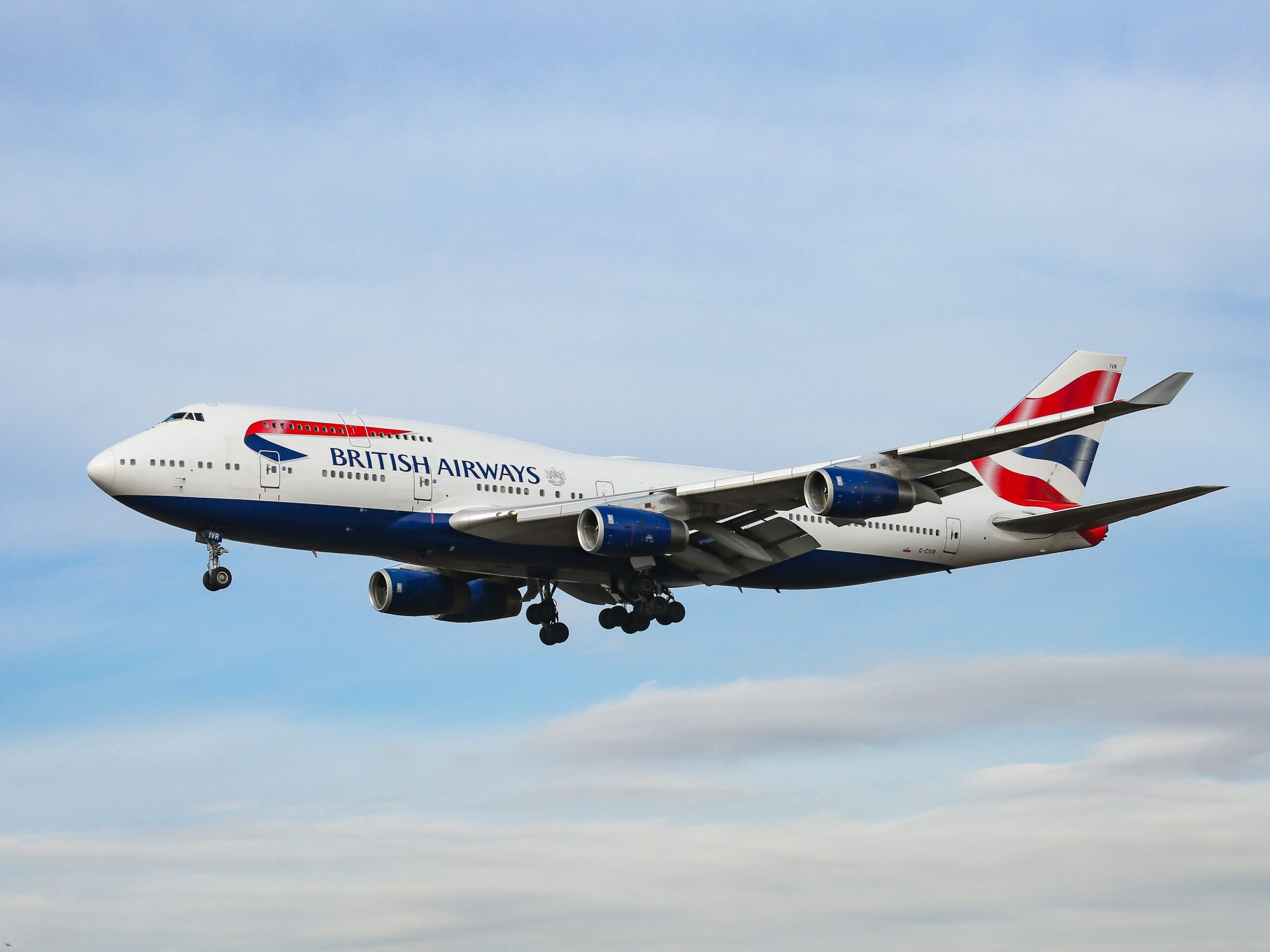
The Boeing 747 is one of the greatest feats of aerospace engineering and was an global success for the American planemaker.
Source: Boeing
Nicolas Economou/Getty Images
-
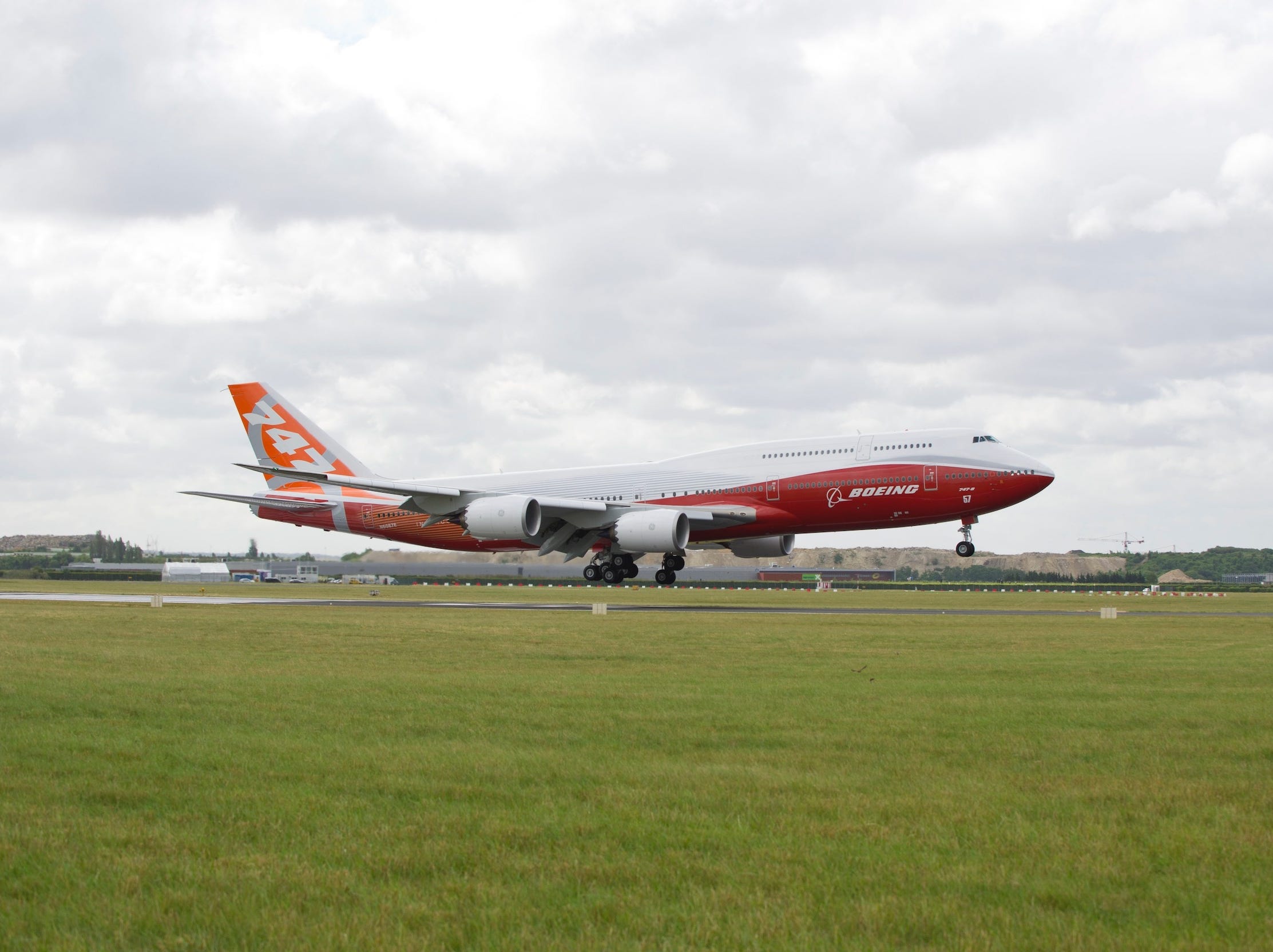
For over 50 years, the aircraft shuttled travelers to nearly every continent across the globe, connecting people to more places than ever before.
Source: Boeing
Boeing
-
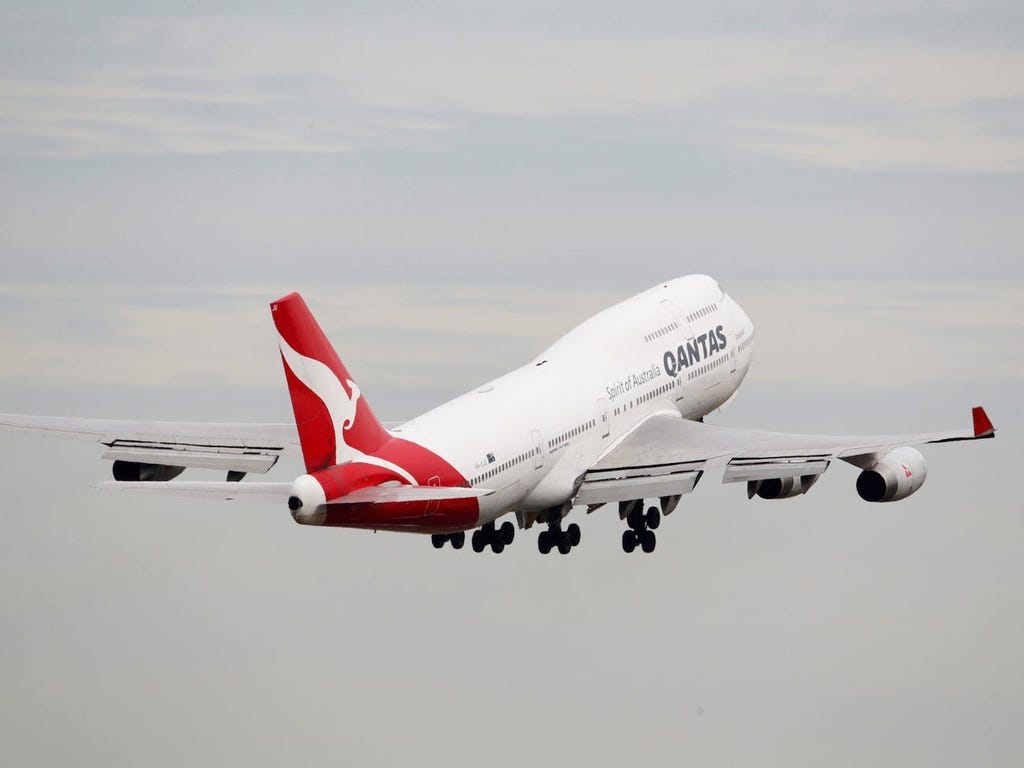
No longer did customers have to stop for fuel on flights between the US and Asia or Australia — the 747 could operate these routes nonstop.
REUTERS/Daniel Munoz
-
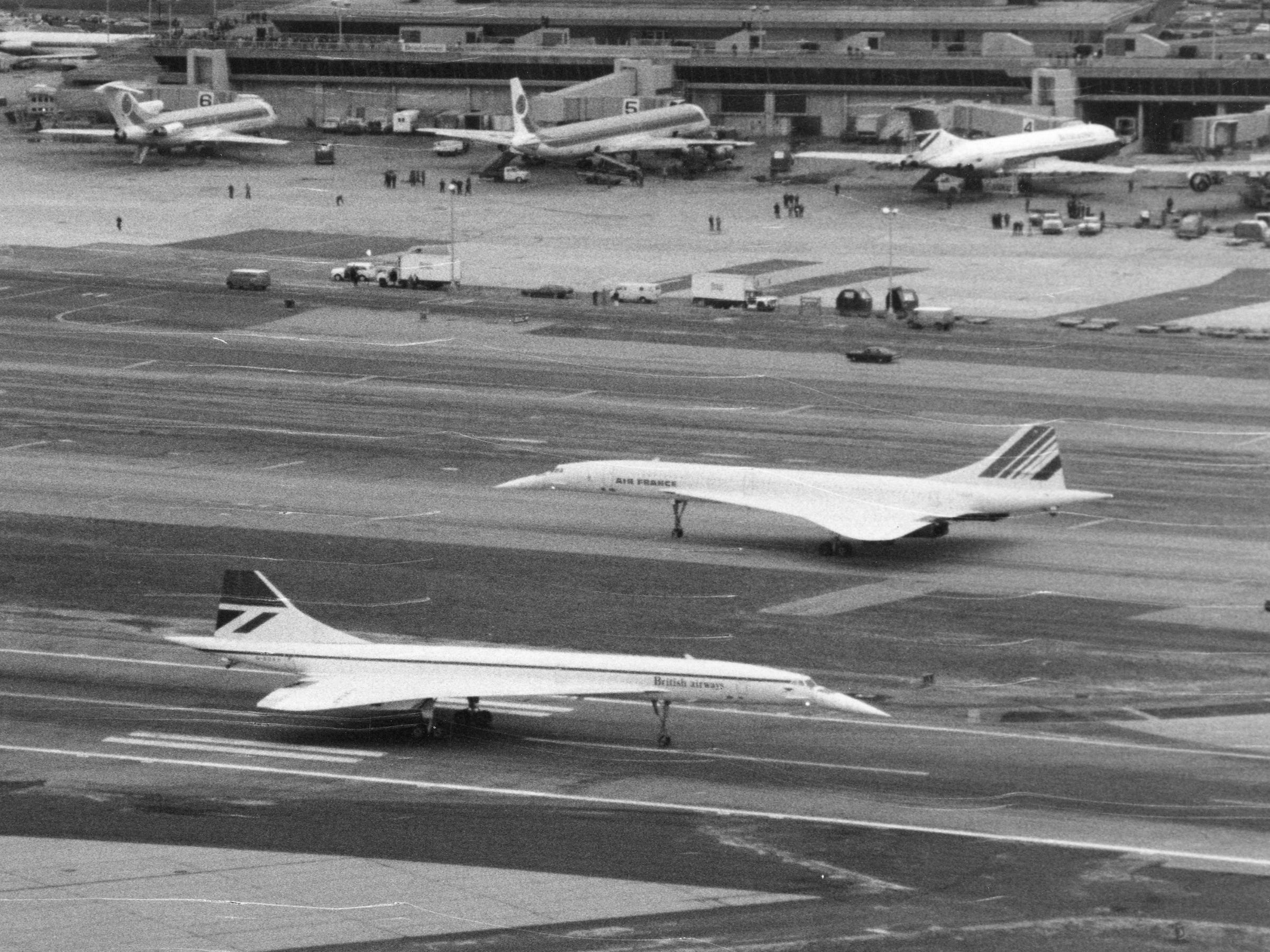
It wasn't long before the jumbo jet earned the hearts of airlines and passengers alike, becoming one the most beloved airliners in history and outliving equally popular planes like the Concorde.
Associated Press
-
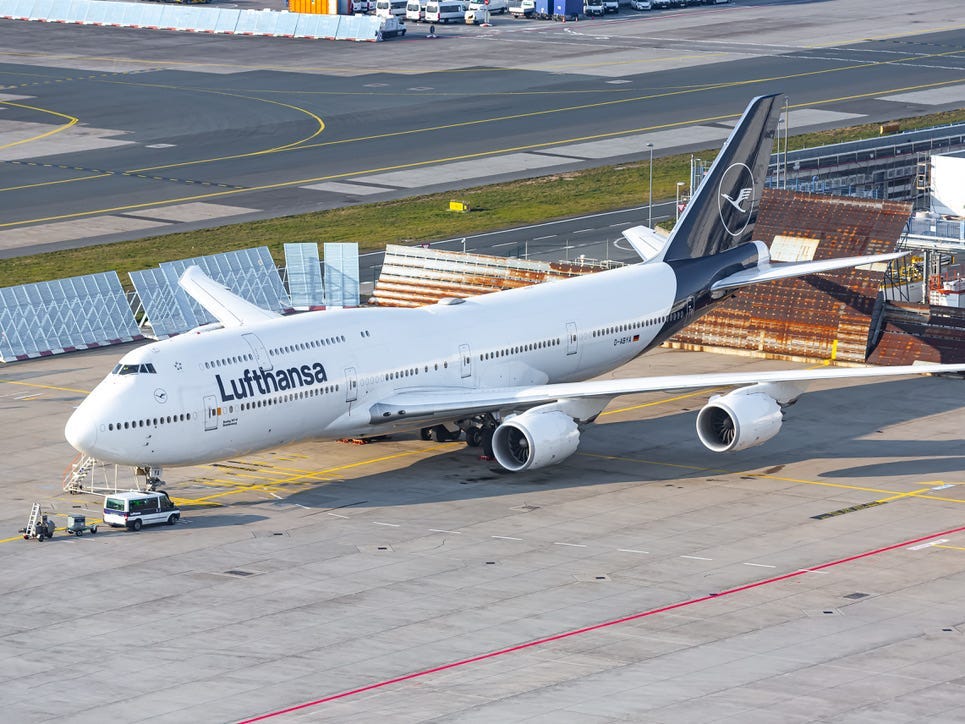
The jet's longtime success can be seen in the numbers, with the huge plane shuttling over 5.9 billion people across 75.5 billion miles as of 2020, which is enough to fly to the Moon and back to Earth 137,000 times.
Source: Boeing
Lukas Wunderlich/Shutterstock
-
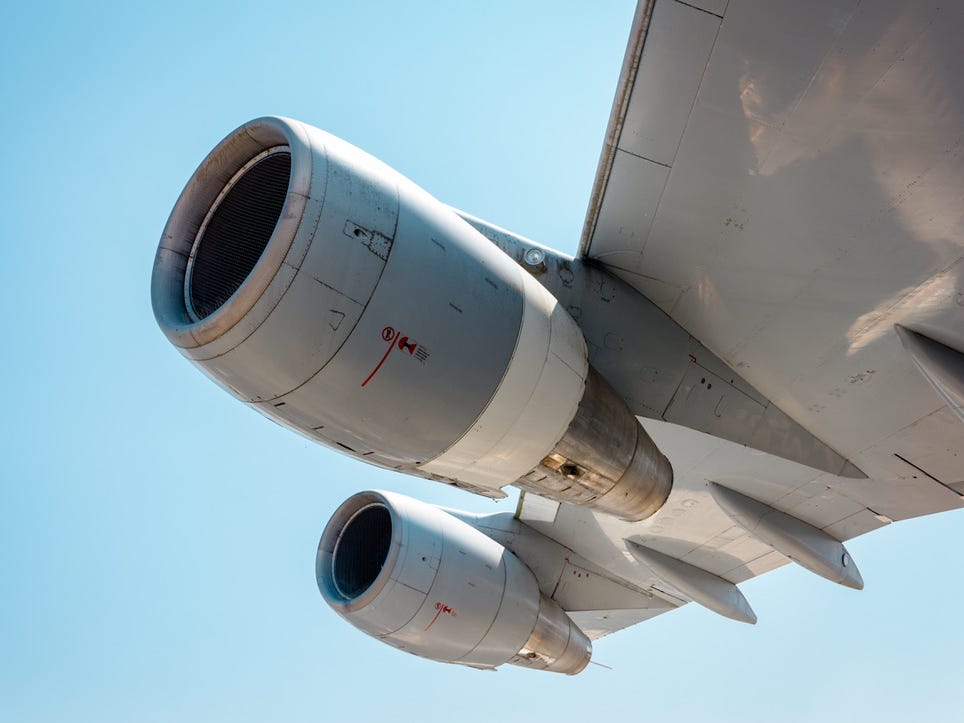
However, innovations in dual-engine planes over the years made the 747’s four fuel-hungry engines and poor economics unattractive for operators.
Source: Insider
Alexander Sidorov/EyeEm via Getty Images
-
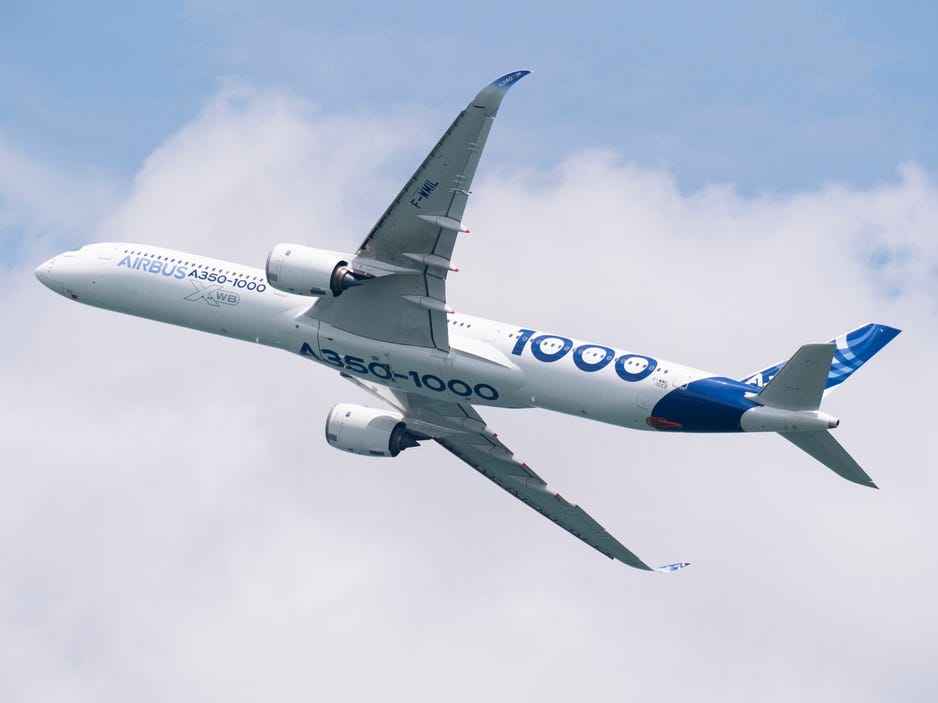
What was once a marvel for international transport eventually became a cost liability, and most airlines worldwide have ditched the plane in favor of more efficient jets, like the Boeing 787 or the Airbus A350.
Bryan Van Der Beek/Airbus
-
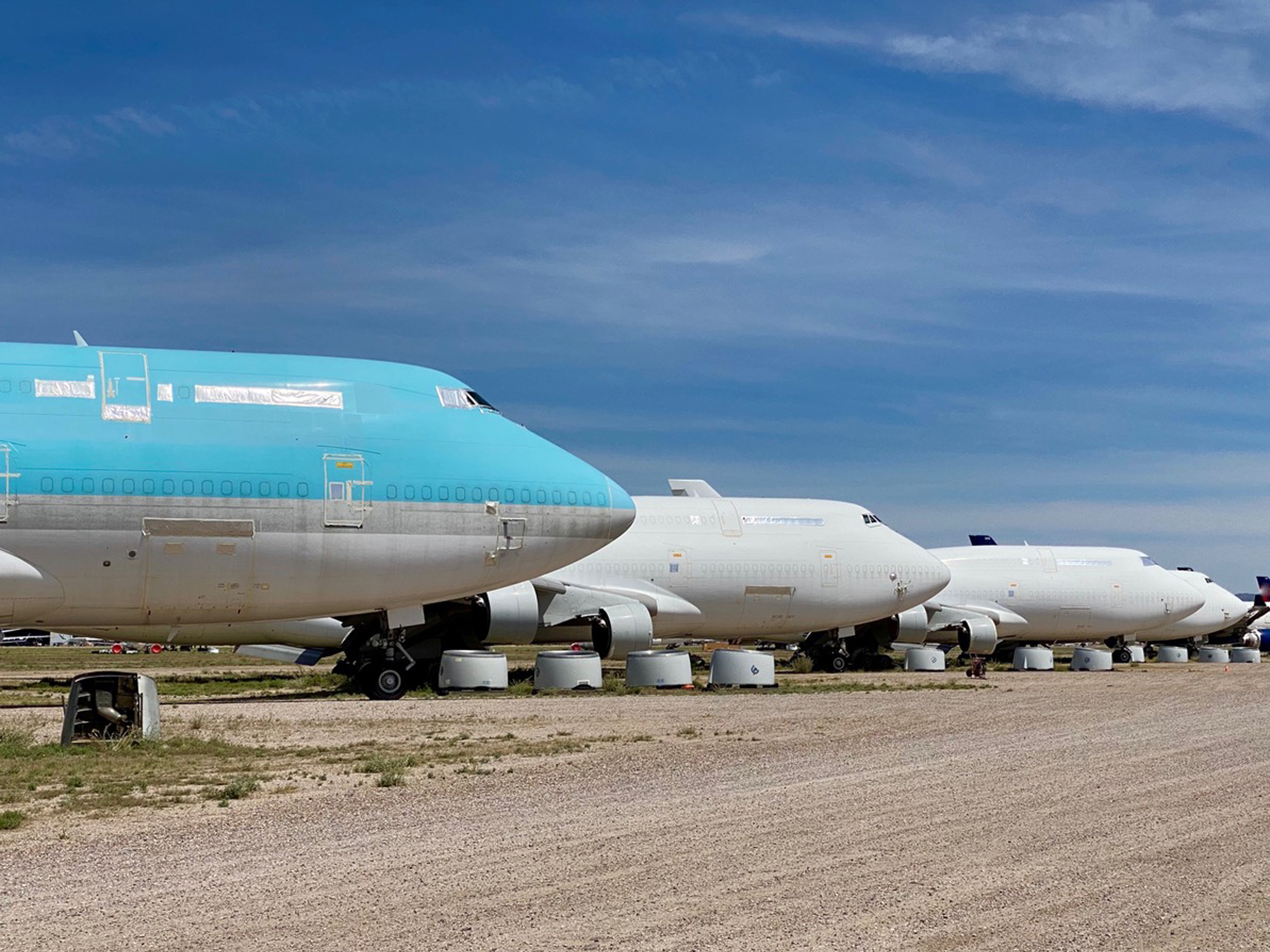
The coronavirus pandemic exacerbated the problem as carriers were already bleeding cash and needed to let go of expensive assets.
AirlineGeeks/Ryan Ewing
-
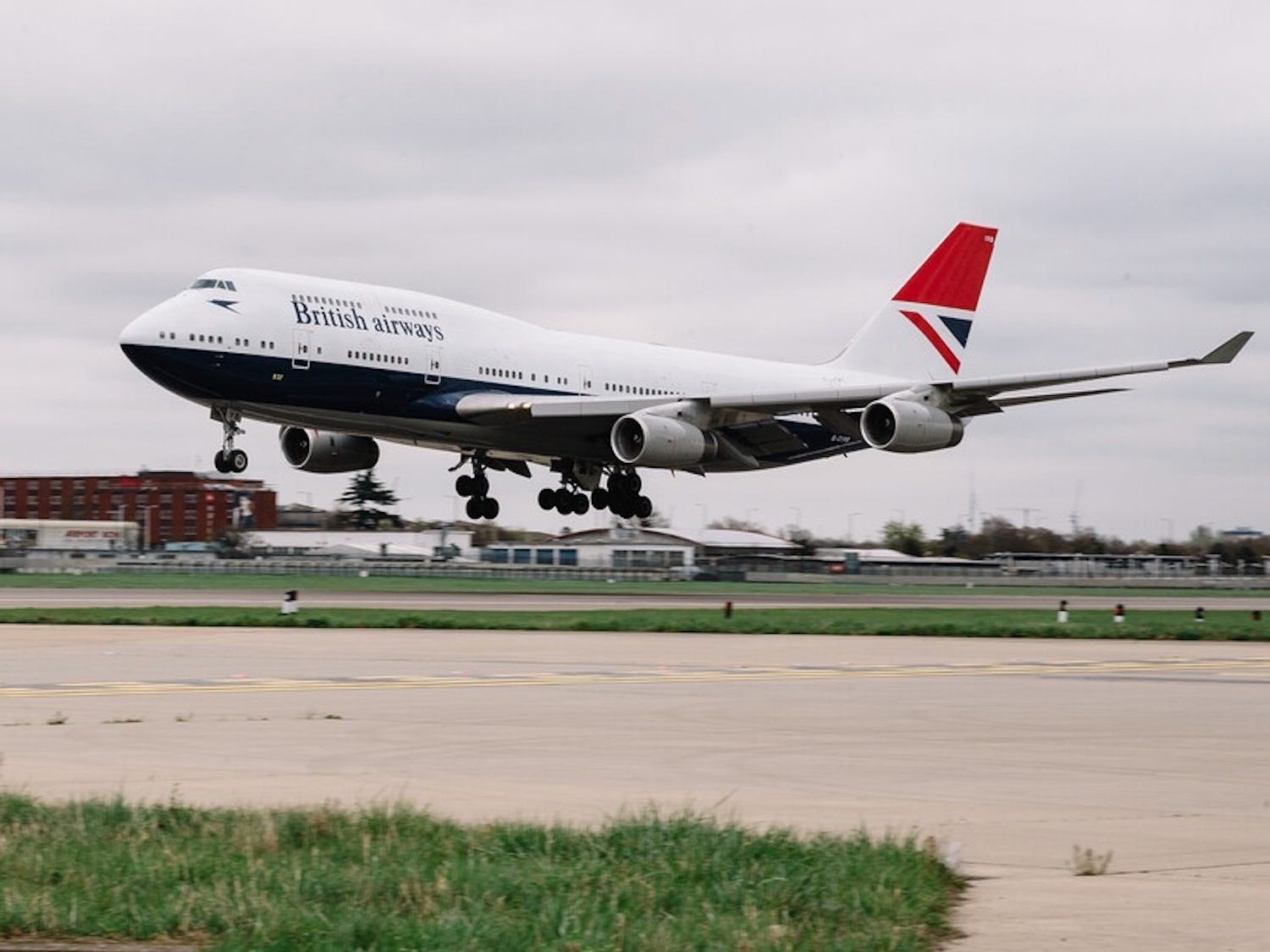
As a result, the 747 became a common casualty of COVID-19 as travel demand plummeted, with many airlines, like British Airways and Virgin Atlantic Airways, saying goodbye to the iconic double-decker forever.
British Airways
-
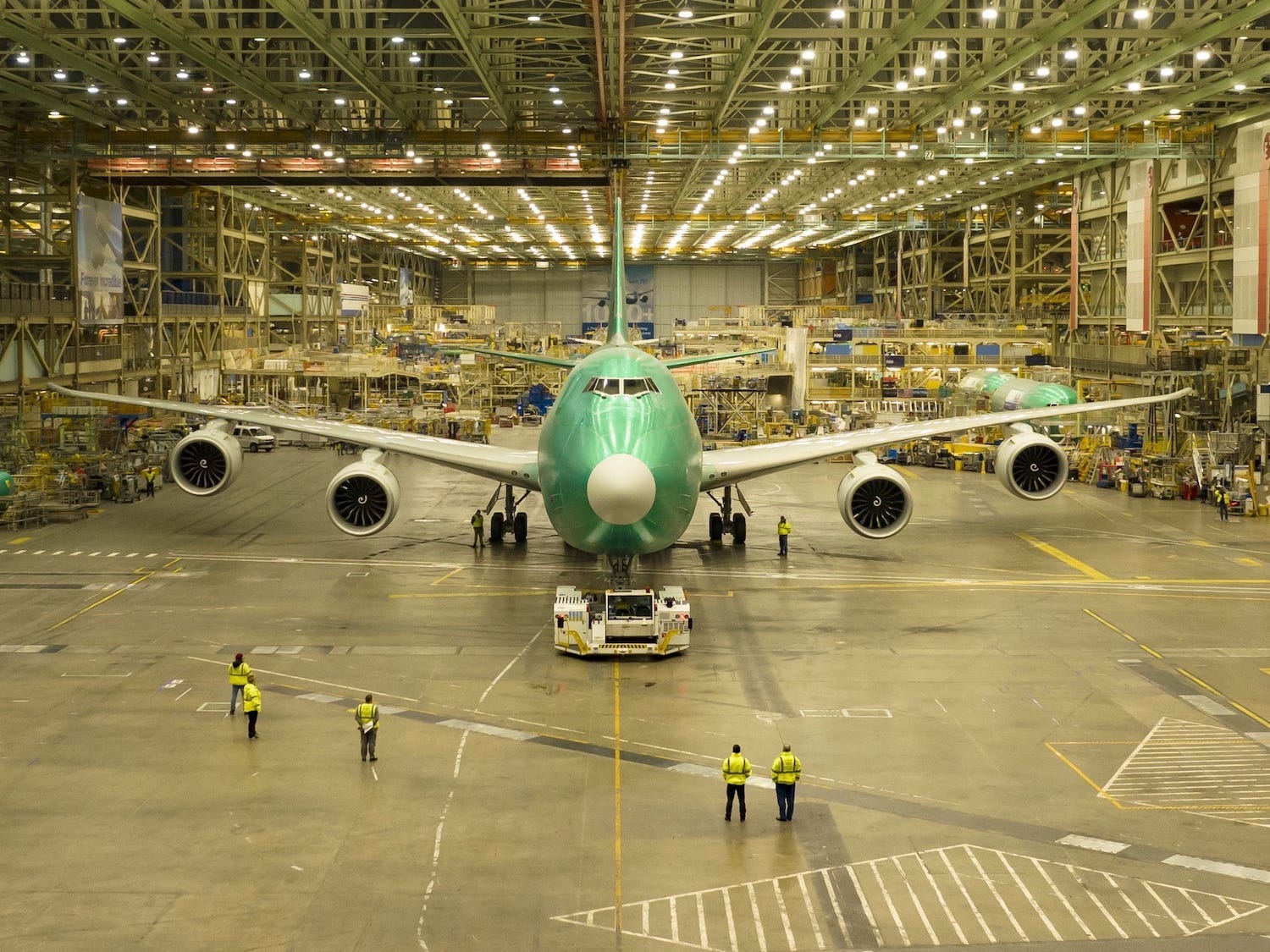
Boeing also decided to retire the program, having built over 1,550 jumbos. The final 747 rolled off the assembly line in Everett, Washington, on December 6, and was delivered to its final owner, Atlas Air, on Tuesday.
Source: Boeing, Boeing's last-ever 747 just rolled off the assembly line, marking the end of an era. Here's the history of how the revolutionary plane changed the world.
Paul Weatherman/Boeing
-
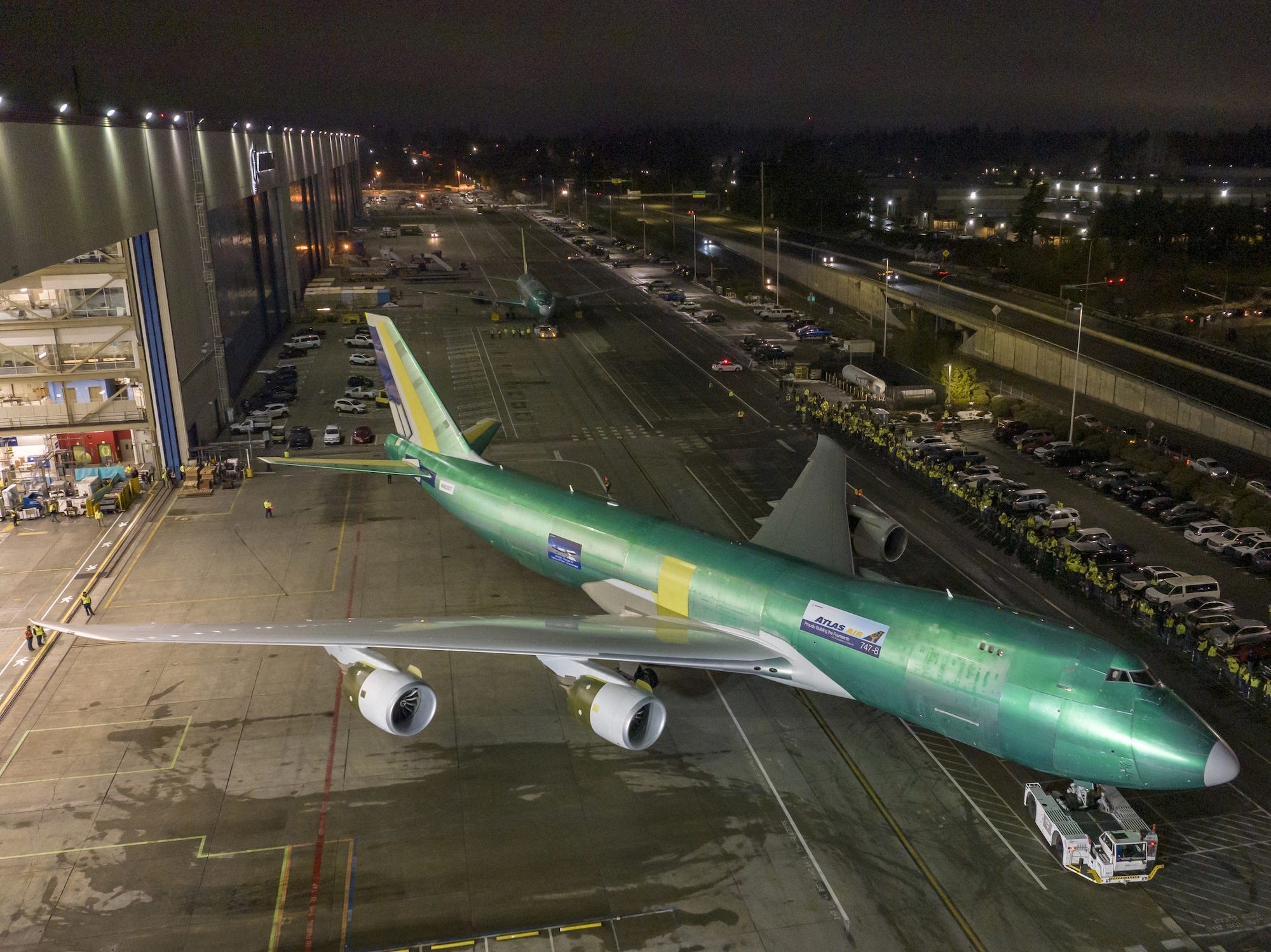
"This is the symbol of innovation for our country," Boeing CEO Dave Calhoun told Bloomberg at the delivery ceremony. "This airplane will fly for another fifty years, so it's not as if we're putting it to bed — it's simply we're producing our last."
Source: Atlas Air, Bloomberg, Boeing's iconic 747 will leave the assembly line for the last time this year. See one of last jumbo jets the planemaker will ever build.
Paul Weatherman/Boeing
-
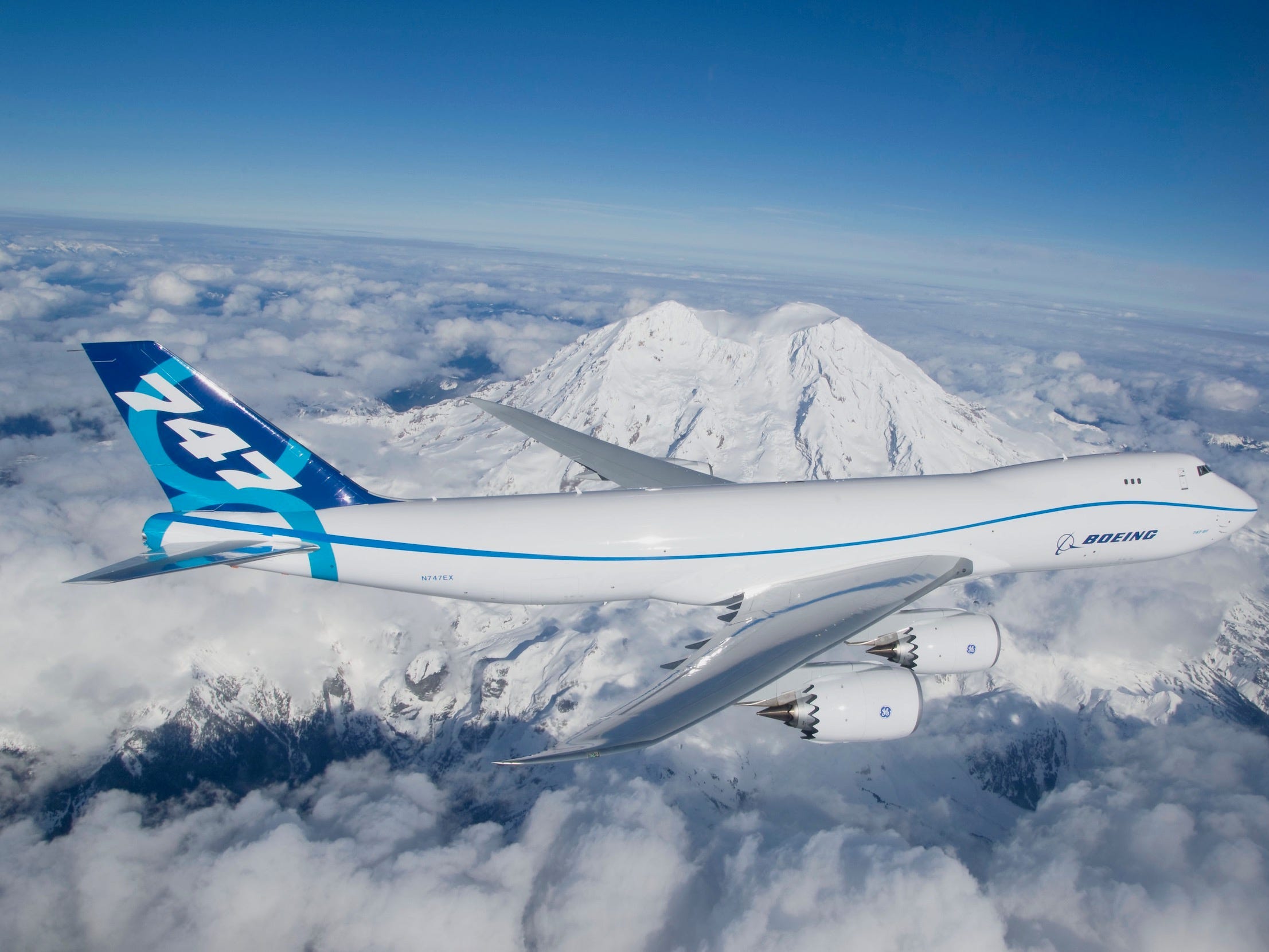
Although the 747 is ending its nearly 53-year reign, its revolutionary design changed the industry as we know it. Here are seven things that made the Queen of the Skies truly remarkable.
Boeing
-
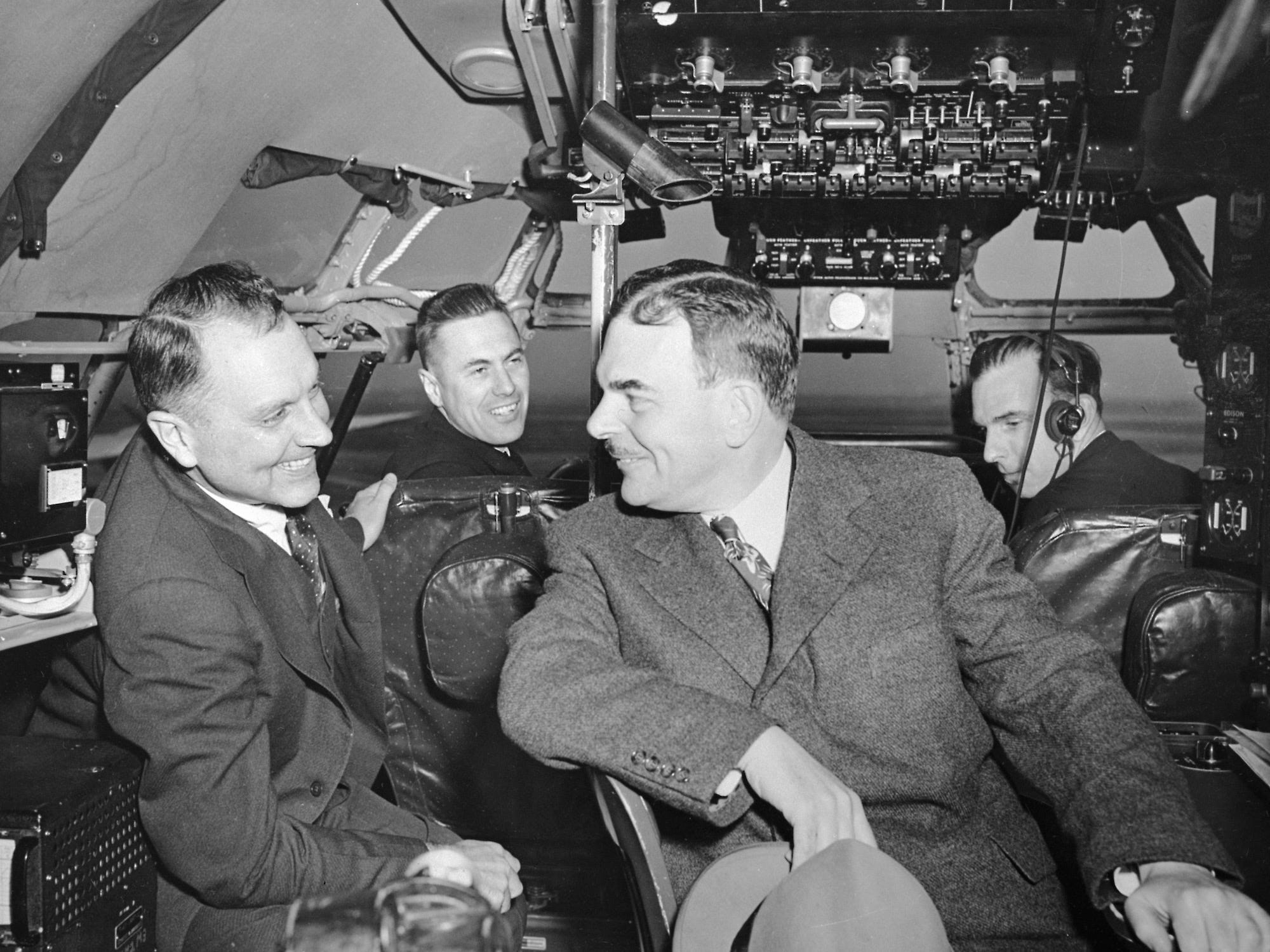
1: The legendary aircraft was built on request by Pan American World Airways founder and CEO Juan Trippe.
Source: Northwestern University
Bettmann/Contributor
-
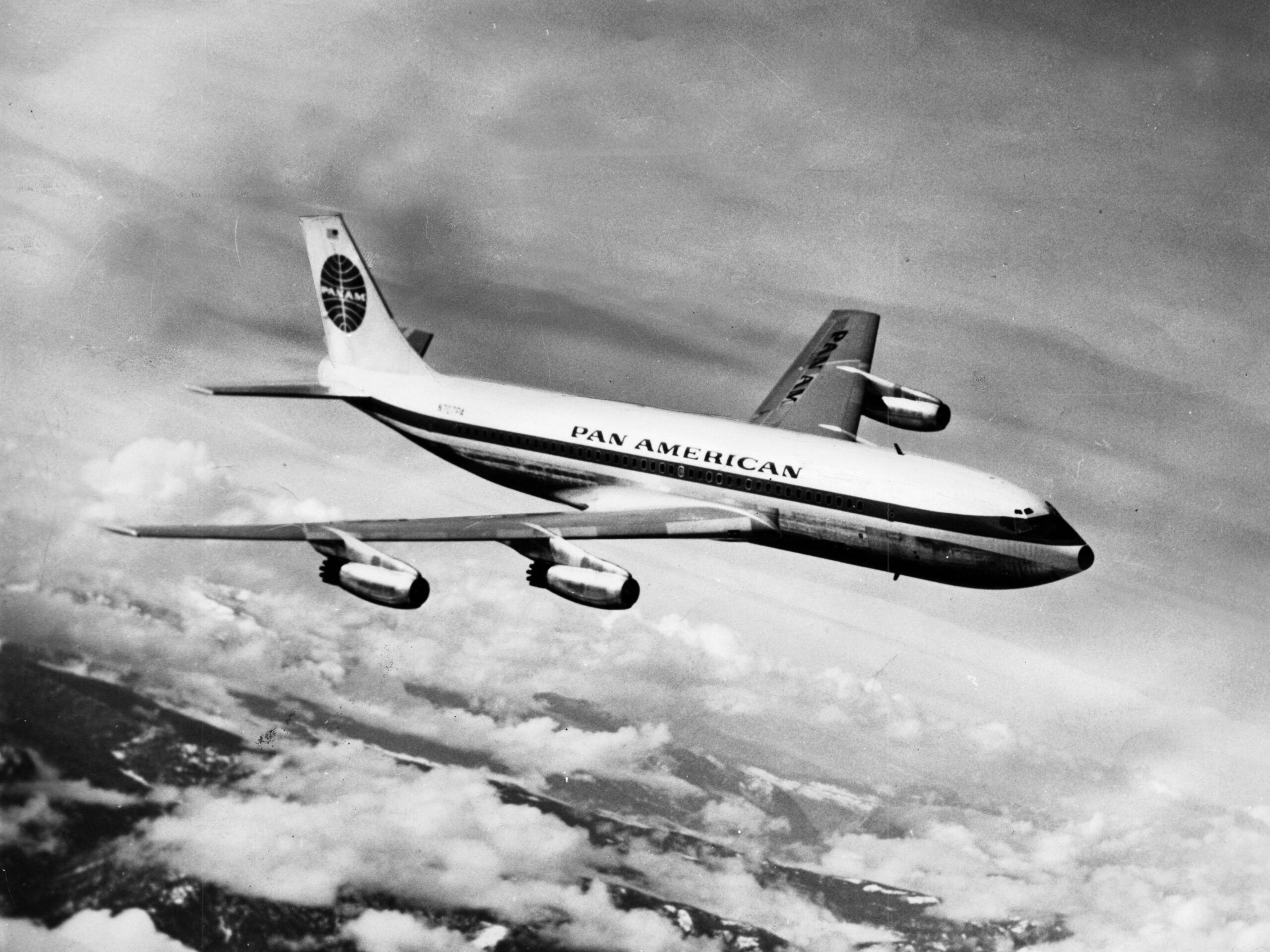
At the time, Pan Am was already flying Boeing's quad-engine 707, which was the company's first jetliner and ushered in the jet age for air travel.
ullstein bild Dtl./Getty Images
-
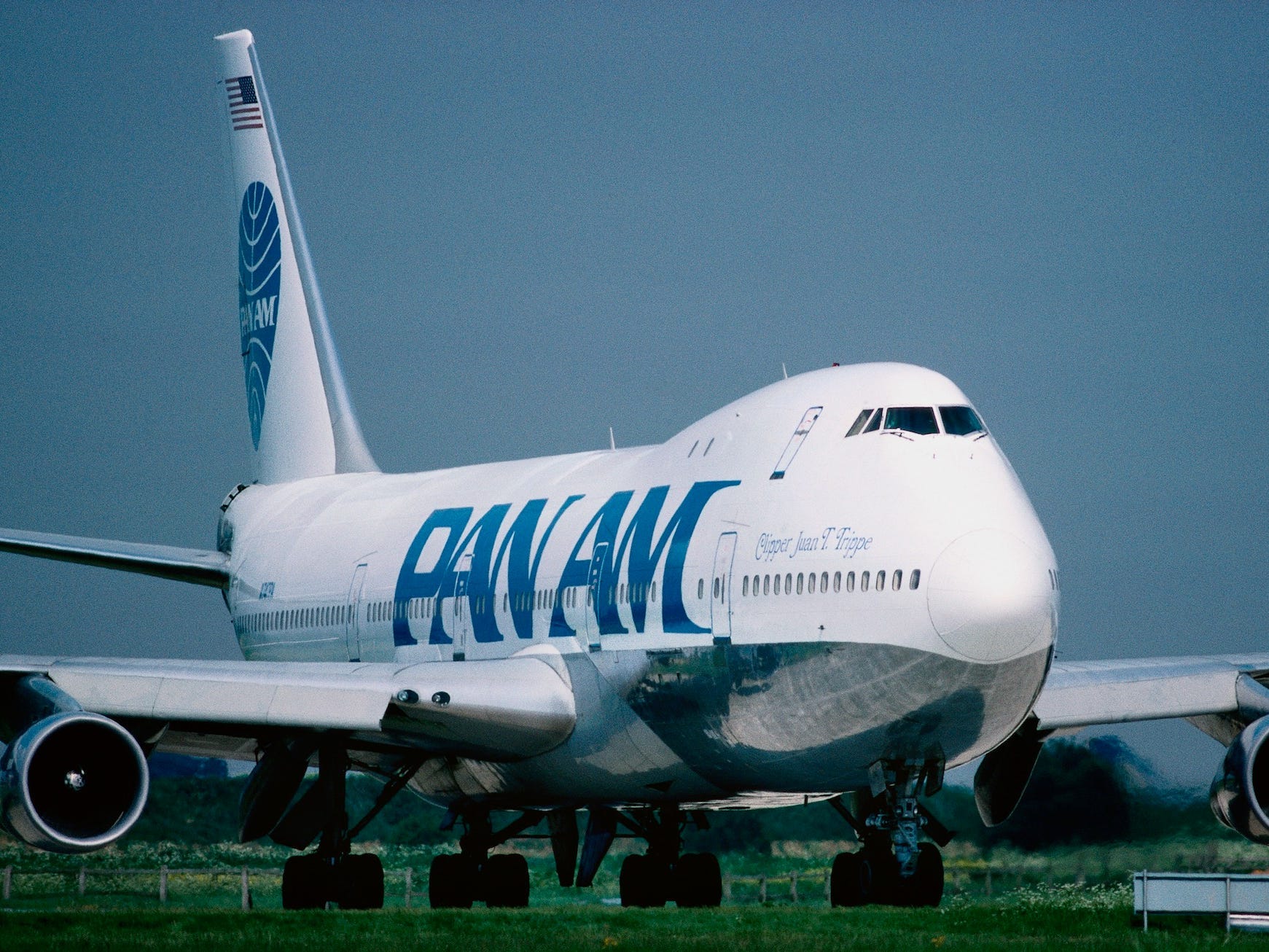
But, as demand skyrocketed, the industry needed bigger and better planes that could fly farther than any other commercial aircraft could.
Source: Insider
aviation-images.com/Contributor via Getty Images
-
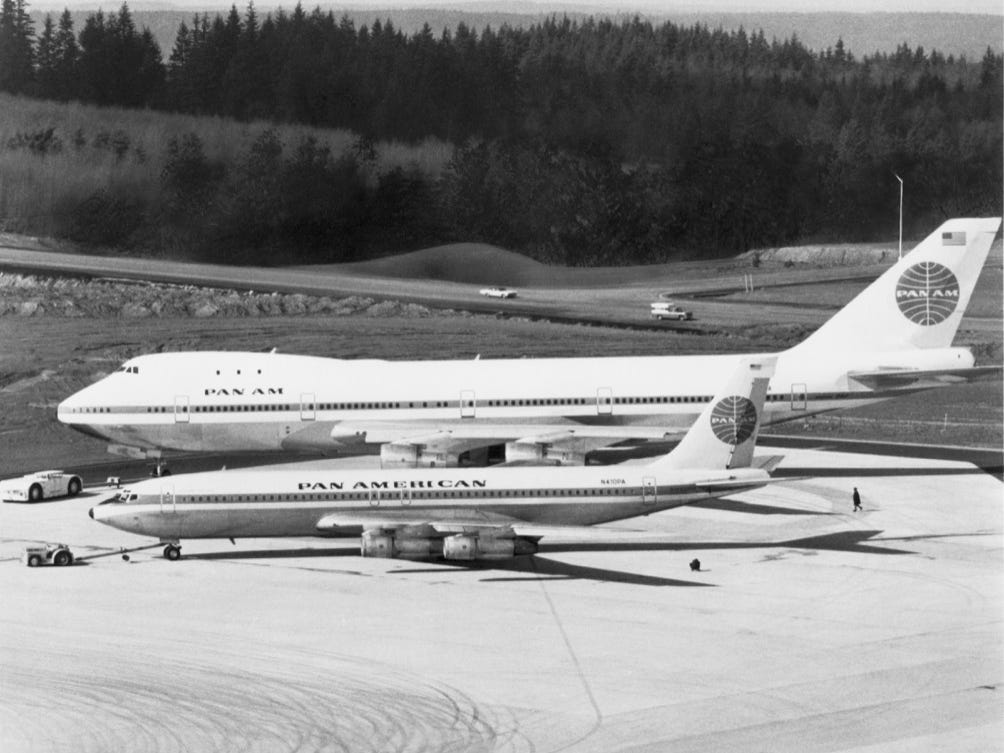
So, Trippe went to Boeing in 1965 and asked for a plane more than twice the size of the 707…
Source: Insider
Underwood Archives/Getty Images
-
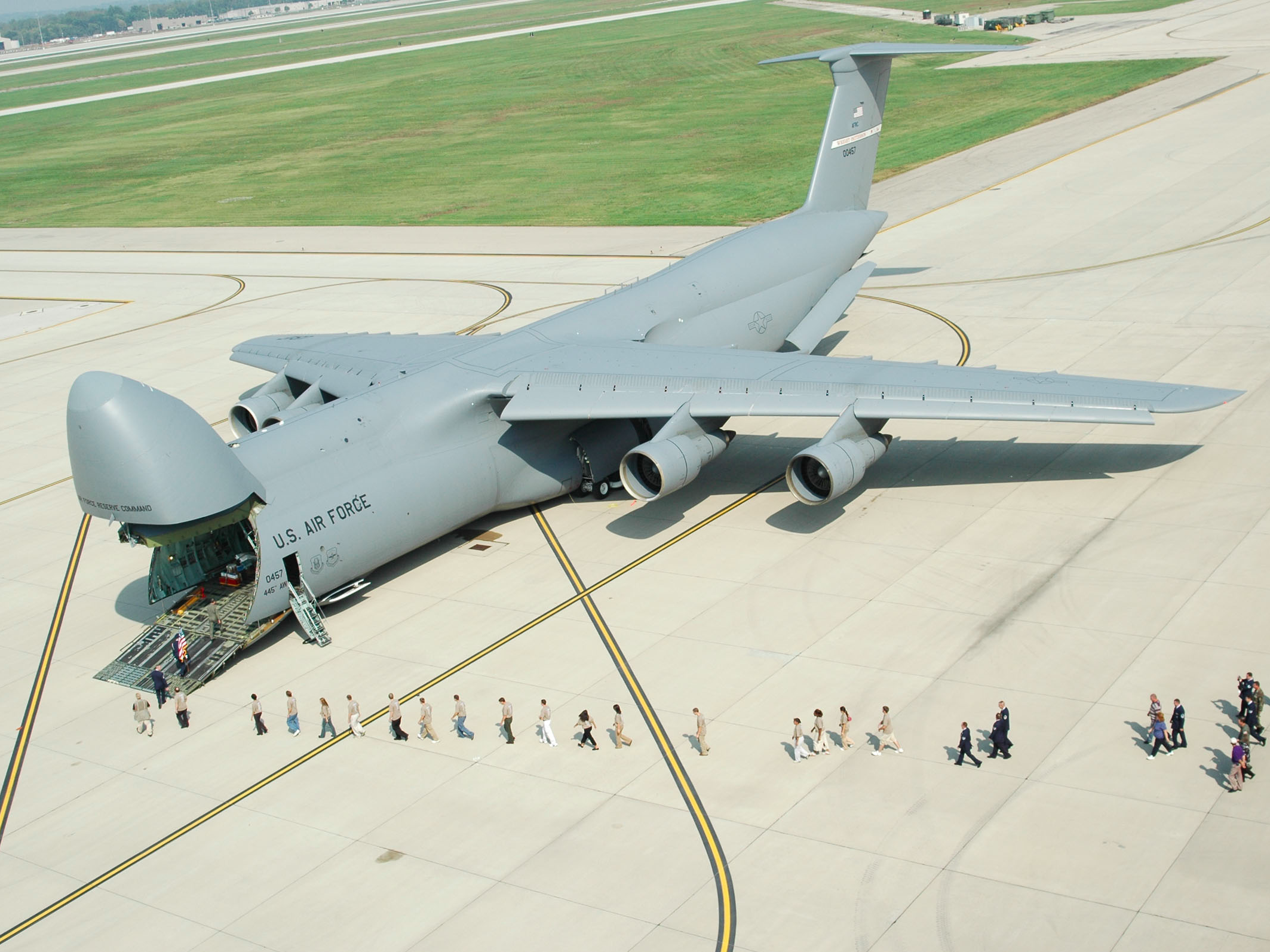
…and it didn't take much for the manufacturing giant to jump on the opportunity, especially after recently losing out on a contract to build the massive C-5A military transport plane.
Source: Boeing
US Air Force photo by Tech. Sgt. Charlie Miller
-
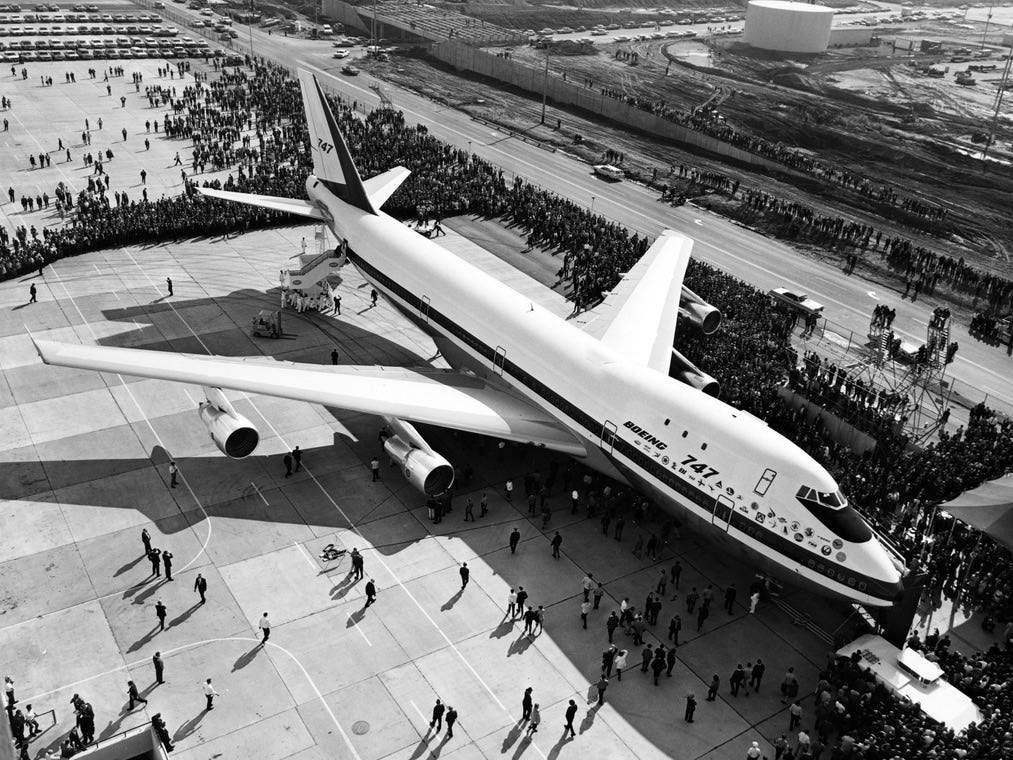
2: The 747 was built by a team of some 50,000 Boeing employees, known as the "Incredibles."
Source: Boeing
-/Getty Images
-
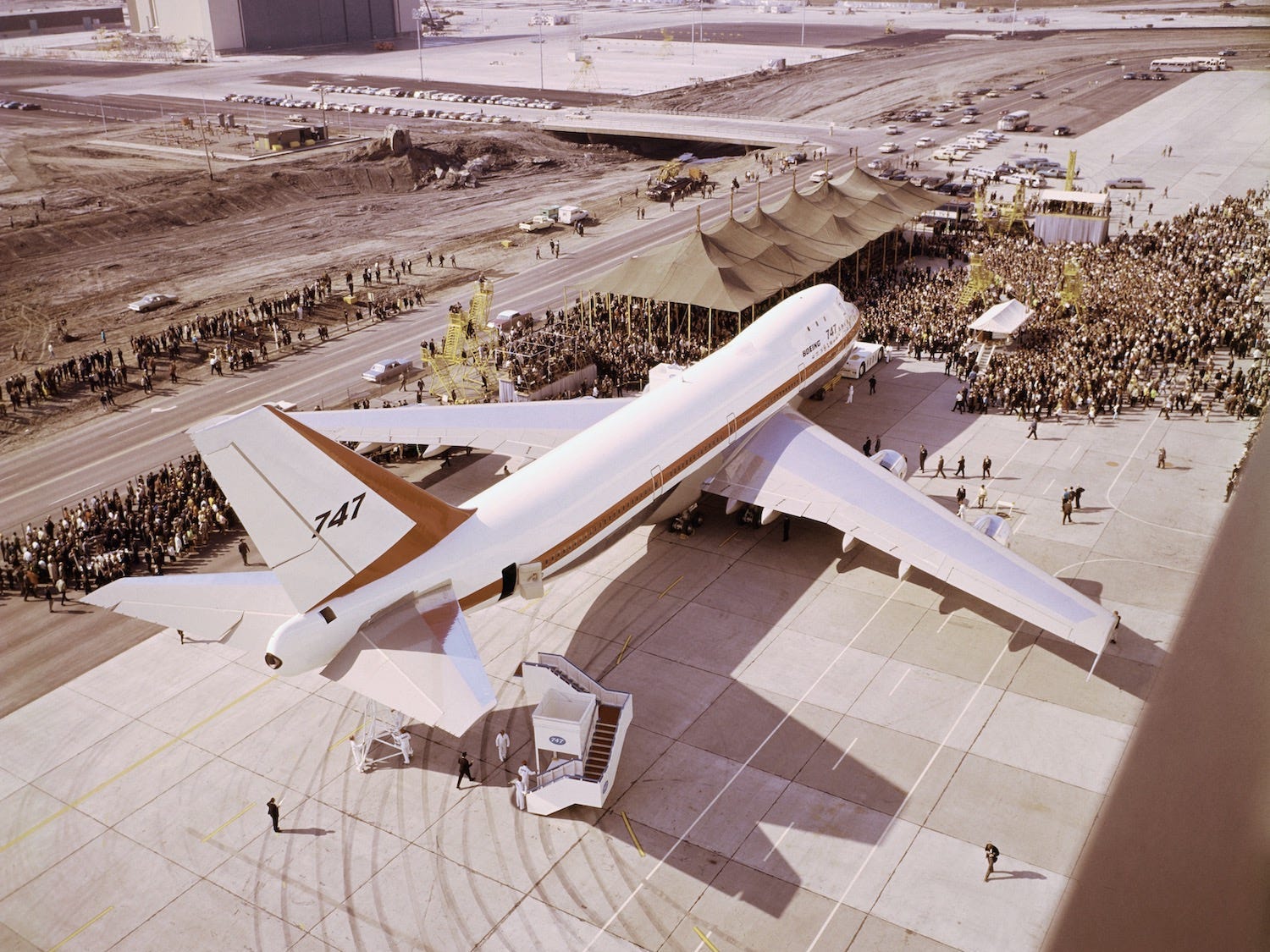
The workers were made up of engineers, mechanics, secretaries, and construction workers, among others, and built the plane in about 16 months in the late 1960s.
Source: Boeing
Bettmann/Contributor via Getty Images
-
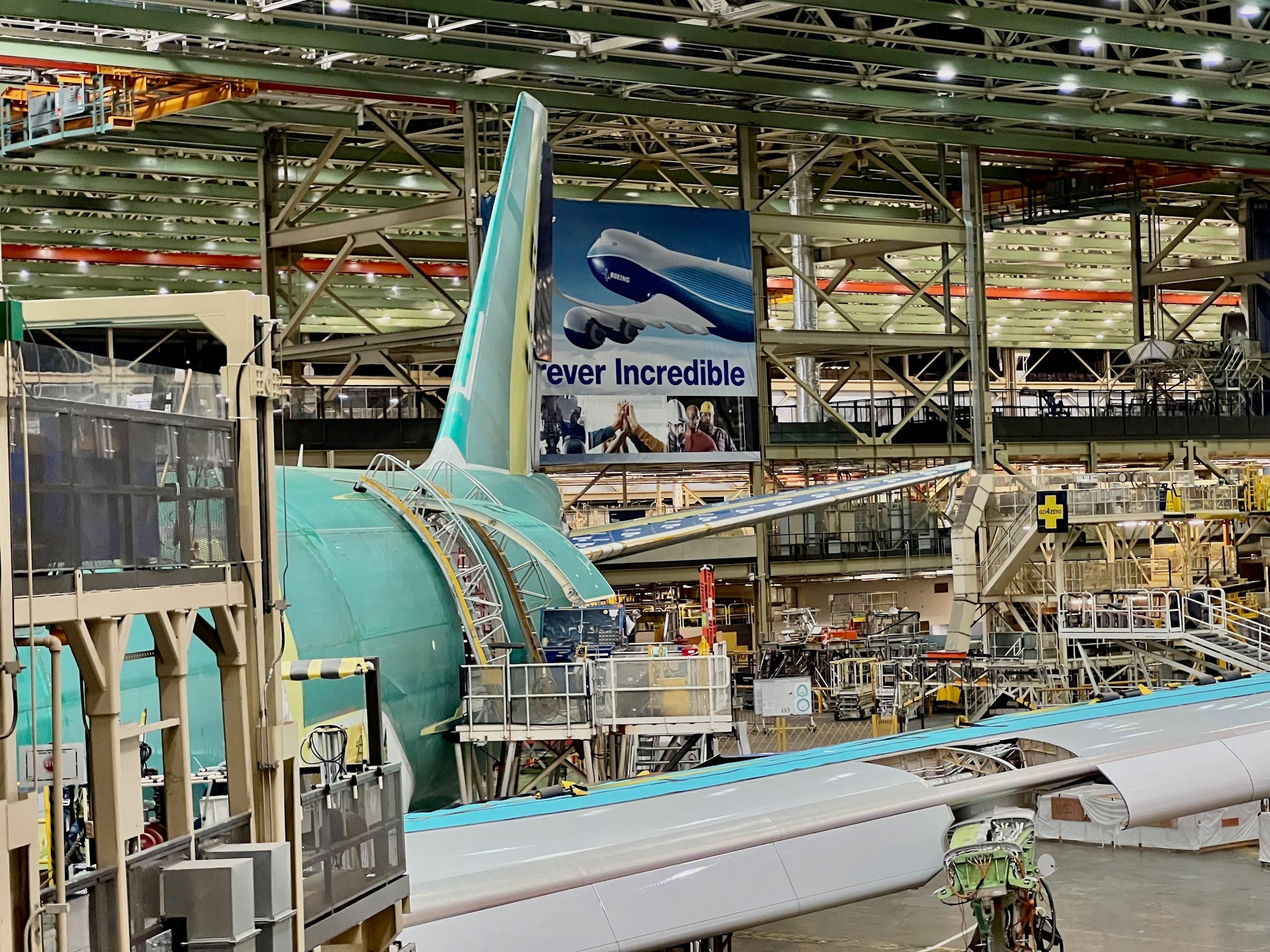
"We assembled the first 747 in snowstorms as they were constructing the building around us," wrote Boeing Incredible Dwight Bates in a 2016 post published on the planemaker's website.
Source: Boeing
Taylor Rains/Insider
-
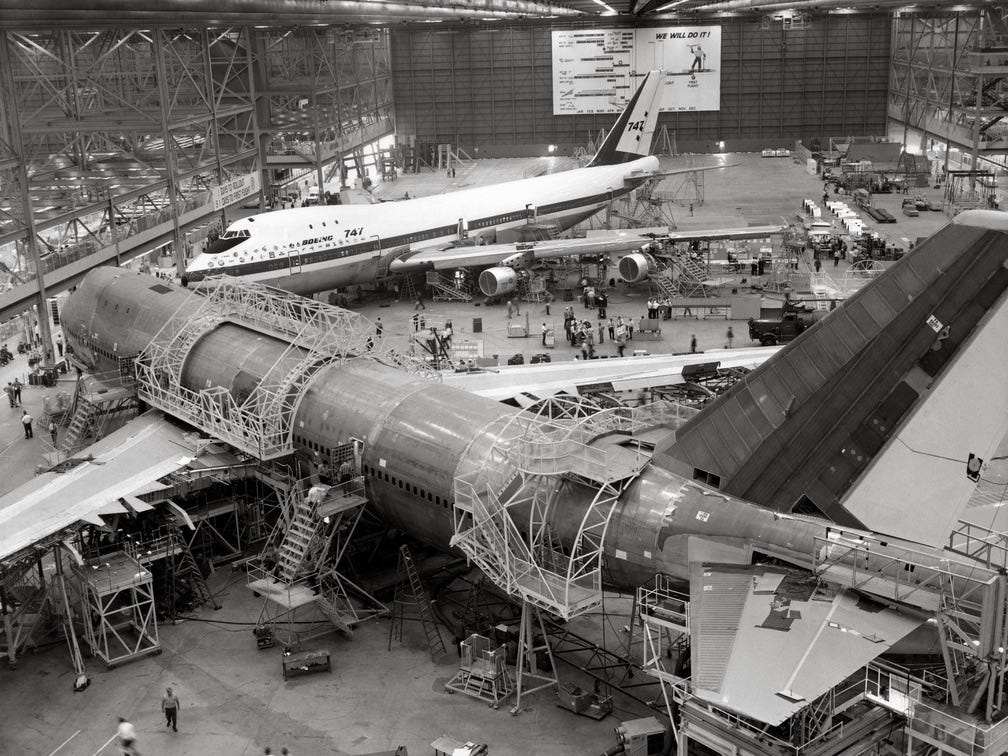
He explained the conditions of being an Incredible meant sleeping at their desks and working crazy overtime hours. Not to mention, they were under immense pressure after being told they'll lose the company if they didn't get the 747 FAA-certified.
Source: Boeing
Bernard Crochet/Photo12/Universal Images Group via Getty Images
-
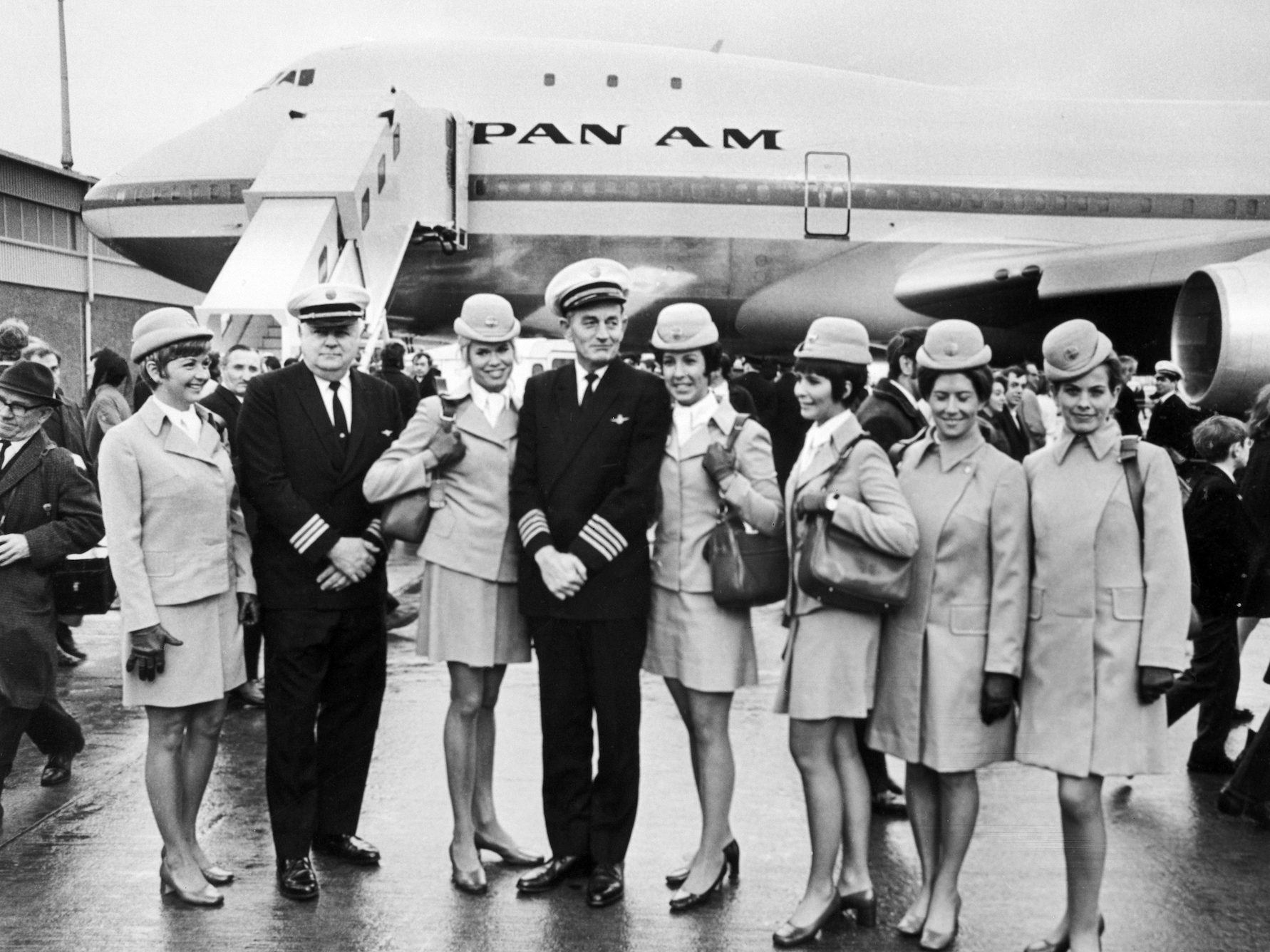
Fortunately, their efforts didn’t go to waste. Led by veteran Boeing engineer Joe Sutter, who is known as the “father of the 747,” the iconic plane took its first flight in 1969 and was in commercial service with Pan Am in 1970.
Source: Boeing
AFP/Stringer via Getty Images
-
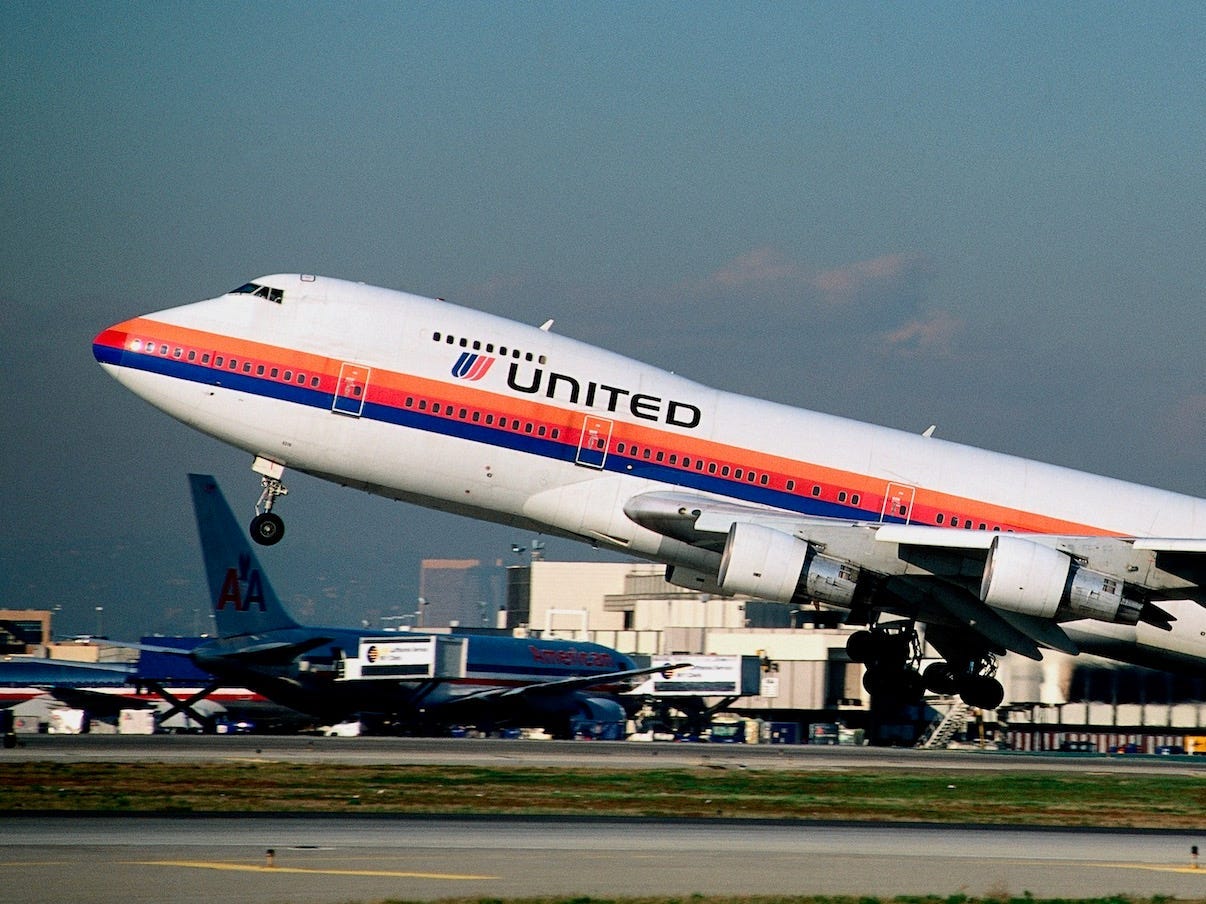
3: The 747 was the world's first widebody passenger aircraft and the first with a partial second level.
Source: Museum of Flight
aviation-images.com/Contributor via Getty Images
-
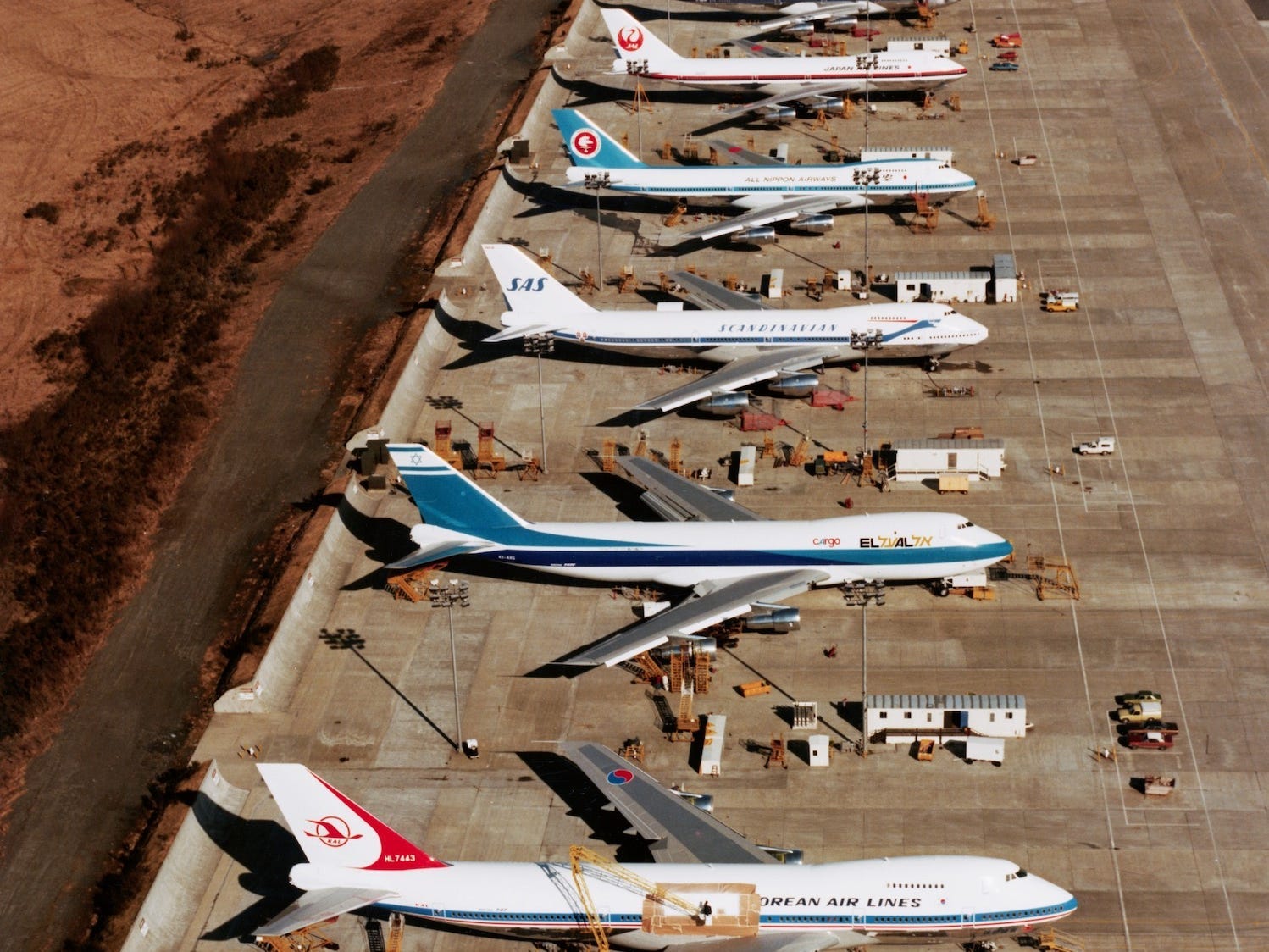
Boeing created five different 747 variants: the 747-100, 747-200, 747-300, 747-400, and the 747-8, which were bought by dozens of airlines, like Korean Air, Cathay Pacific Airways, and Delta Air Lines.
Source: Insider
Museum of Flight Foundation/Contributor via Getty Images
-
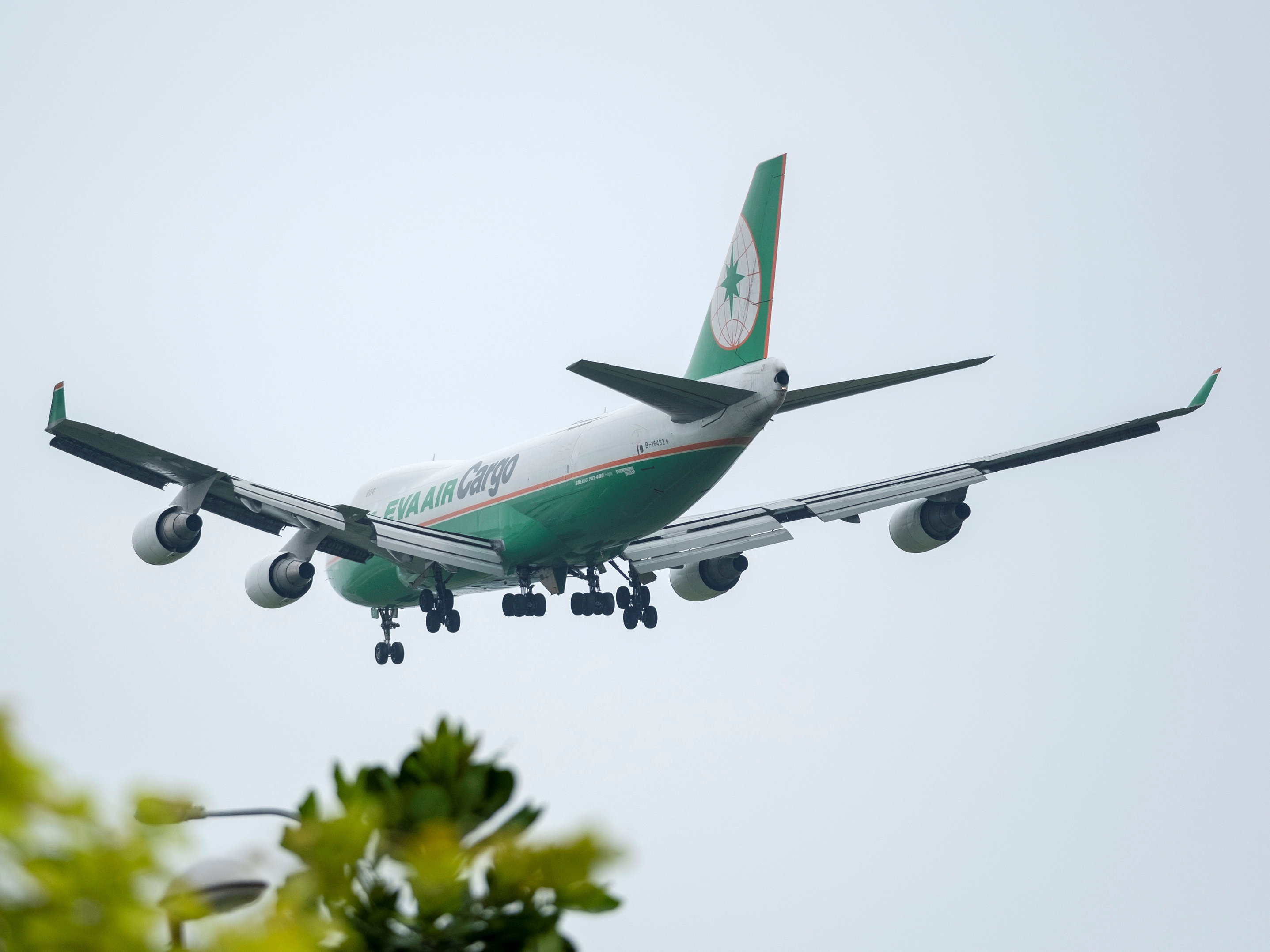
From there, several models of each type were produced, like the 747-400F freighter and the 747-200C convertible, which can be used for both passenger and cargo operations.
TIM CHONG/Reuters
-
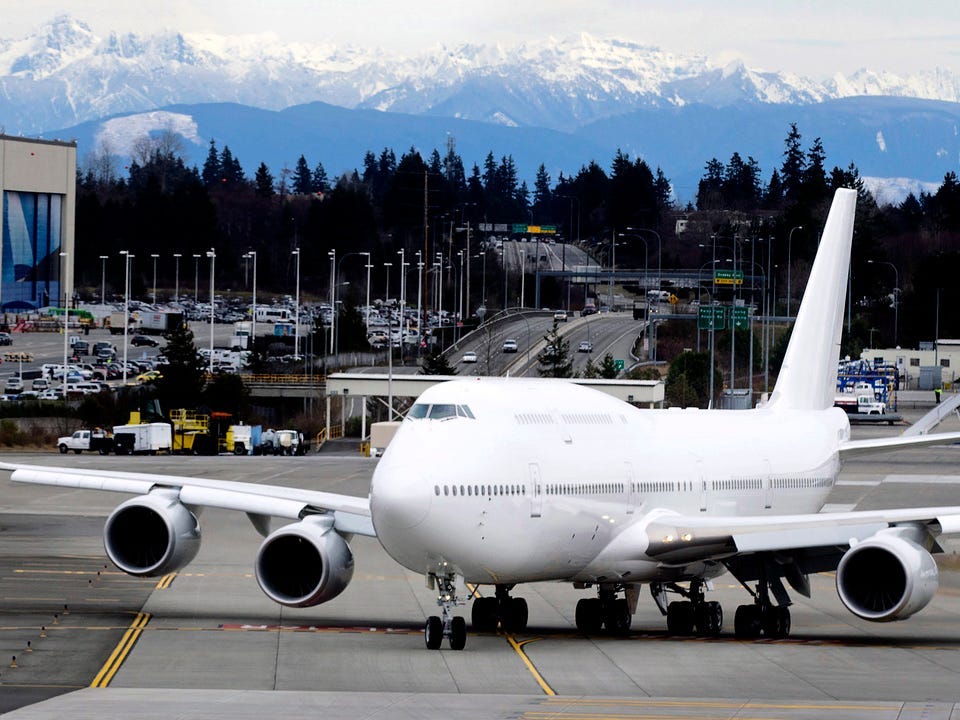
The planemaker's largest and highest-performing passenger variant is the 747-8i.
Source: NerdWallet
Stephen Brashear/Stringer via Getty Images
-
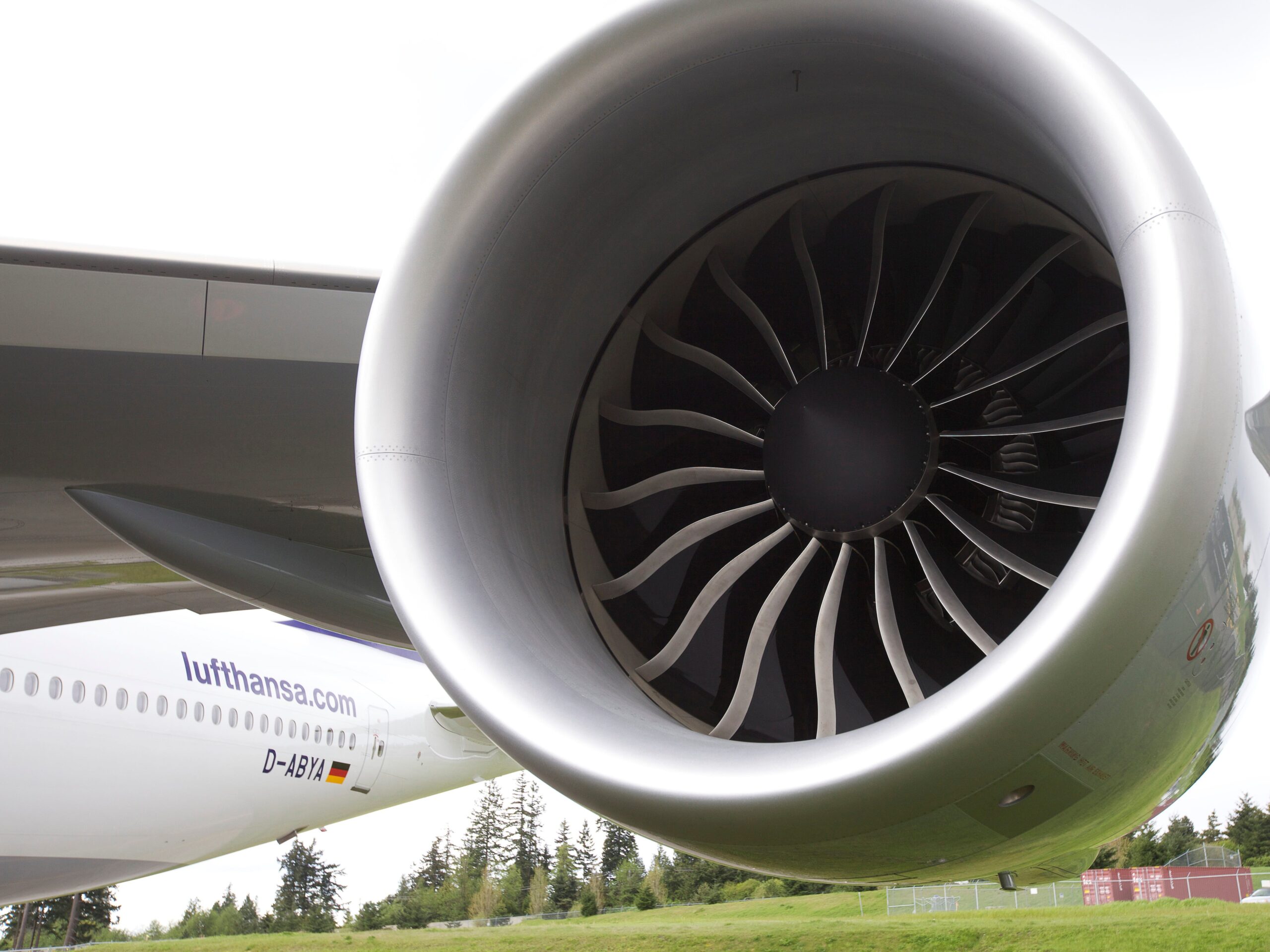
Powered by four General Electric engines, it can reach speeds of about 660 miles per hour and fly up 8,895 miles. This means the plane can zoom across three FIFA soccer fields in one second.
Source: Boeing
Stephen Brashear/Stringer via Getty Images
-
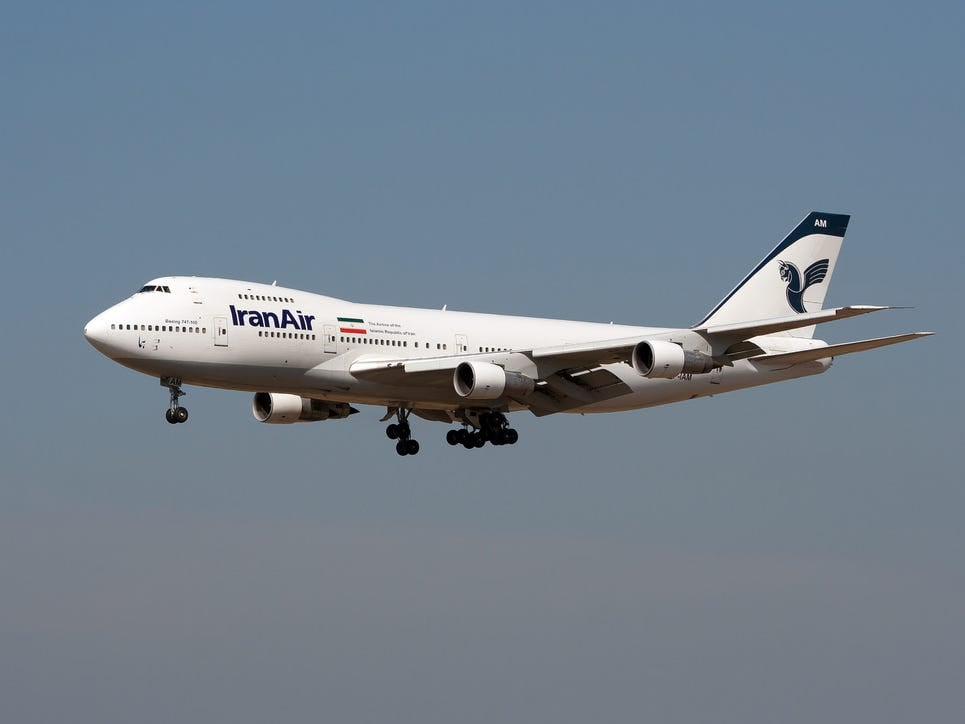
The advanced specs have come a long way since Boeing's first 747-100, which could only fly up to 602 miles per hour across about 5,300 miles.
Source: Simple Flying
SOPA Images/Contributor via Getty Images
-
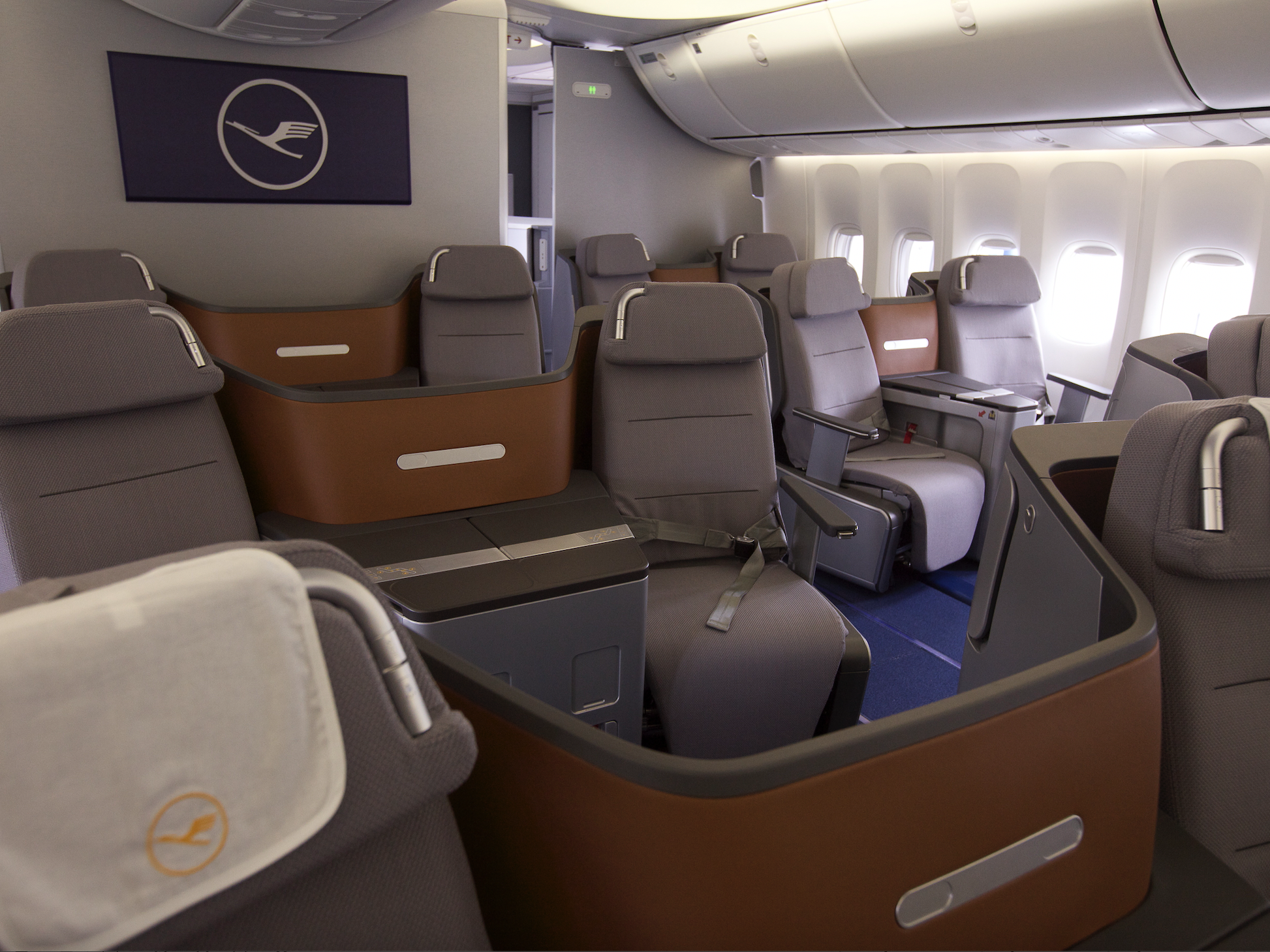
But, the original variant's innovative widebody design paved the way for high capacity, with Pan Am's carrying 347 people. The 747-8i, by comparison, can accommodate up to 467 passengers in three classes.
Source: Simple Flying
Stephen Brashear/Getty Images
-
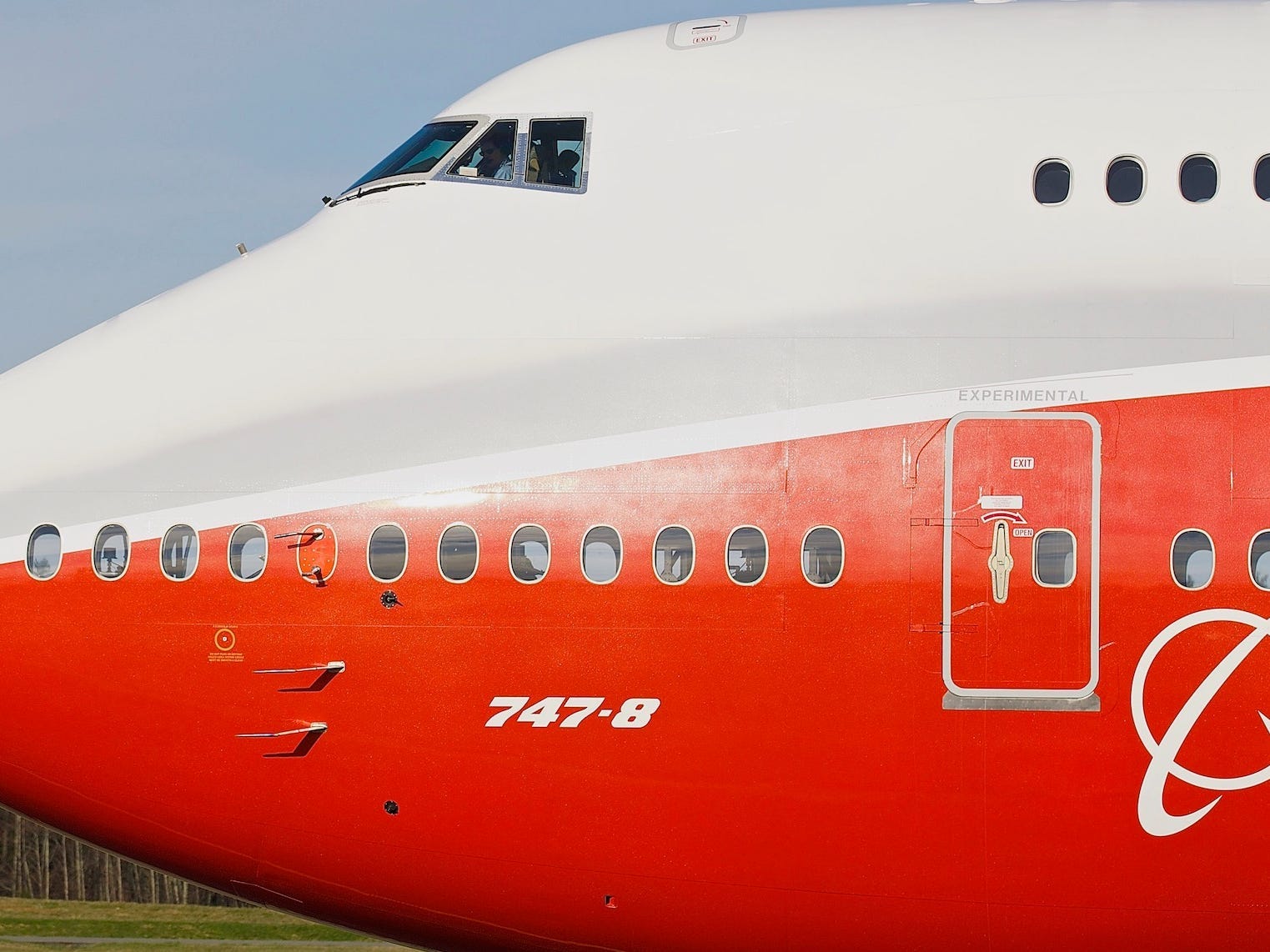
Not only did the jet feature revolutionary performance and seating, but it also came with a unique "hump" that made it easily recognizable by travelers.
Source: Smithsonian Magazine
Stephen Brashear/Getty Images
-
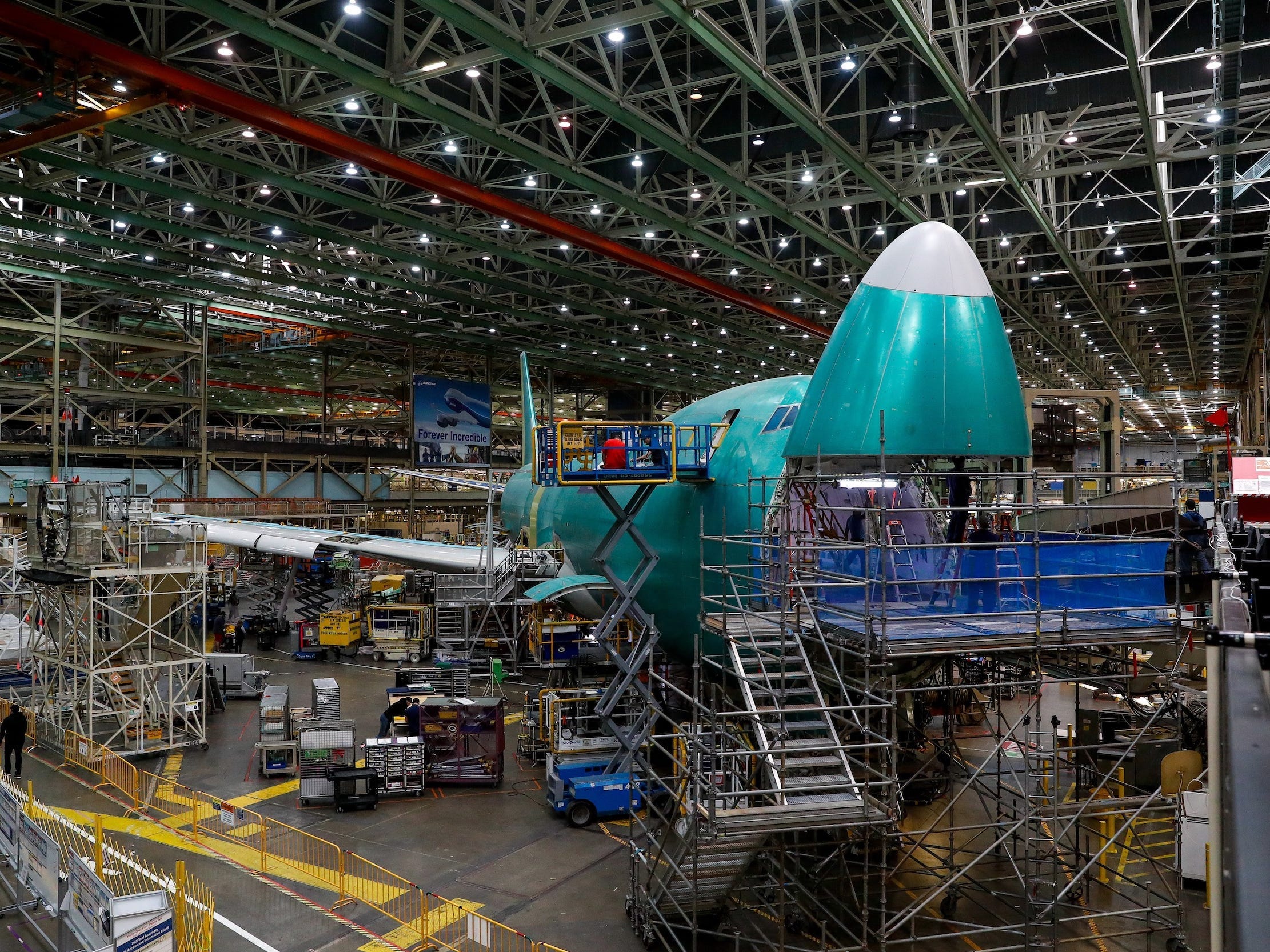
Boeing created the iconic hump on the 747 because Trippe didn't think the plane would be a commercial hit and wanted it to be easily converted into a freighter.
Source: Smithsonian Magazine
Seattle Times
-
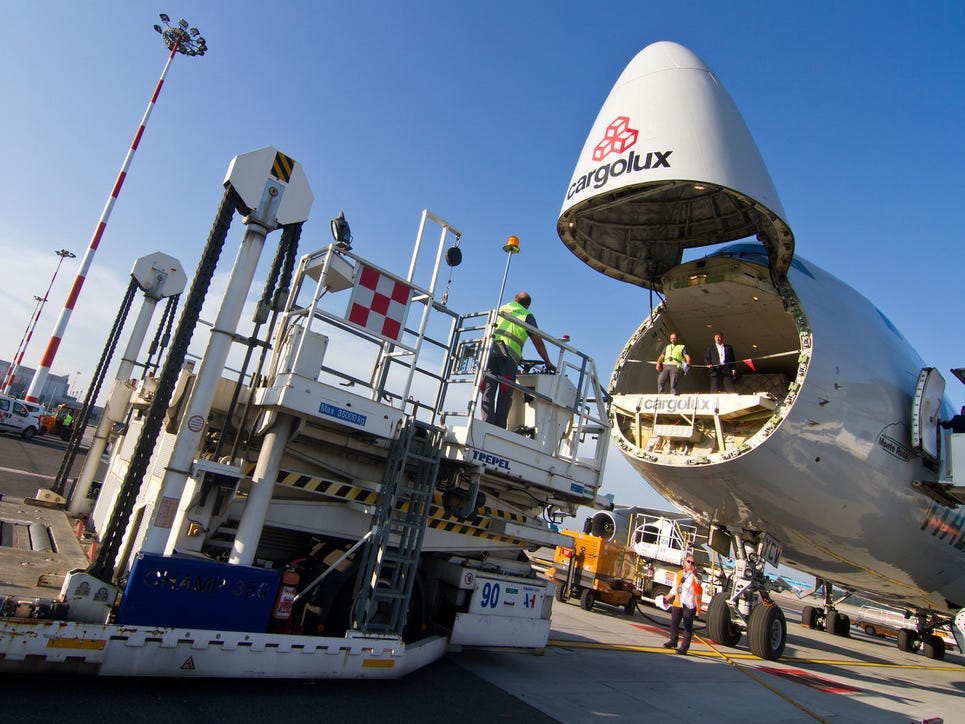
This meant the nose needed to be able to open, which made this an unfavorable place to put the cockpit. So, Boeing moved the flight deck higher up, which also contributed to better aerodynamics.
Source: Smithsonian Magazine
Davide Calabresi/Shutterstock
-
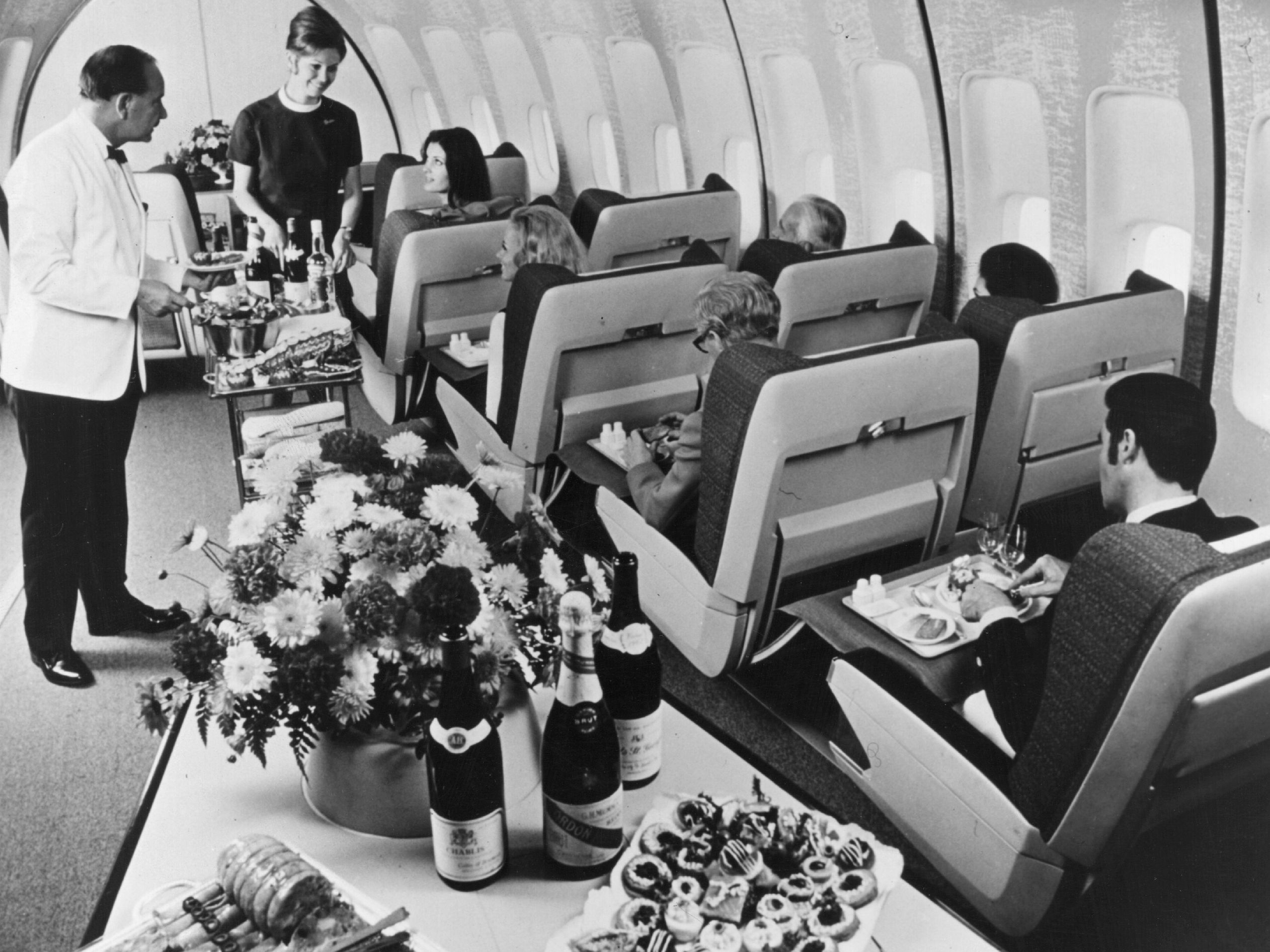
Over time, the upper deck has grown to create more room for first and business class seats and amenities.
Source: Insider
Fox Photos/Getty Images
-
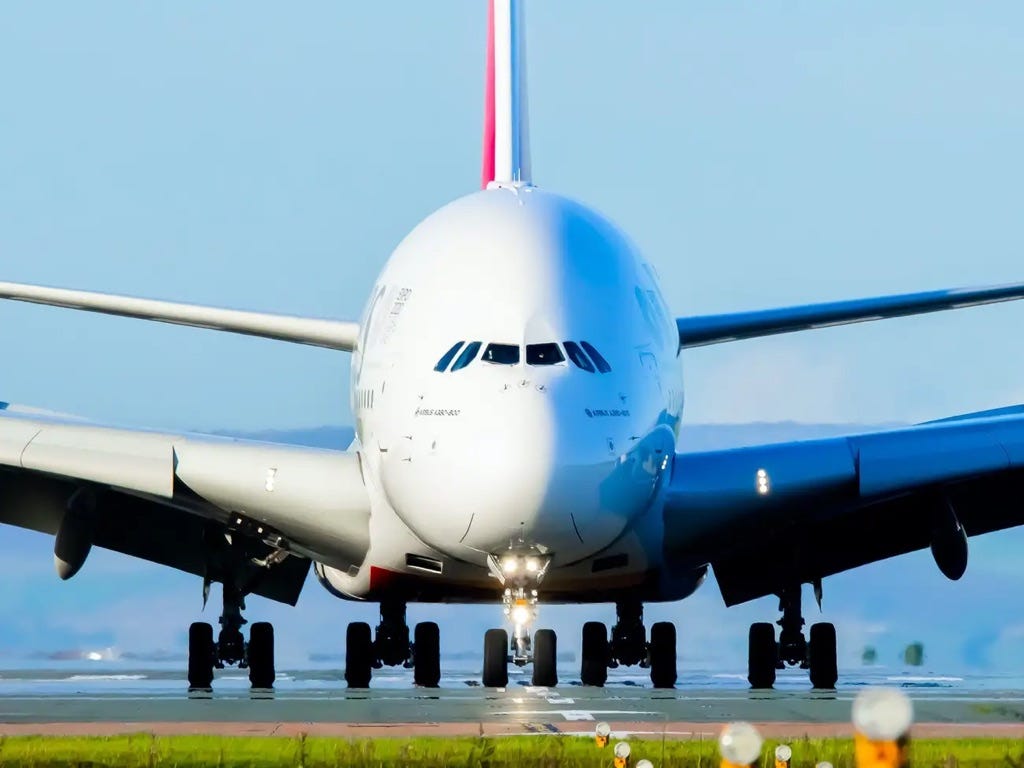
The only other commercial airliner to truly compete with the Queen of the Skies was the Airbus A380, which had a second level that stretched the full length of the jet.
Arnold Aaron/Shutterstock.com
-
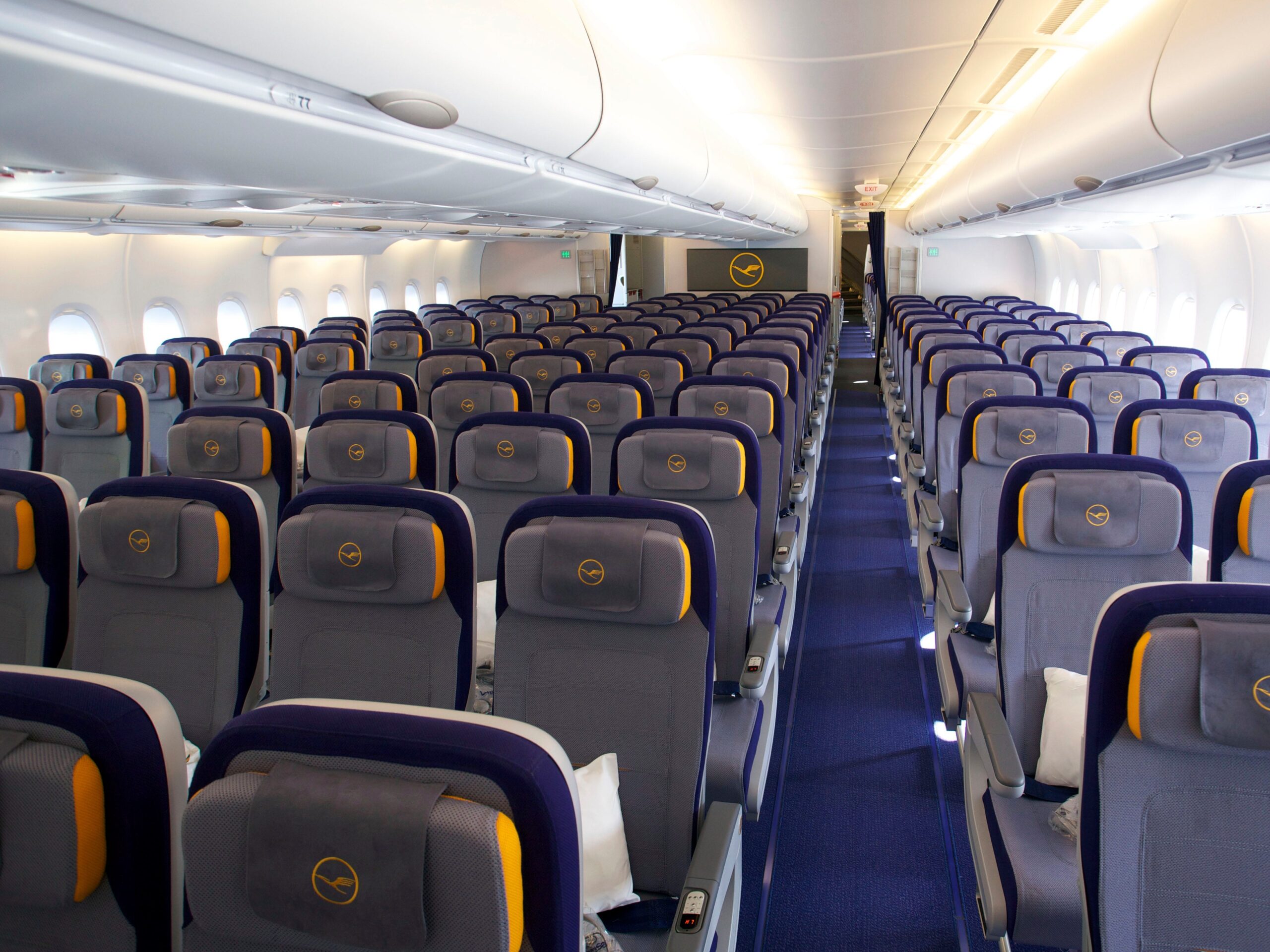
The mammoth plane can carry up to 545 people in four classes and became a workhorse for airlines like Emirates, complete with a shower spa onboard for first class passengers.
Source: Airbus, Emirates is bringing its redesigned Airbus A380 with premium economy seating and upgrades in every cabin to the US — see inside
Lufthansa.
-
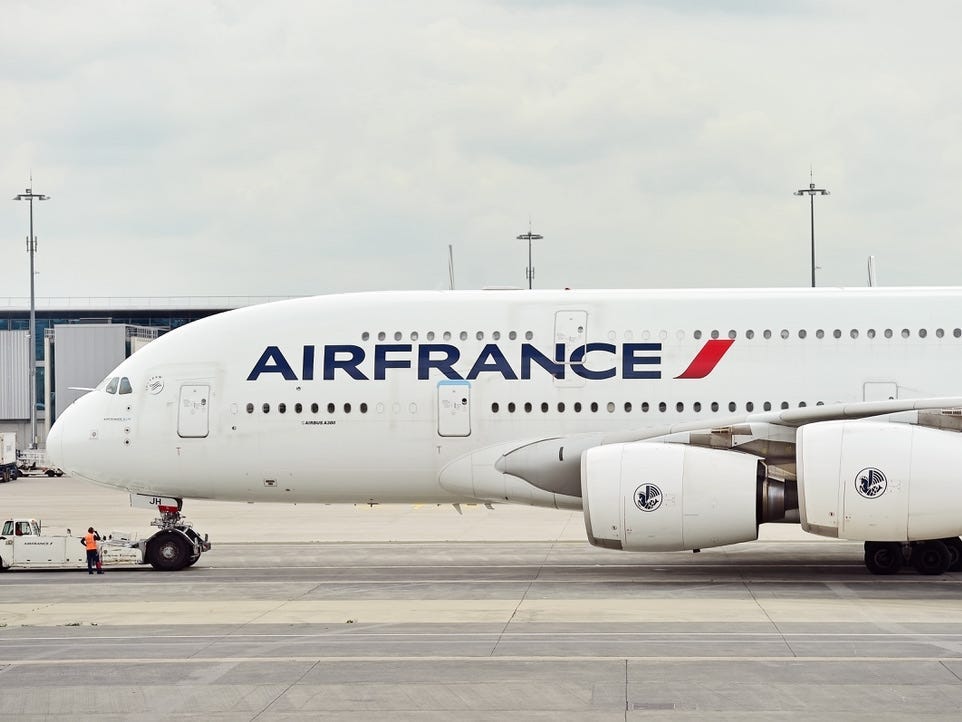
However, the superjumbo has also met its own end, with Airbus ending production in 2021 and airlines worldwide speeding up the A380's retirement during the pandemic.
Source: Reuters
roibu/Shutterstock
-
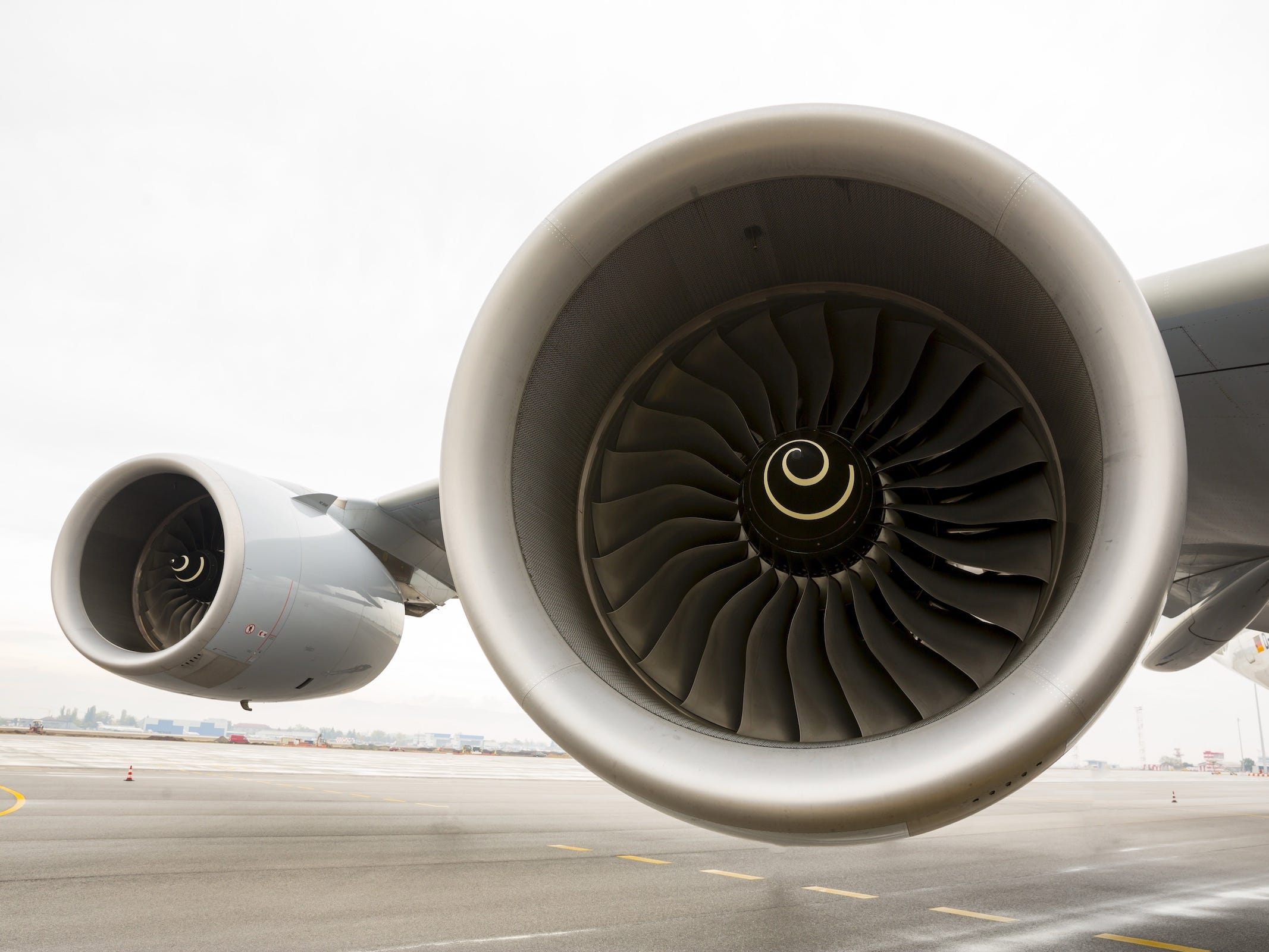
This was particularly due to its inefficient four engines — similar to the 747's downfall.
Belish/Shutterstock
-
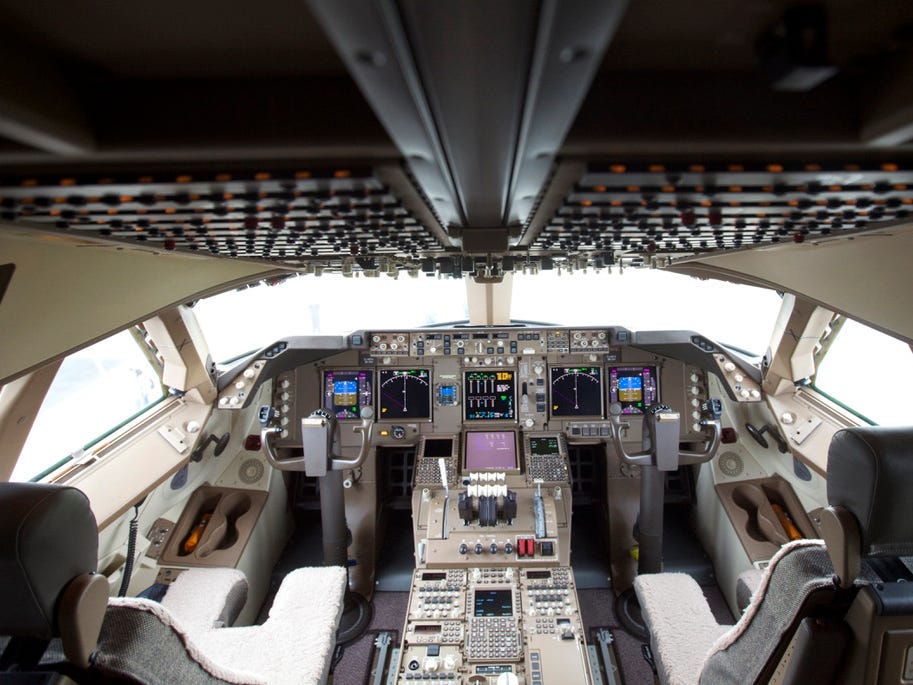
4: The revolutionary Queen of the Skies made international travel accessible for more than just the rich and famous.
Source: Smithsonian Magazine
Stephen Brashear/Getty Images
-
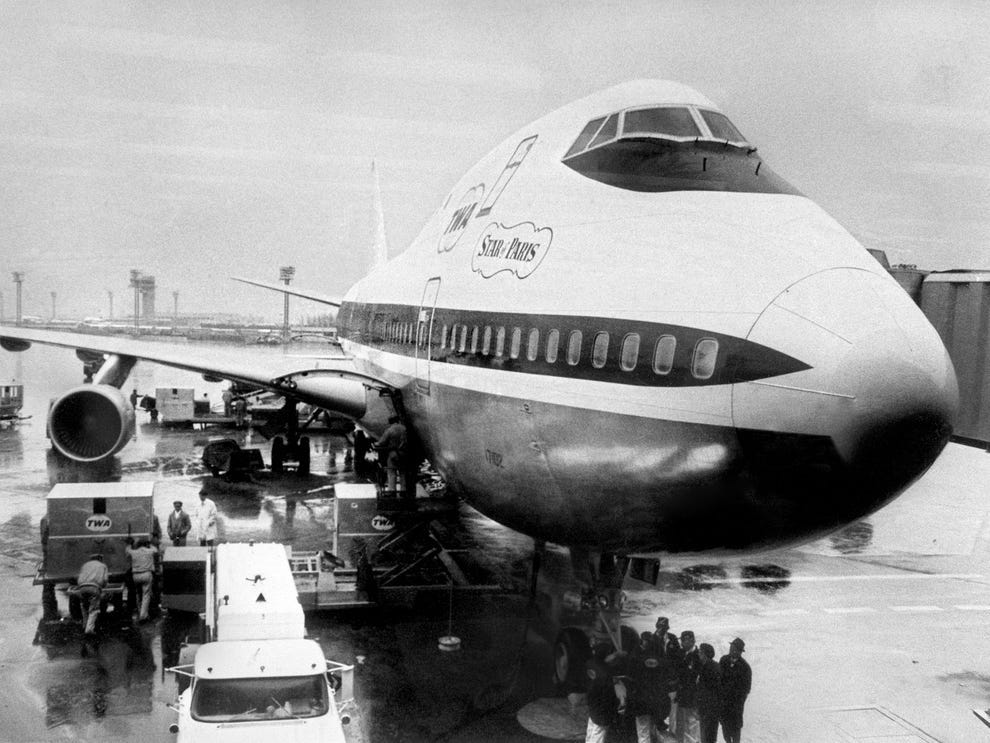
The 747 was considered a step up from the 707 with its size, range, and low operating costs, which are thanks to its more powerful bypass engines that could reduce fuel consumption by 33% compared.
Source: Deutsche Welle, Smithsonian National Air and Space Museum, Airline Ratings
-/AFP via Getty Images
-
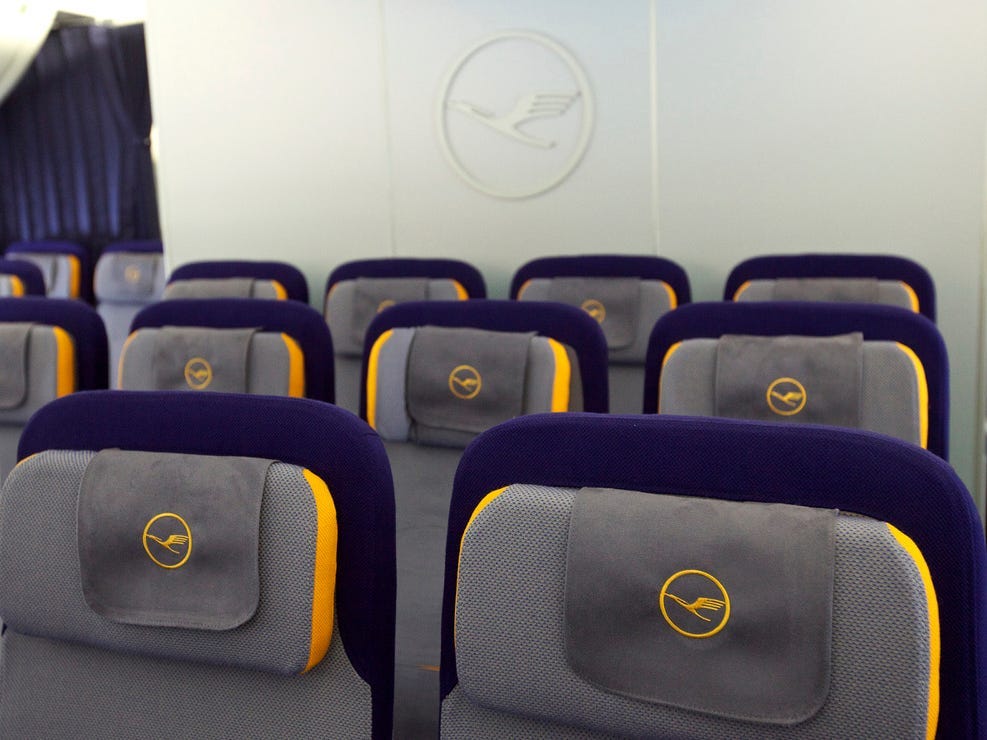
And, because the jet could carry twice as many people compared to its predecessor, airlines could reduce fares without sacrificing passenger comfort.
Source: Smithsonian Magazine, Airlines Ratings
Stephen Brashear/Getty Images
-
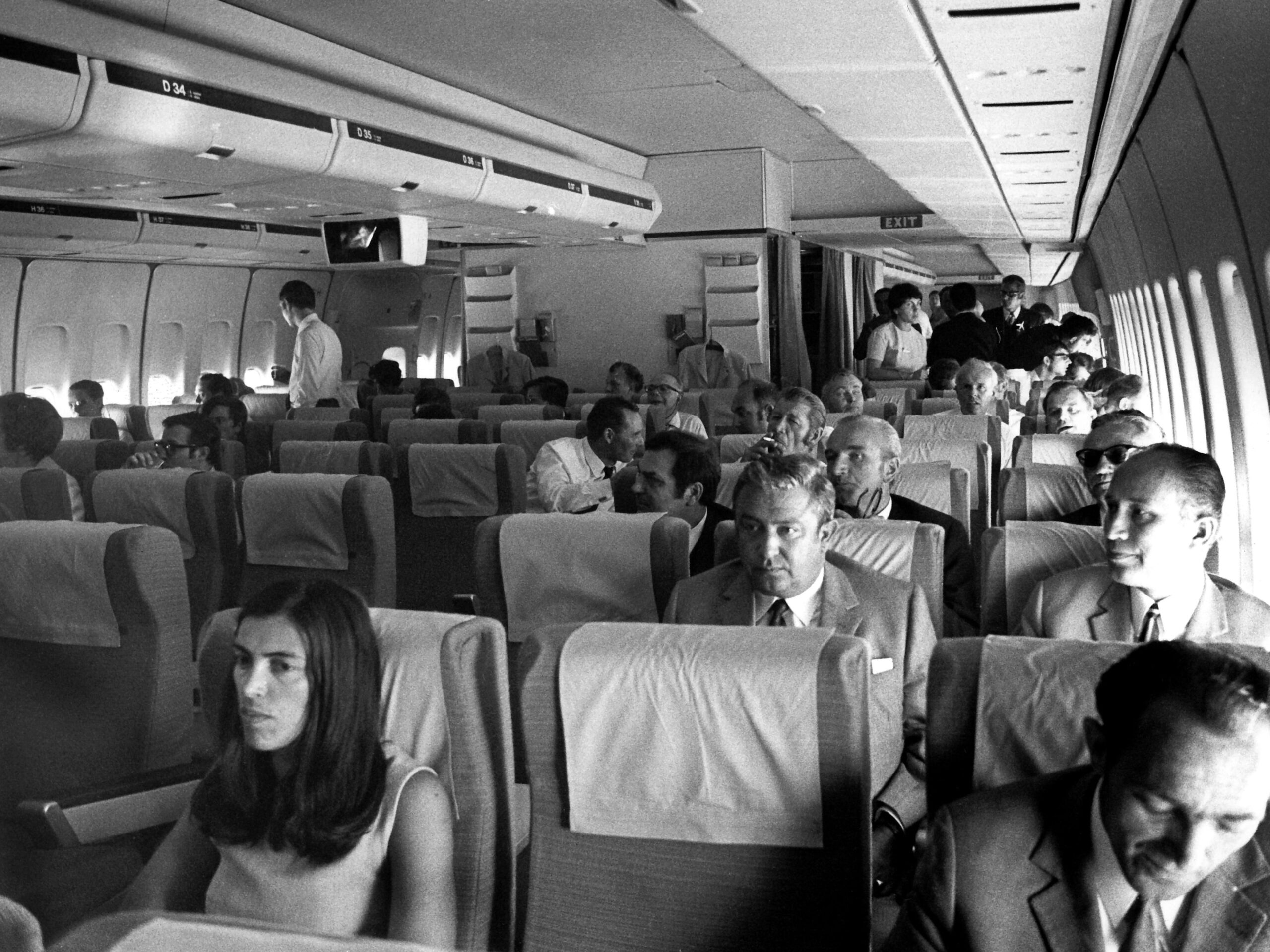
This effectively changed the way people fly, and for the first time allowed those who couldn't afford a seat on the 707 to travel to places that were previously unreachable.
Source: Smithsonian Magazine
Gerhard Rauchwetter/Picture Alliance via Getty Images
-
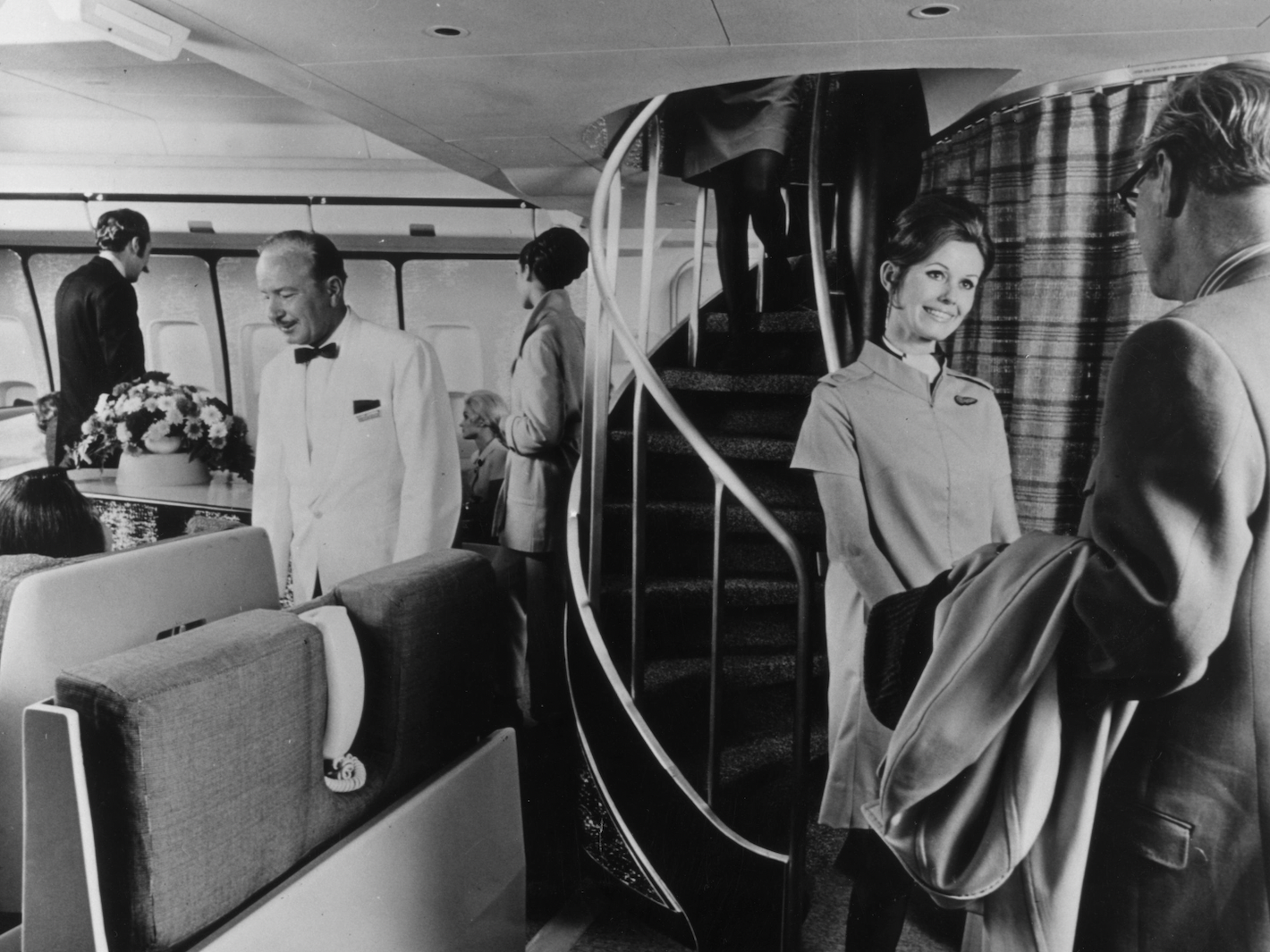
5: The double-decker plane featured bars and lounges on its upper level, which was accessed via a staircase.
Source: Executive Traveller
Fox Photos/Getty Images
-
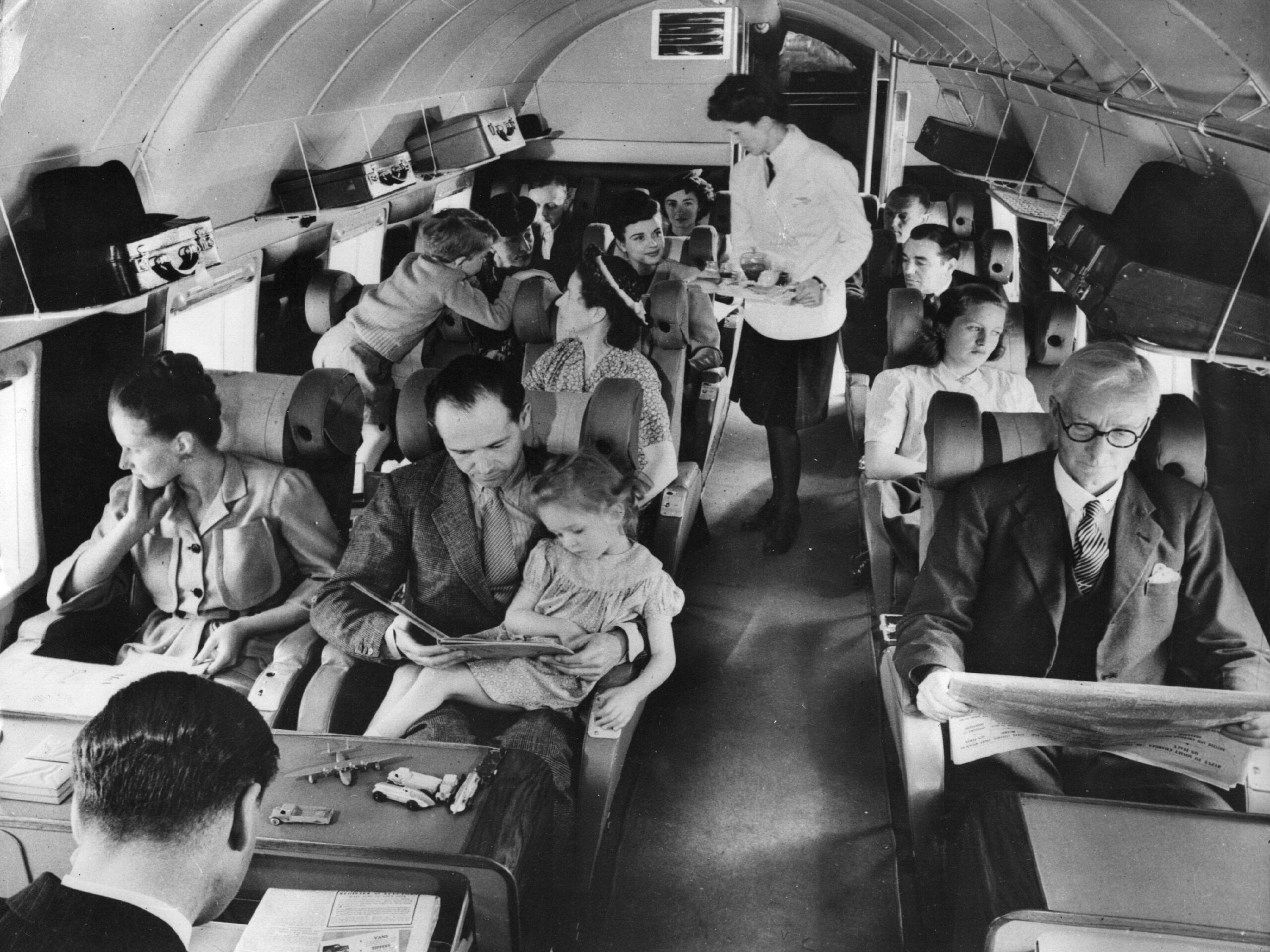
In the early days of the jet age, flying was often a high-class experience with travelers dressing up for the occasion.
THEN AND NOW: Photos that show how glamorous flying used to be
Fox Images/Getty Images
-
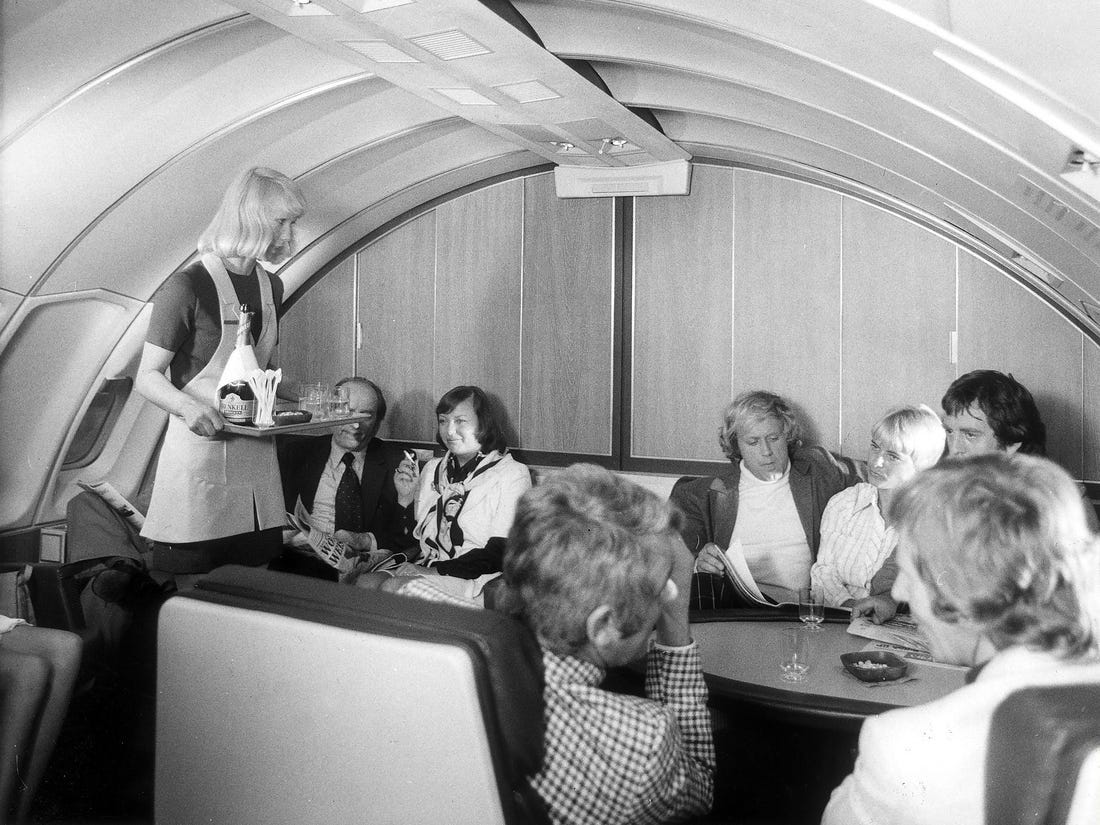
Through the 1960s, airlines started playing around with different cabin ideas, like business and economy, and some carriers decided to use the 747's upper level as an exclusive space reserved for premium customers.
Hutmacher/ullstein bild/Getty
-
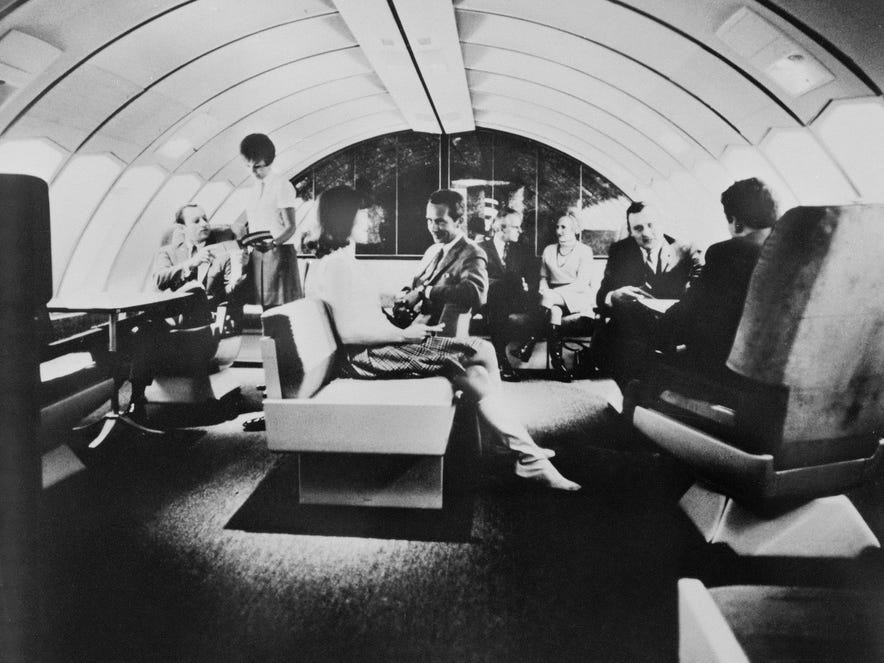
Pan Am's first 747 had a "restaurant in the sky" for first class passengers who could sit at four-person tables with friends or strangers.
Source: Executive Traveller, Photos show the glory days of Pan Am, a symbol of a bygone era of luxurious air travel before the airline went bust 29 years ago
Bettmann/Contributor via Getty Images
-
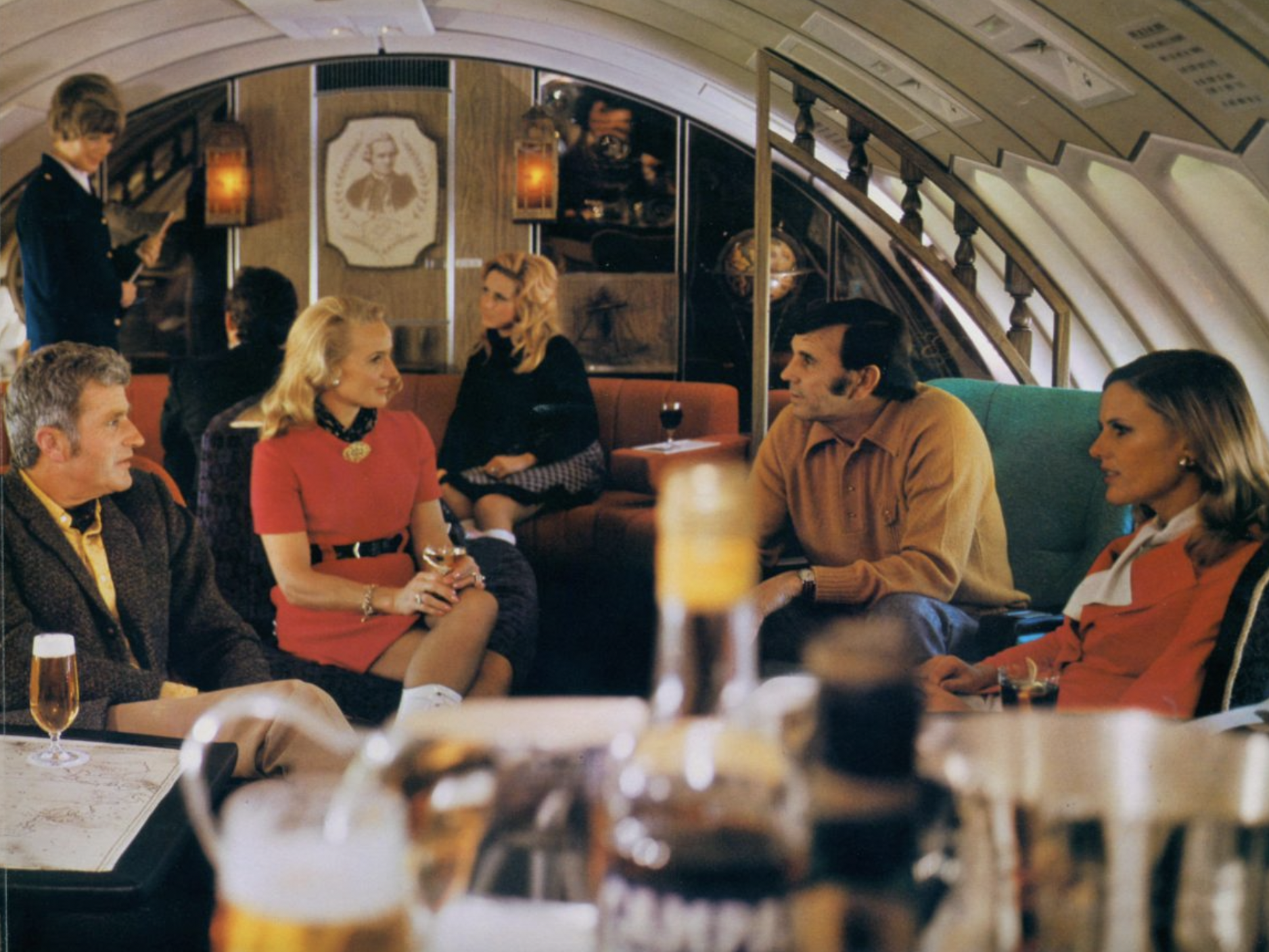
Meanwhile, Australian flag carrier Qantas had the Captain Cook Lounge in its 747's upper deck where premium flyers could relax, drink, or read a newspaper.
Source: Qantas
Qantas
-
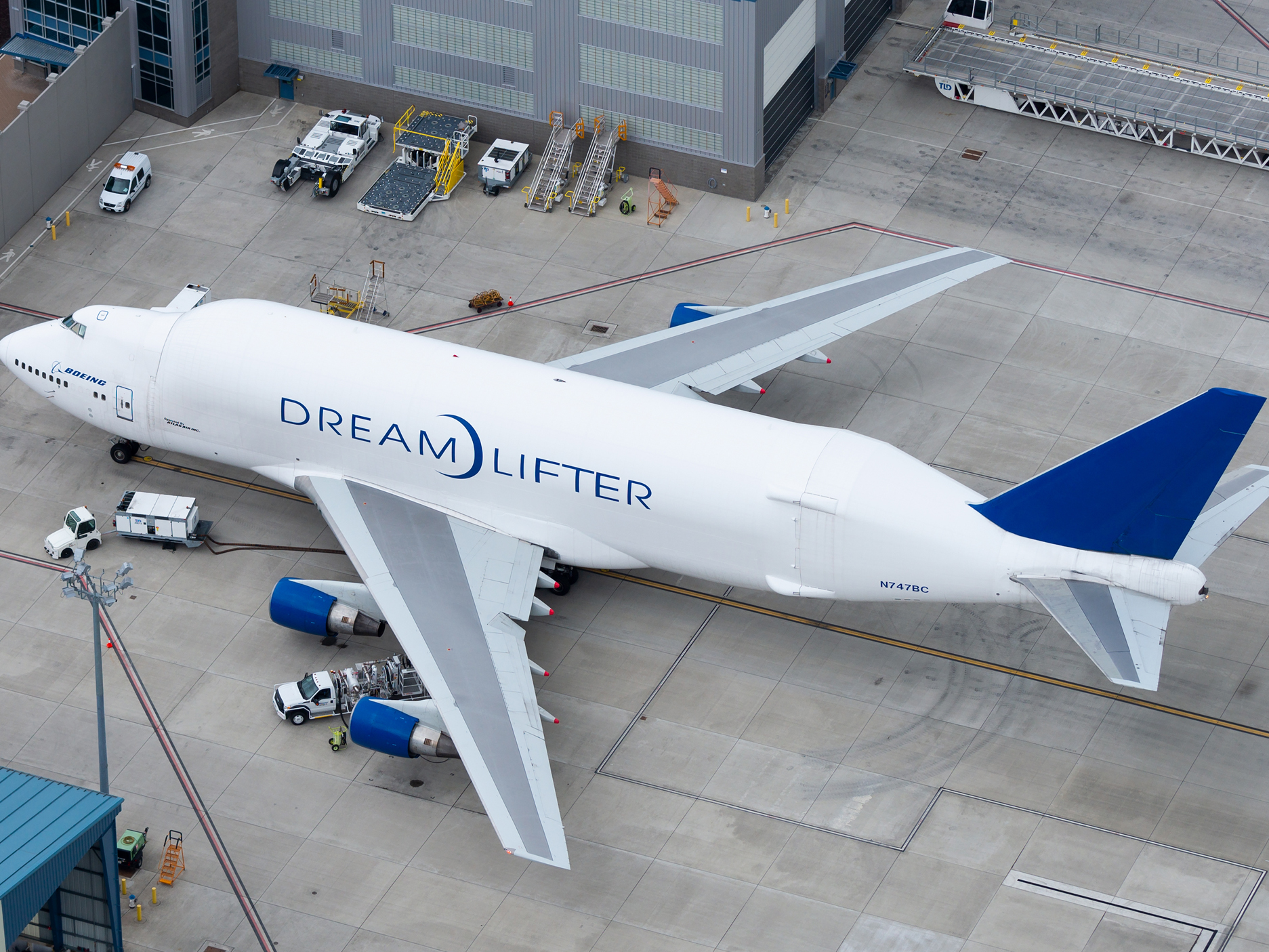
6: Boeing built several specially-modified 747s to transport the space shuttle, the president, and parts of other commercial aircraft.
Source: Boeing
Thiago B Trevisan / Shutterstock.com
-
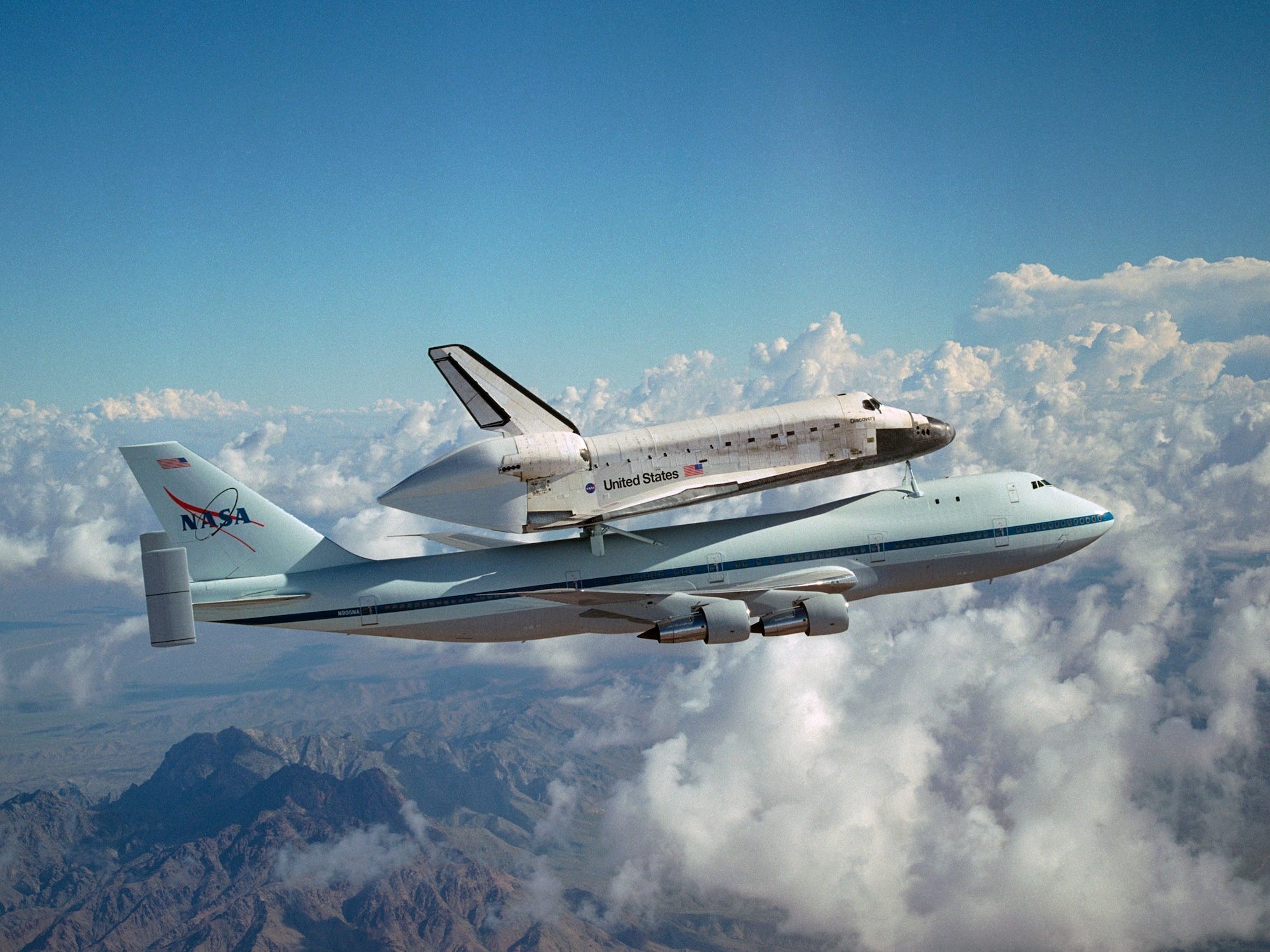
Probably the most impressive feat is the two 747-100s that the National Aeronautics and Space Administration asked Boeing to convert into Space Carrier Aircraft.
Source: NASA
NASA
-
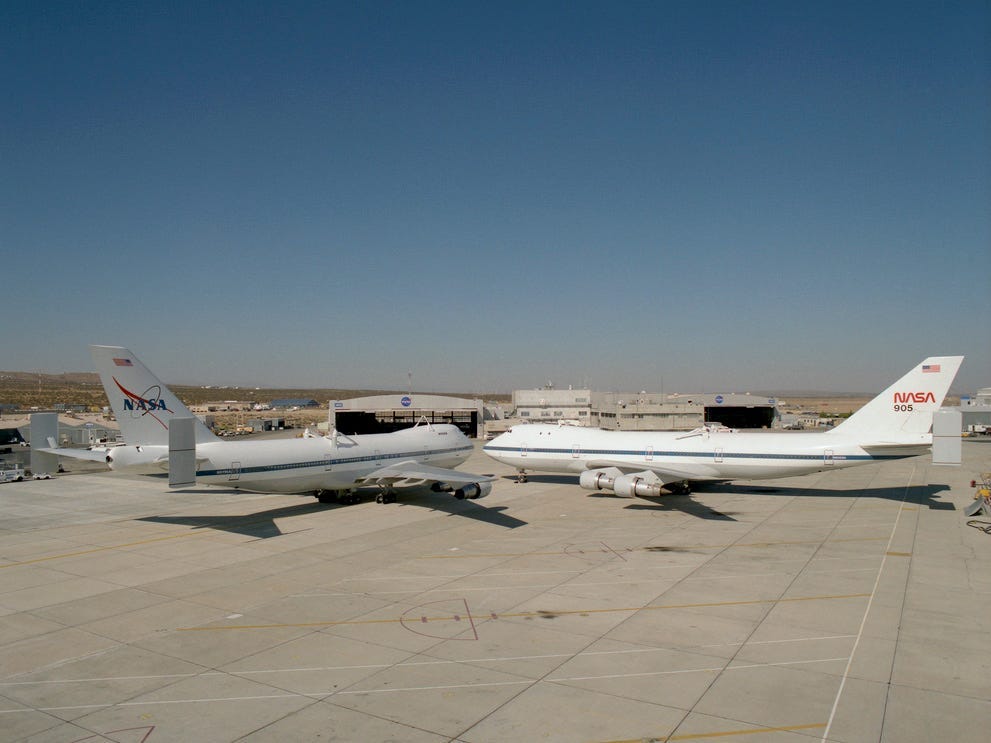
The planes — one from American Airlines and the other from Japan Airlines — carried the shuttles from their landing sites to the Kennedy Space Center, and to other locations that were too far to travel by ground transport.
Source: NASA
NASA
-
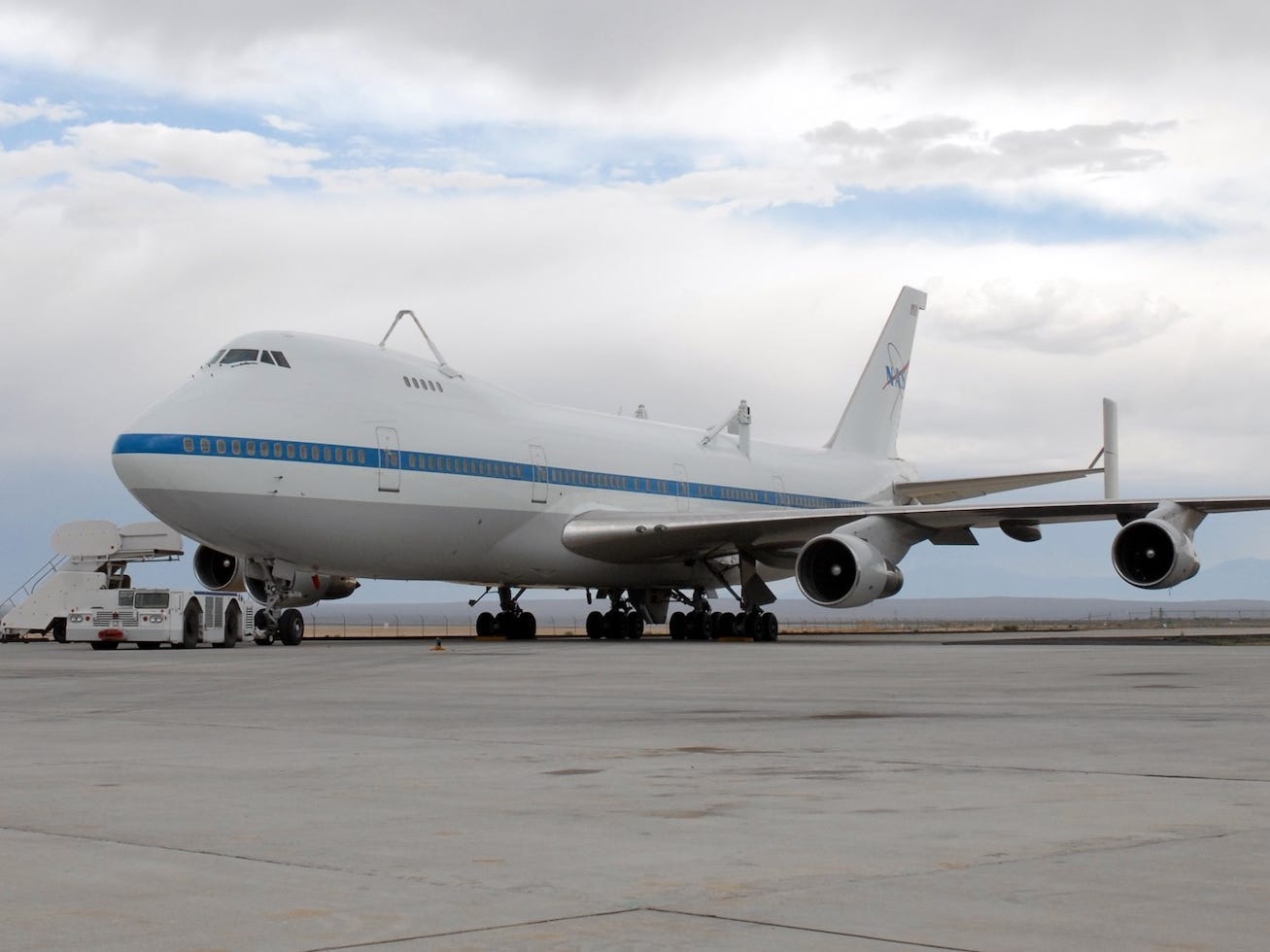
The modified jets had three strong rods protruding from the top, which is where the orbiters were attached.
Source: NASA
NASA
-
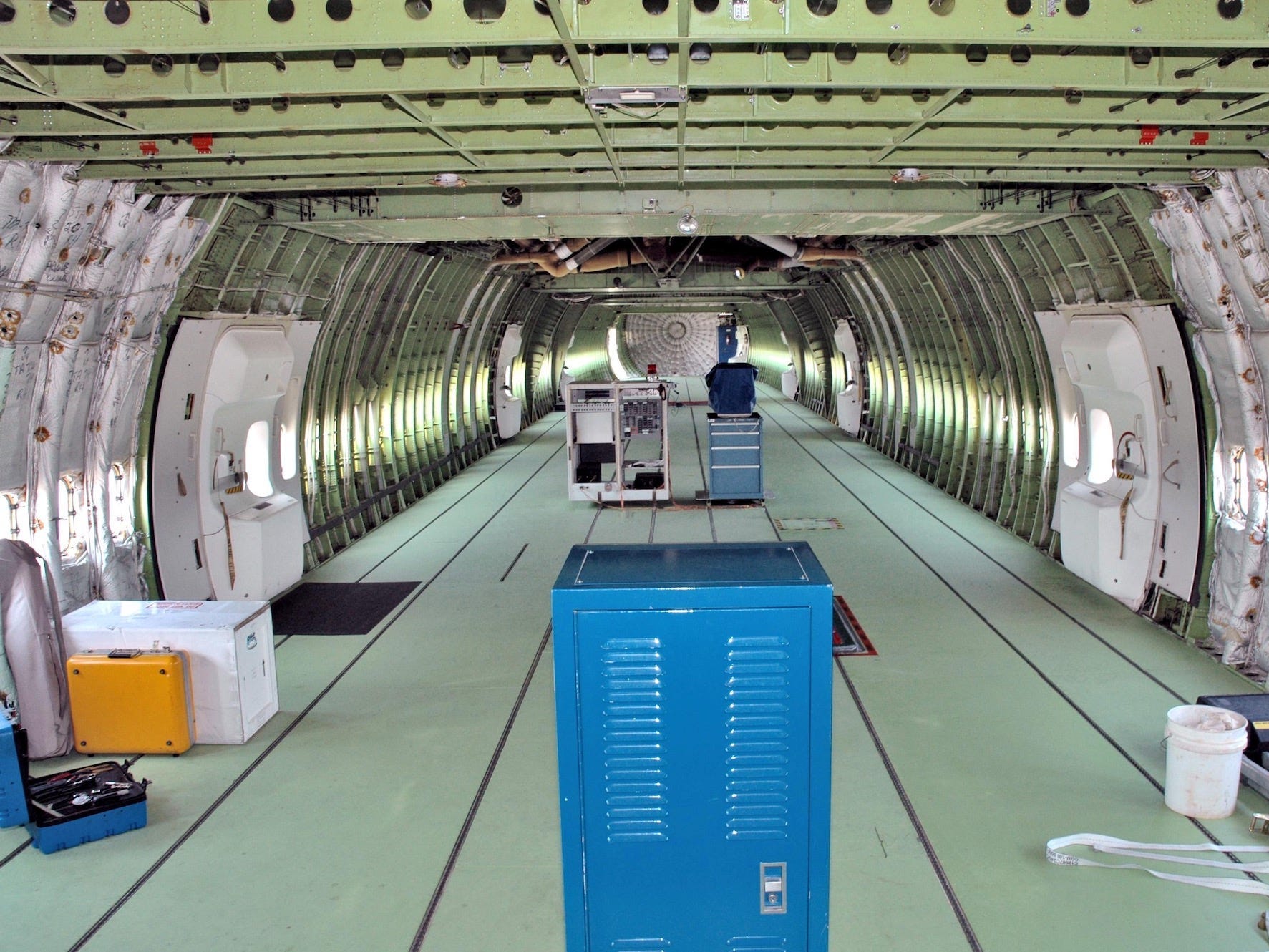
Moreover, most of the cabin was gutted, the pilots had special monitoring systems for the shuttle, and two extra vertical stabilizers were added to enhance the 747's "directional stability."
Source: NASA
NASA
-
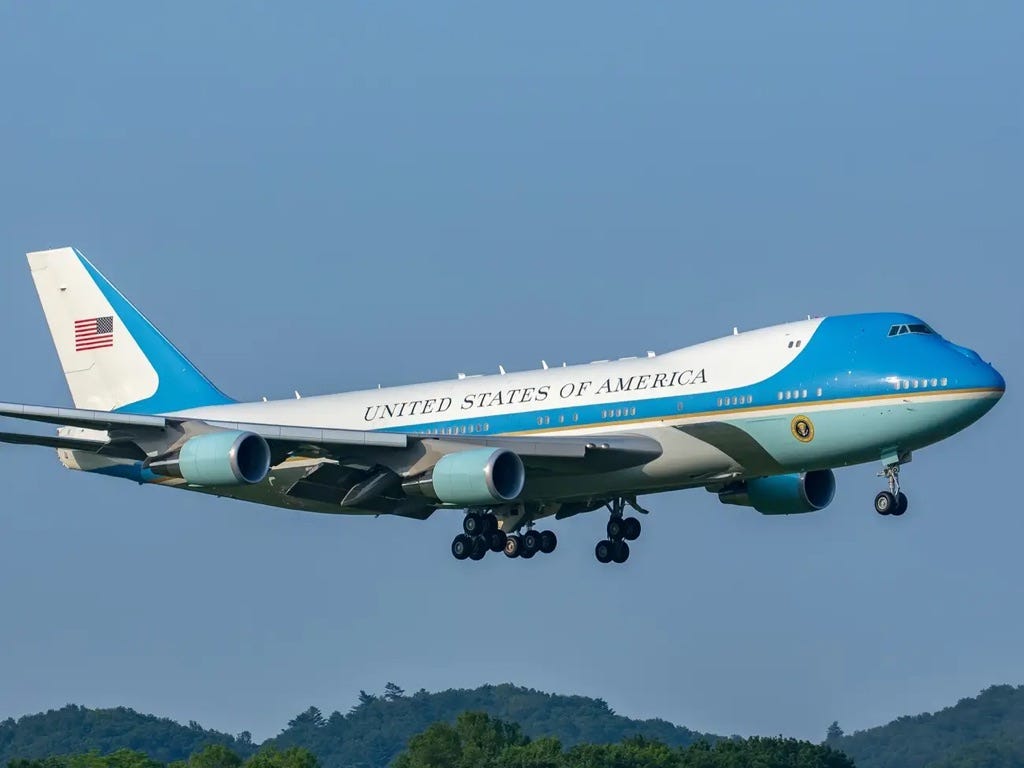
-
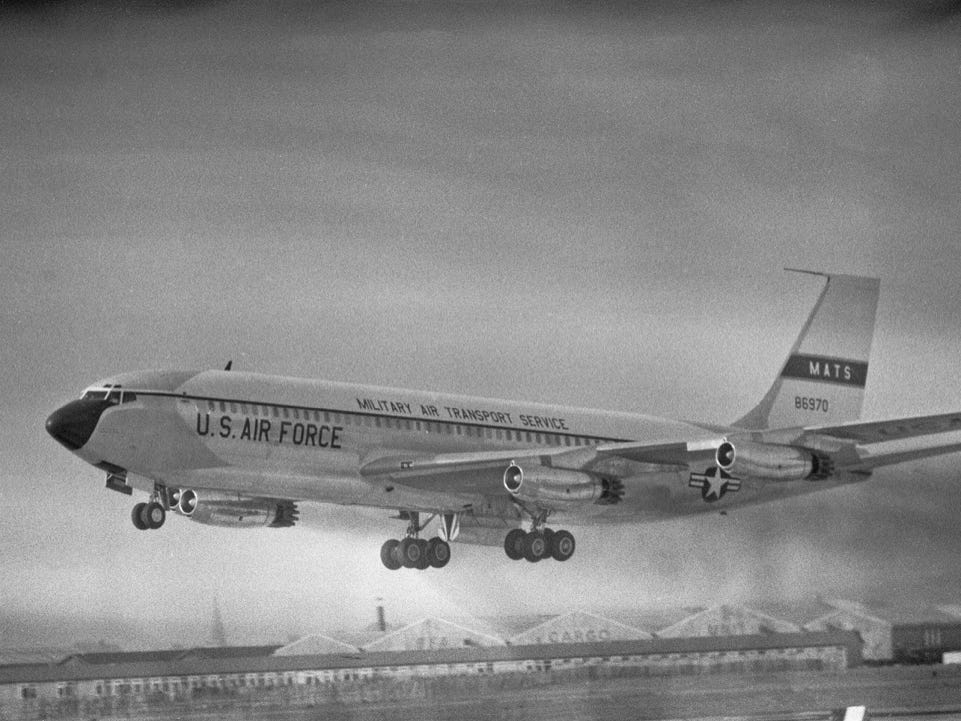
While the 707 had the job for nearly 30 years, two 747-200B variants were modified in 1990 to create Air Force One.
Source: Boeing
Terry Fincher/Mirrorpix/Getty Images
-
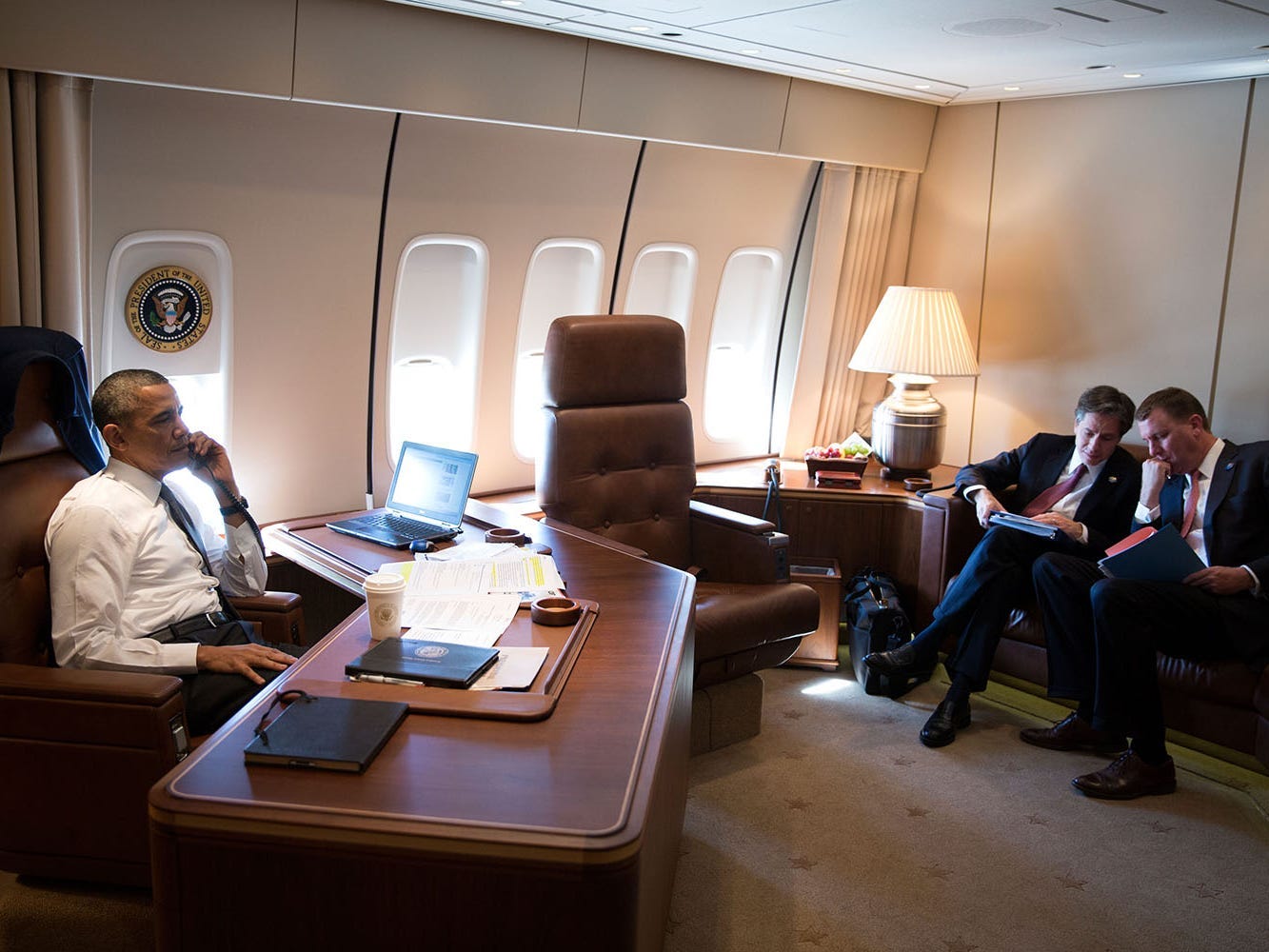
Having carried presidents like George H.W. Bush and Barack Obama, the plane can refuel midair and is considered a flying Oval Office with myriad office and conference space, as well as staterooms.
31 photos that show how Air Force One has changed through the years
The White House
-
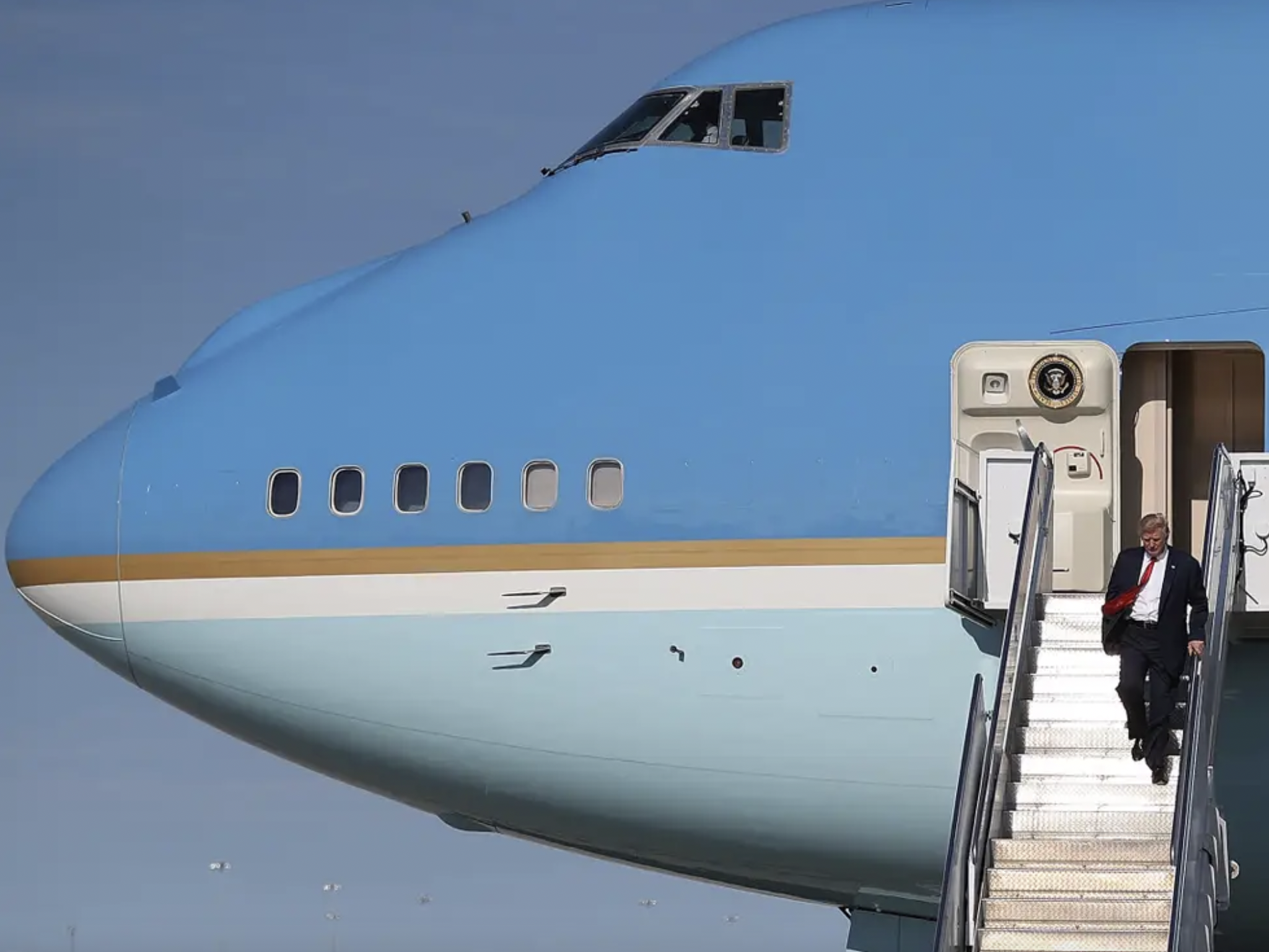
However, both VIP jets are being upgraded to the more efficient and longer-ranged 747-8i variant, though they will not be able to refuel in the air and the timeline for delivery has been pushed from 2024 to potentially 2028.
Source: DefenseOne, Boeing's new Air Force One jets are so late that the old ones may need to keep flying until 2028, costing taxpayers $340 million: report
Joe Raedle/Getty Images
-
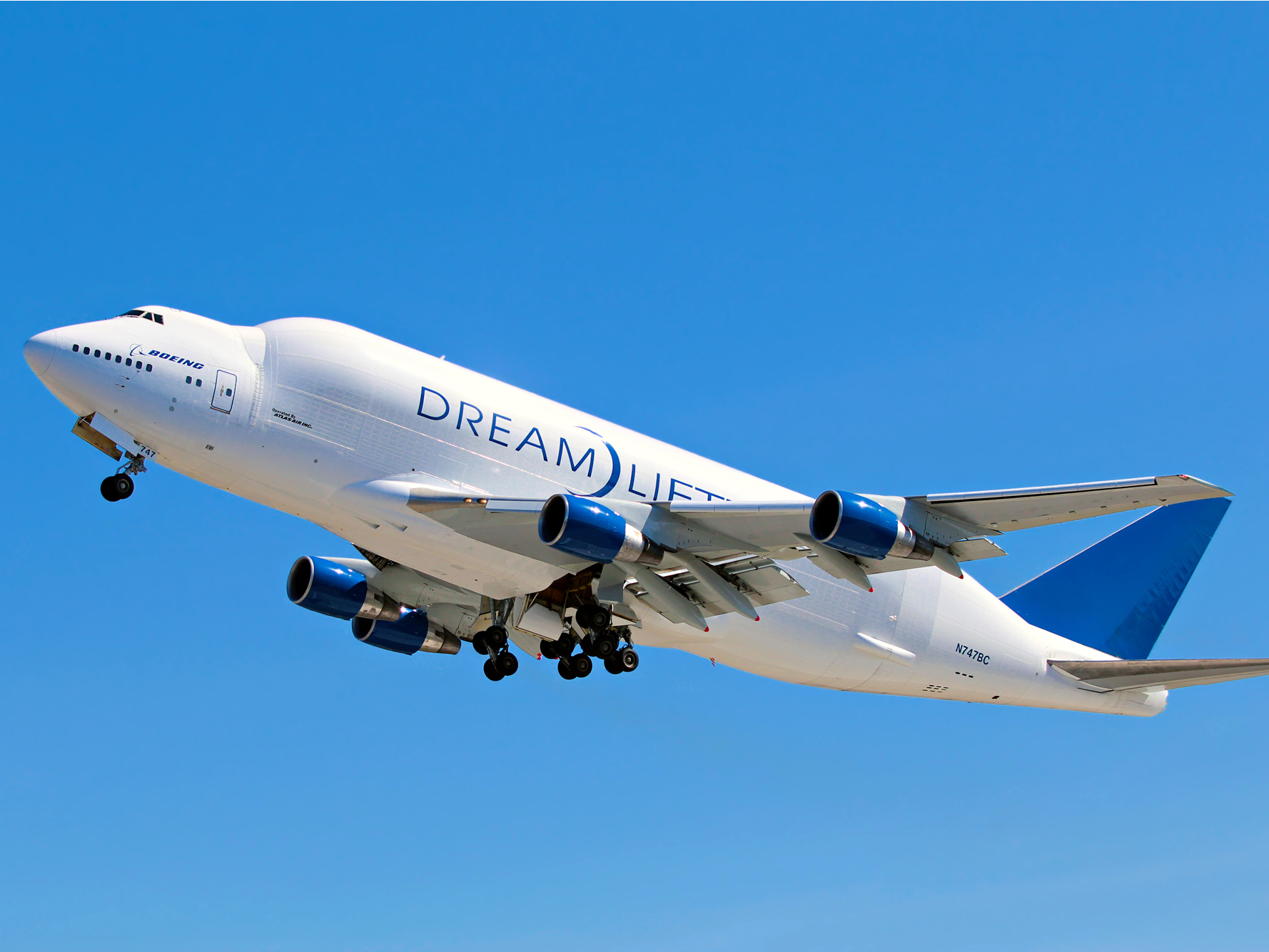
Another impressive 747 variant is the Boeing 747-400LCF Dreamlifter.
cpaulfell / Shutterstock.com
-
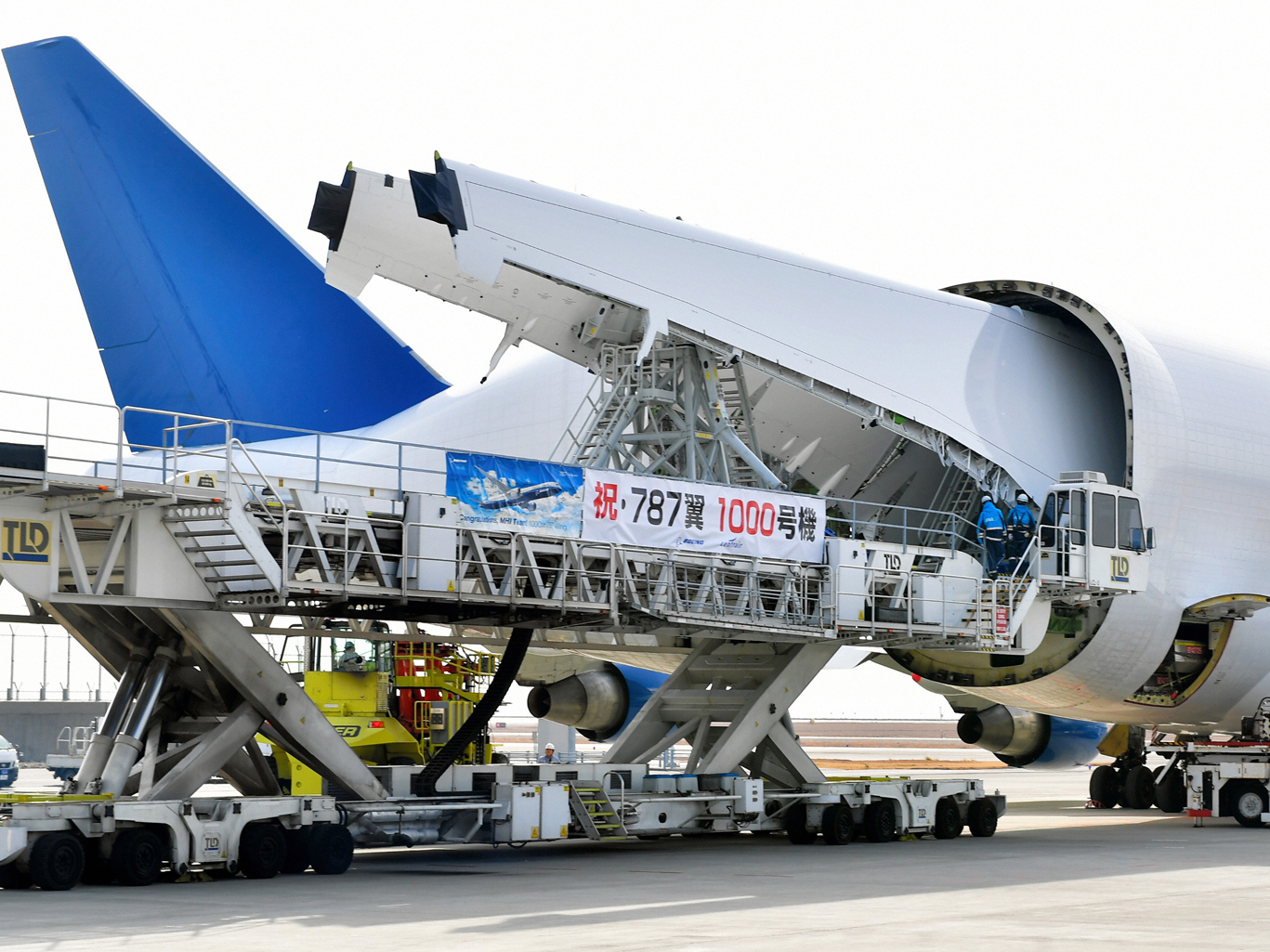
The jet is one of the biggest cargo planes in the world due to its oversized fuselage and was designed to transport 787 parts — like the wings — between global assembly lines.
Source: Boeing
Kyodo/Getty
-
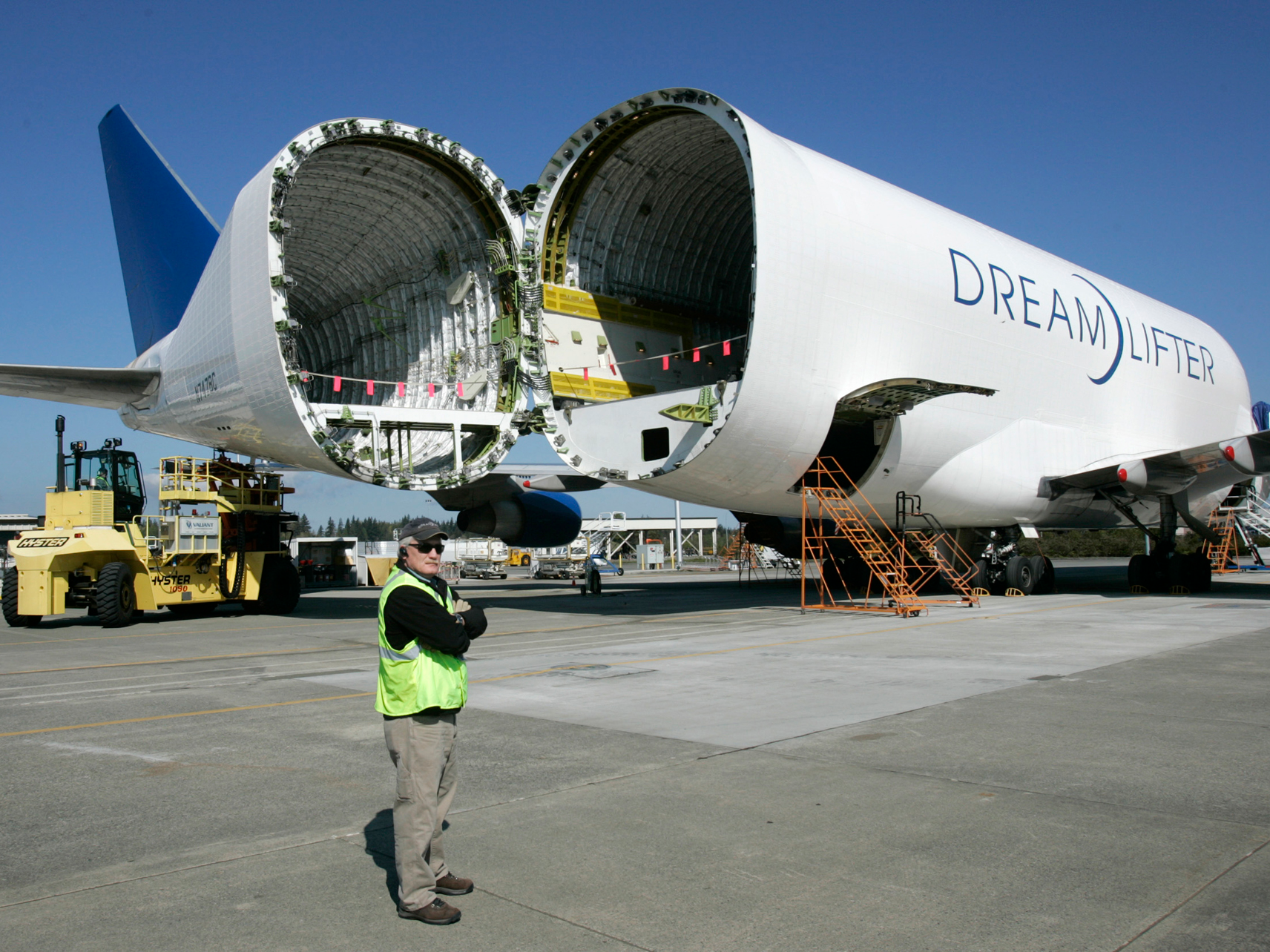
Specifically, the four-strong fleet each has 65,000 cubic meters of capacity, where oversized cargo is loaded through the giant plane's swing-tail door.
Source: Insider
Robert Sorbo/Reuters
-
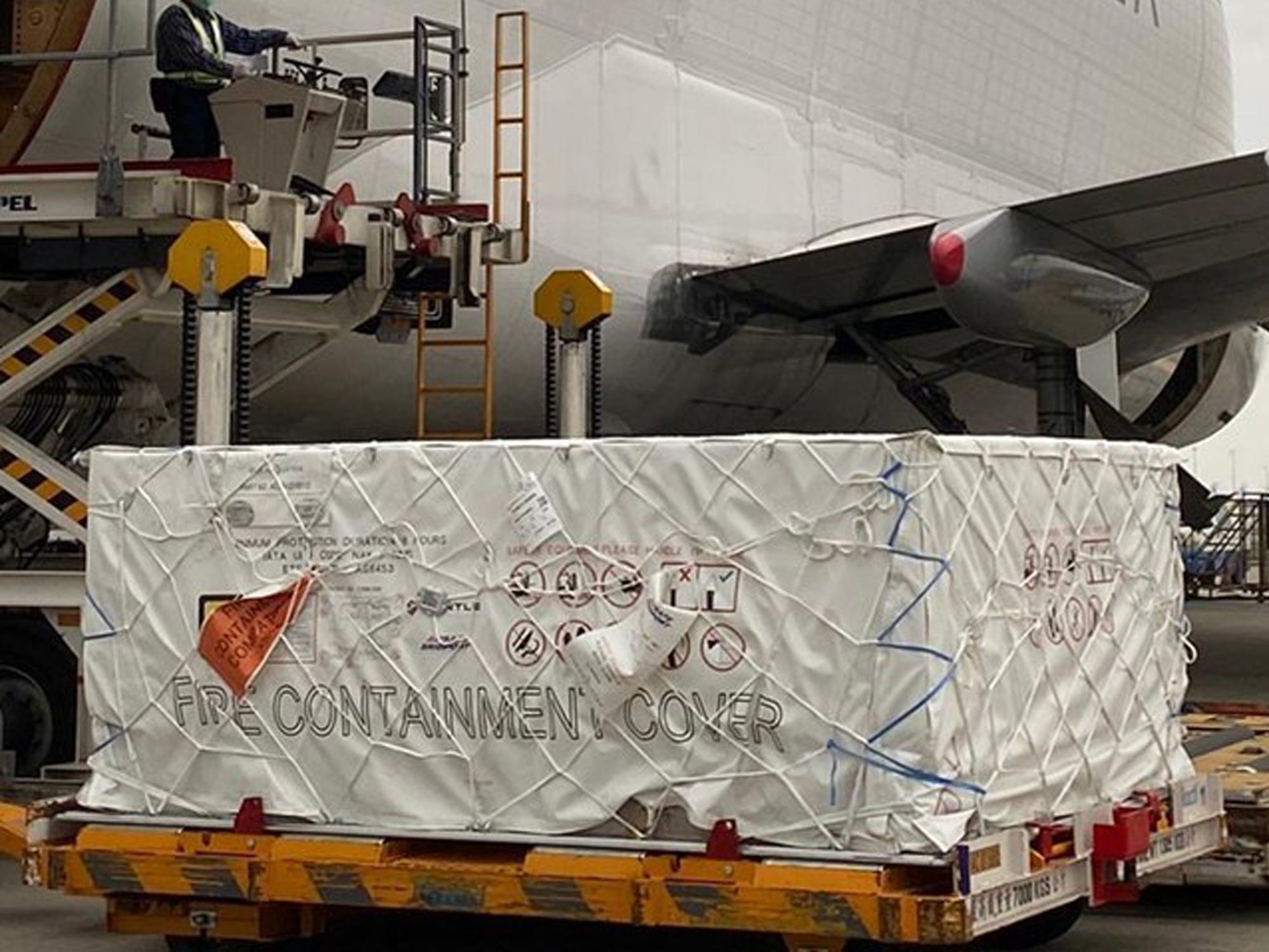
While Boeing's primary customer of the Dreamlifter is itself, it was also used during the pandemic to transport COVID-related supplies, like face shields, protective eye goggles, and masks.
Source: Boeing
Boeing
-
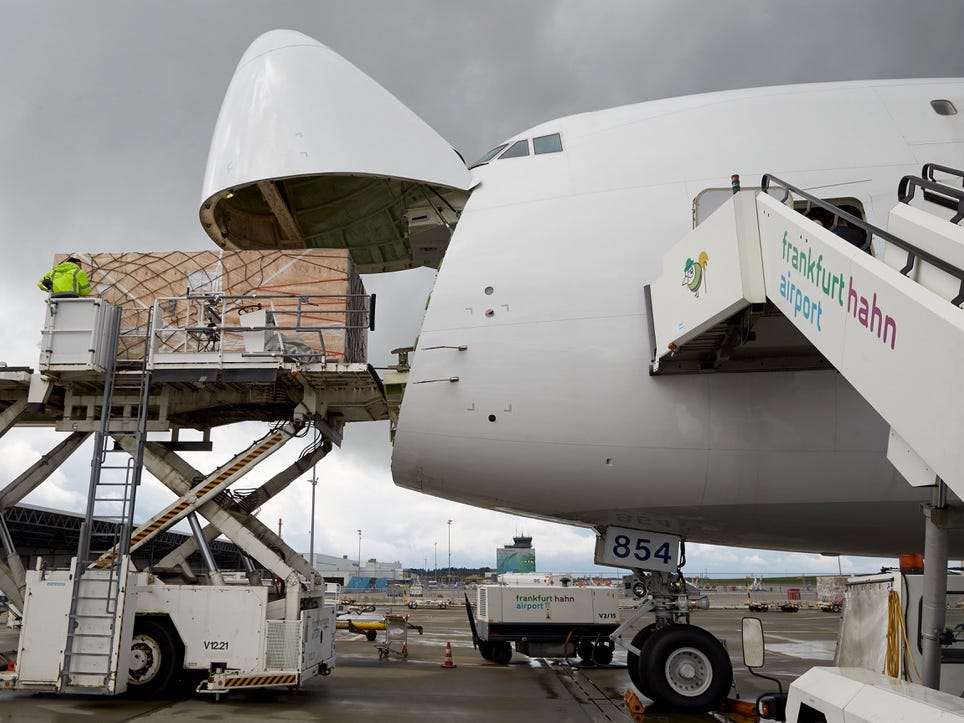
7: The 747 is one of the only cargo aircraft with the ability to load freight directly through its nose.
Source: Boeing
Thomas Frey/picture alliance via Getty Images
-
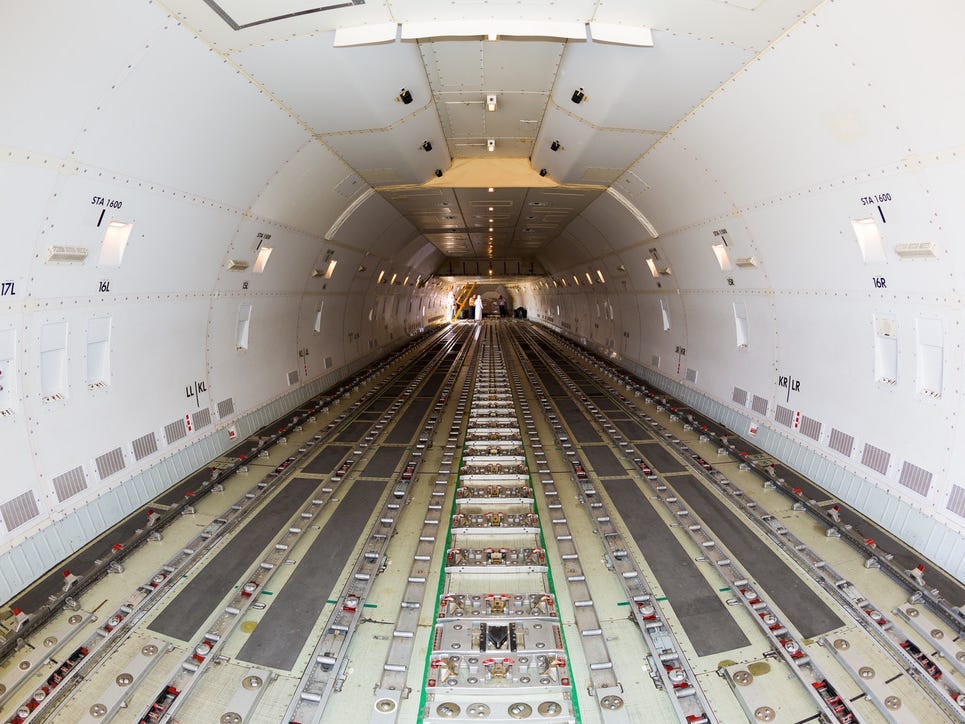
The door reduces load time for carriers as they can also simultaneously load from the back of the jet, but also allows for oversized items to be loaded without first being dismantled.
Source: Insider
M101Studio/Shutterstock
-
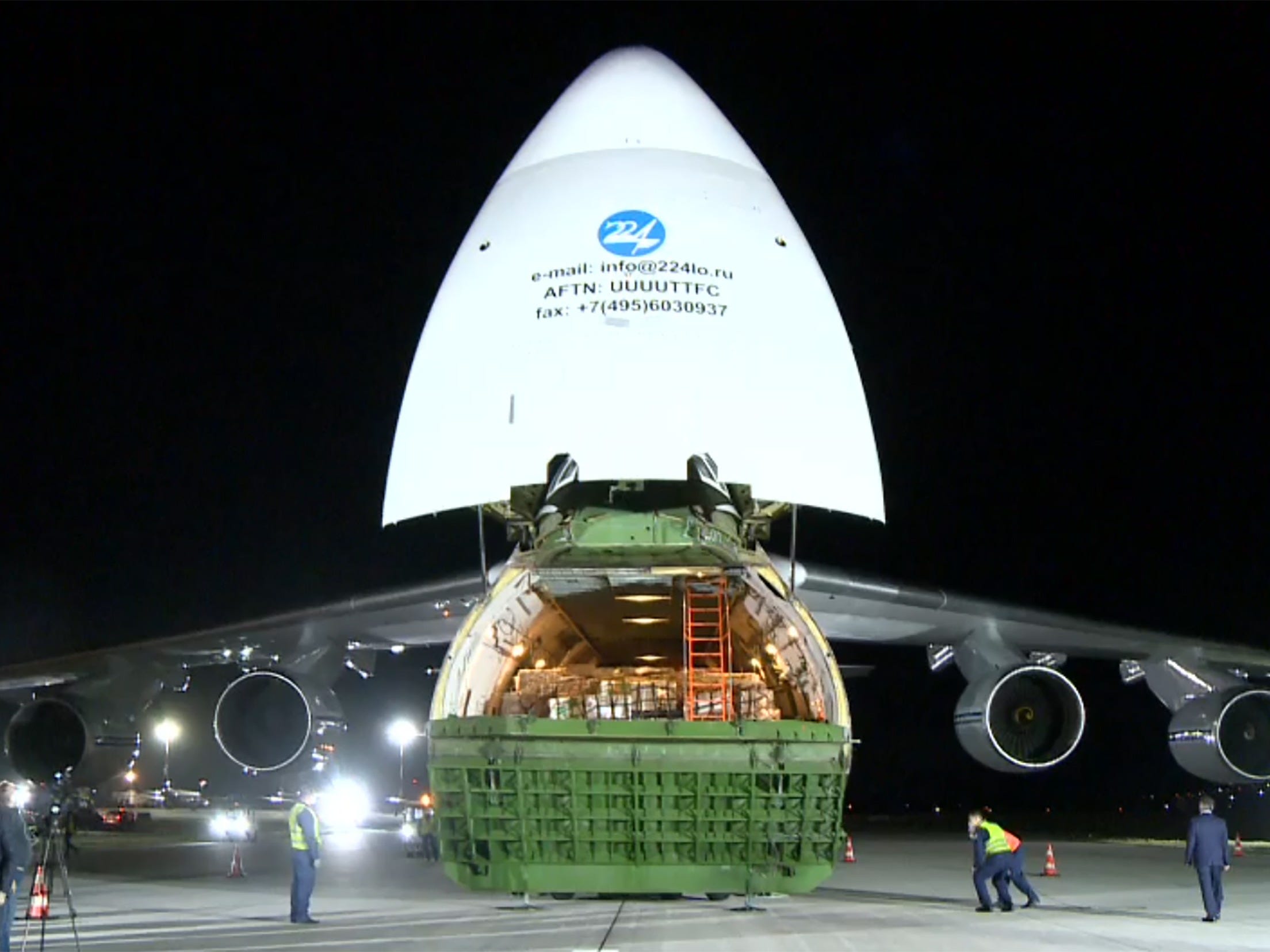
Airbus' Beluga, Ukraine's Antonov An-124, and the US Air Force's C-5 Galaxy cargo planes also have nose doors, but they are not widely used by multiple global carriers as the 747 is.
Russian Defense Ministry/TASS/Getty
-
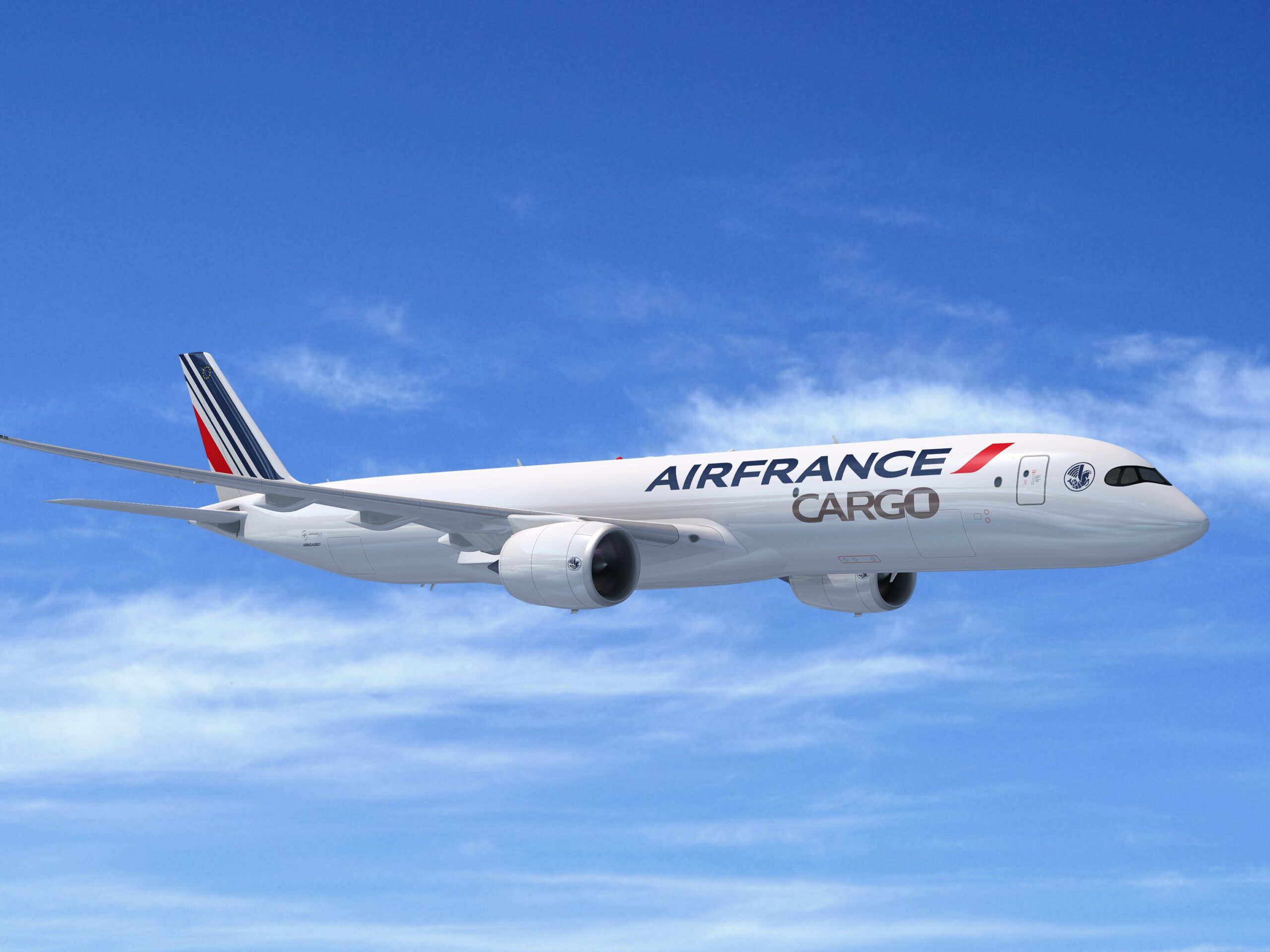
However, with the production of the 747 complete, the nose-loading perk with be missed as more cargo carriers ditch the jet for better cost-efficient aircraft.
FIXION/Airbus
-
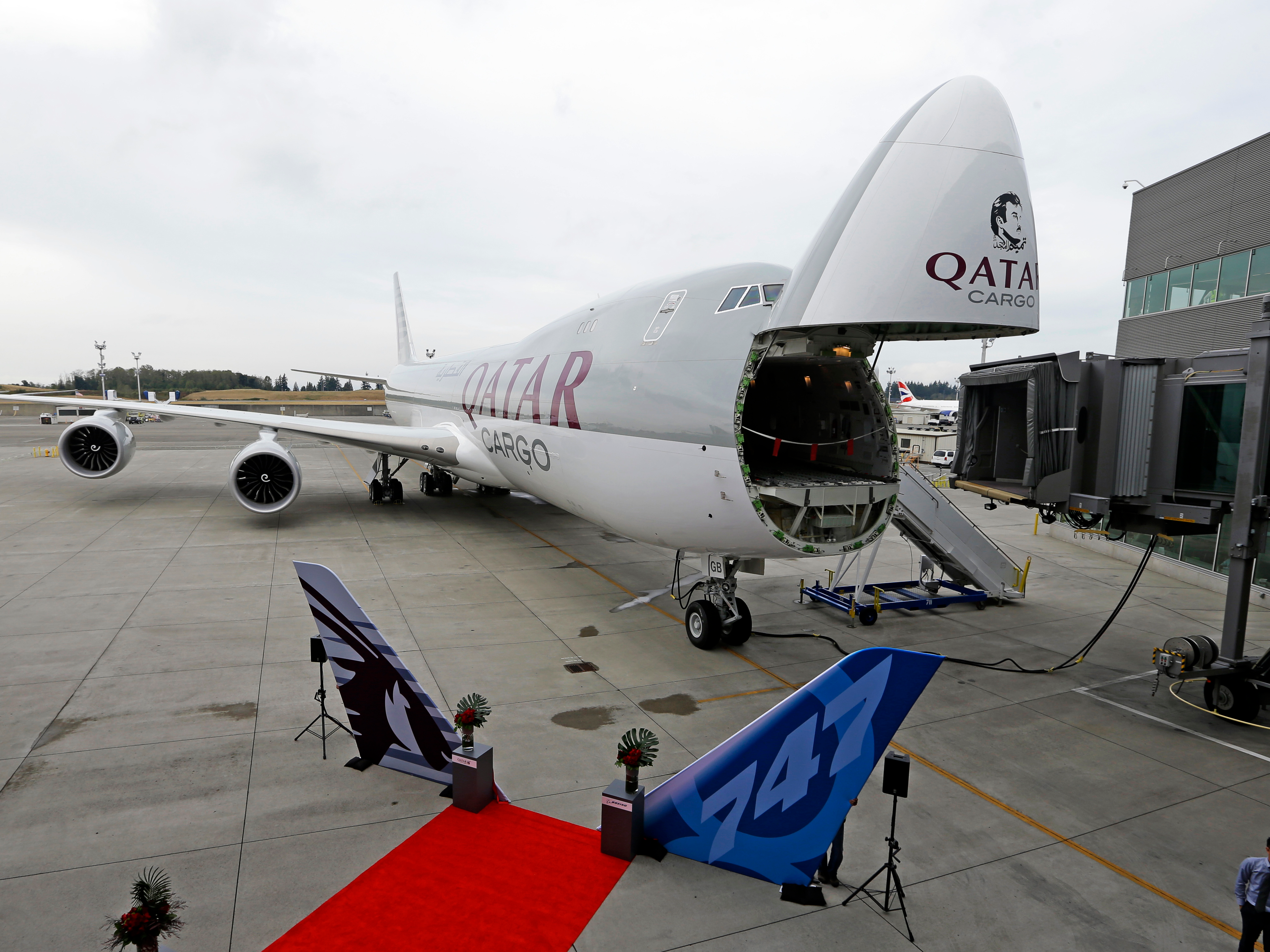
"The nose loader for oversized freight is what makes her so unique and capable to transport things other planes can't," a 747 cargo pilot told Insider in 2020.
Elaine Thompson/AP
-
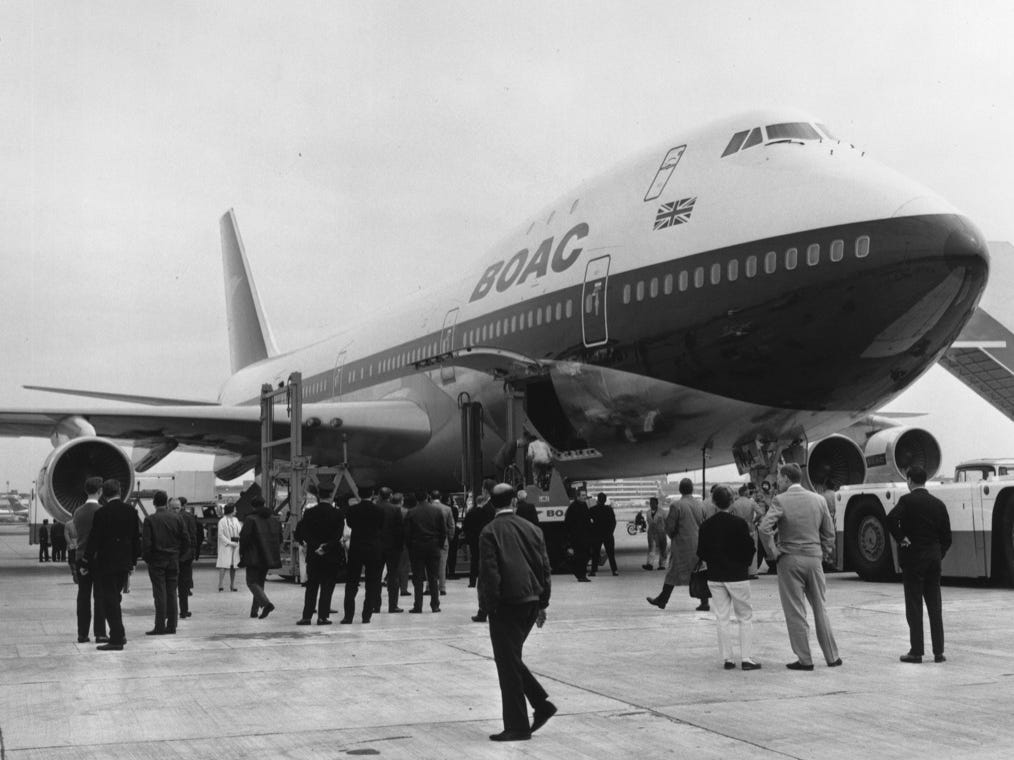
Not only will cargo operators miss the beloved 747, but so will passengers.
Keystone/Getty Images
-
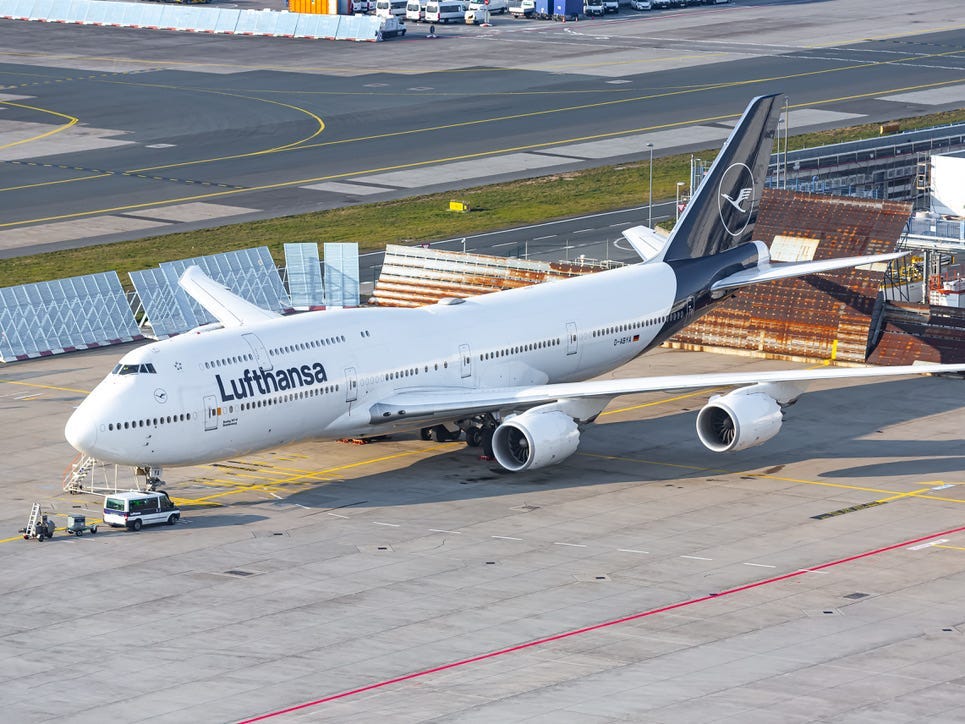
Ameer Junejo, who manages a 747 converted into a hotel in Sweden, told Insider that the jet has "memories," saying pilots and couples visit his site to reminisce about their days onboard.
Lukas Wunderlich/Shutterstock
-
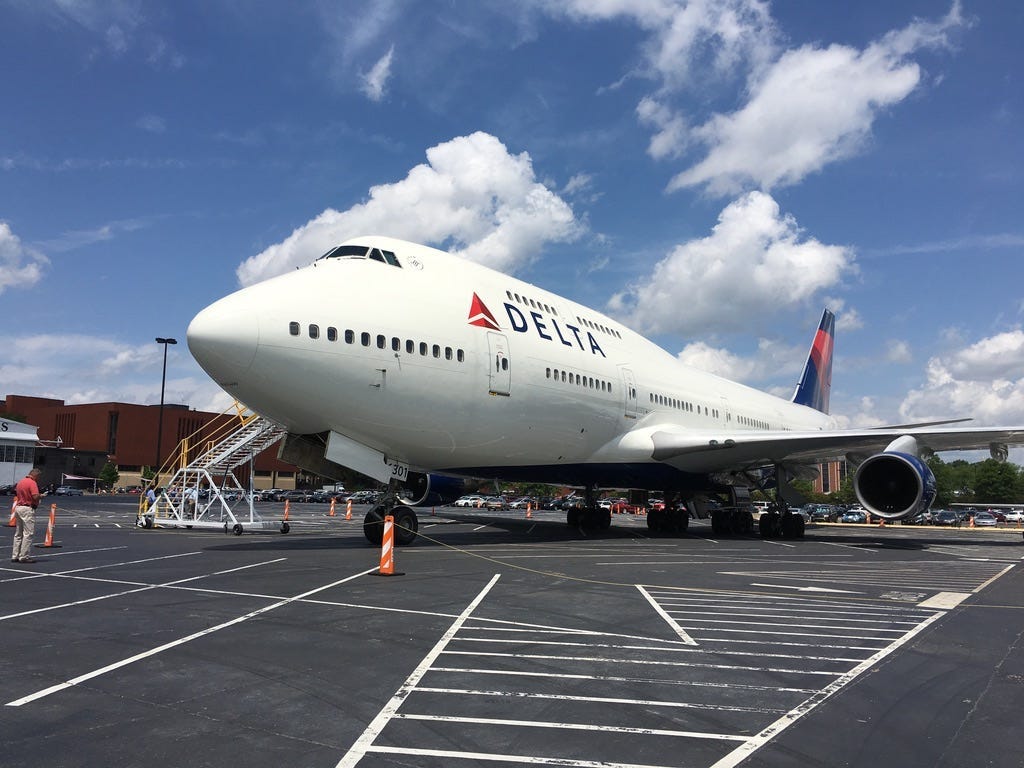
While it is much harder these days to fly on the jumbo jet, several can still be explored as tourist attractions, like Delta Air Lines' 747 Museum in Atlanta, Georgia…
Delta Air Lines
-
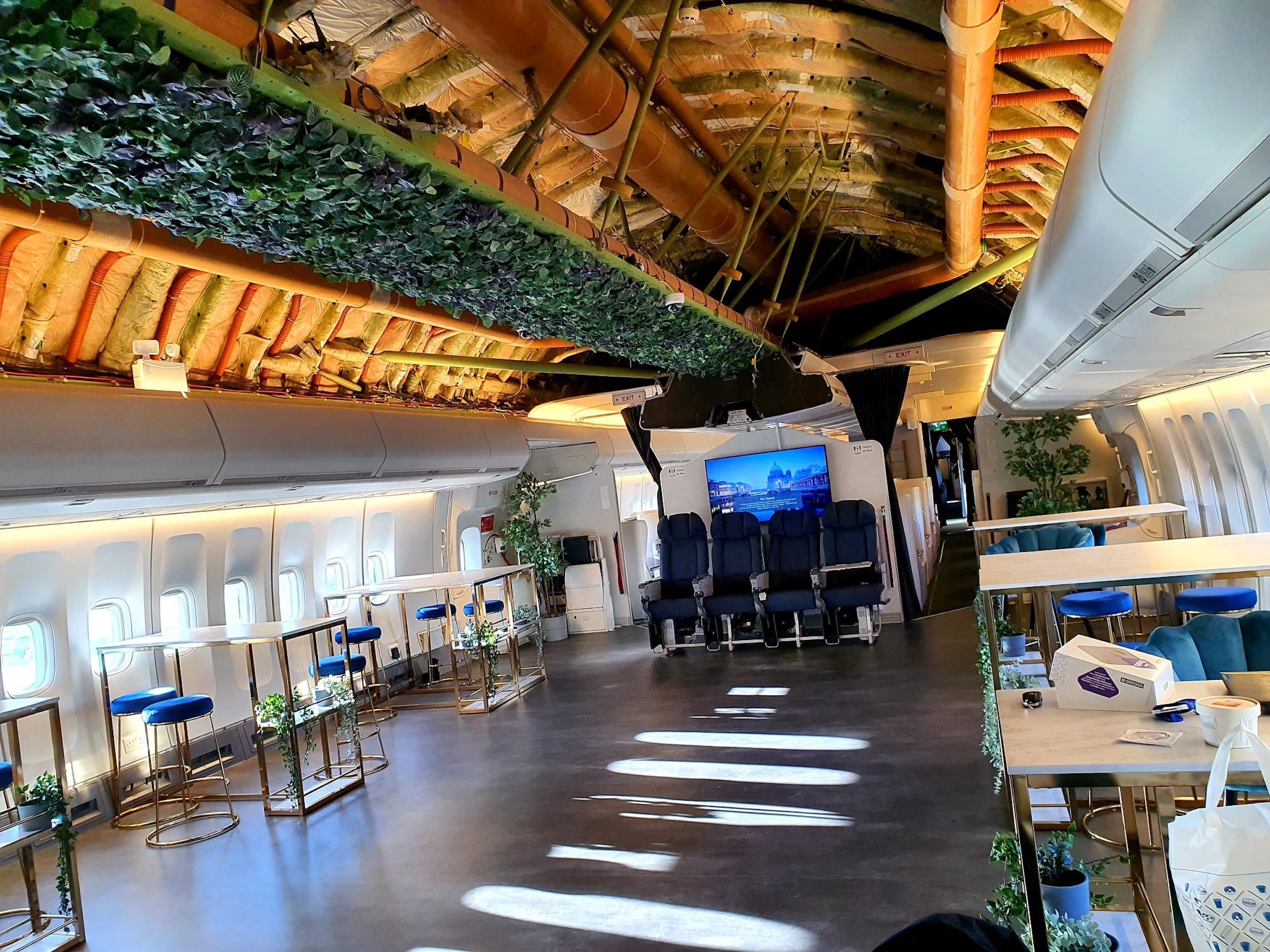
…and the flightless British Airways 747 "party plane" in England.
Negus 747
